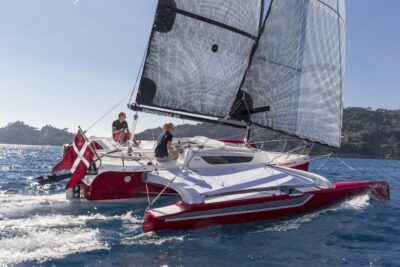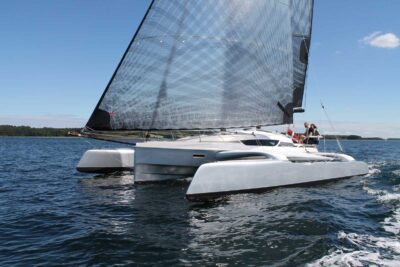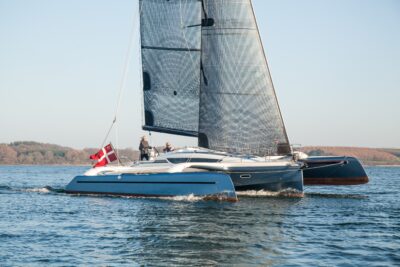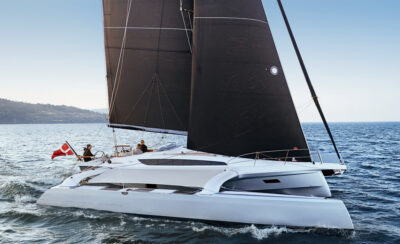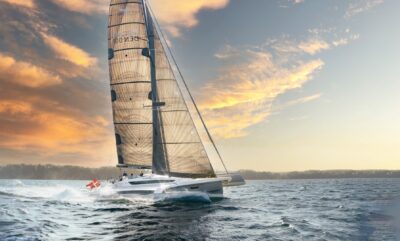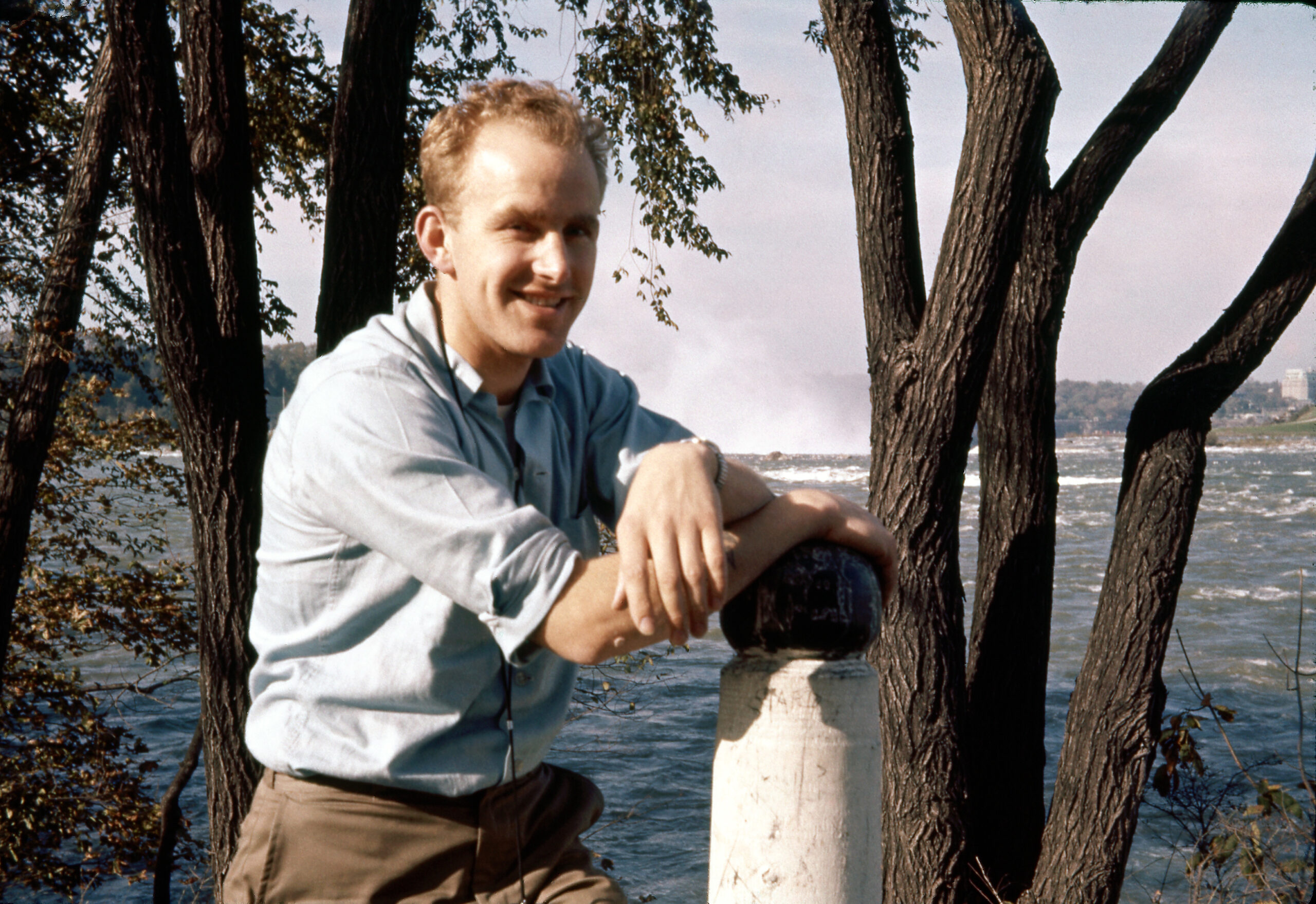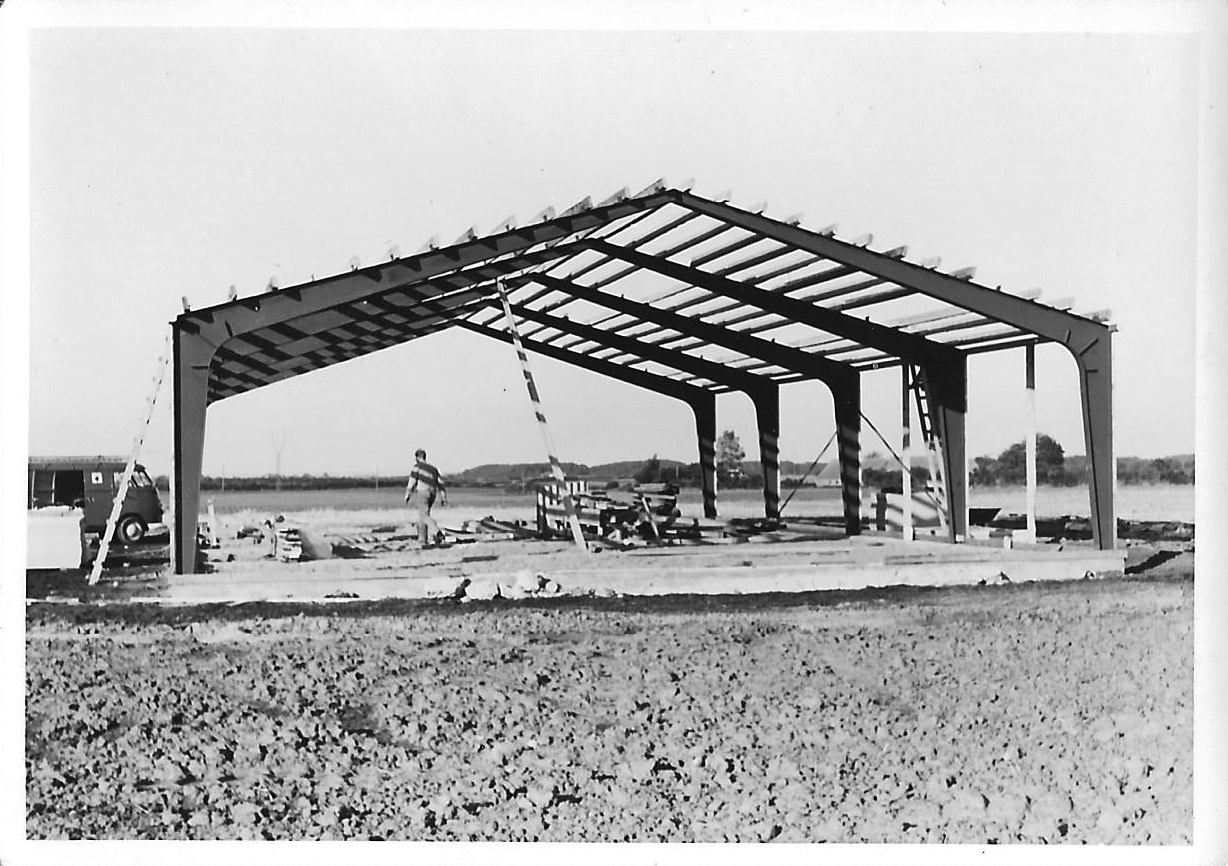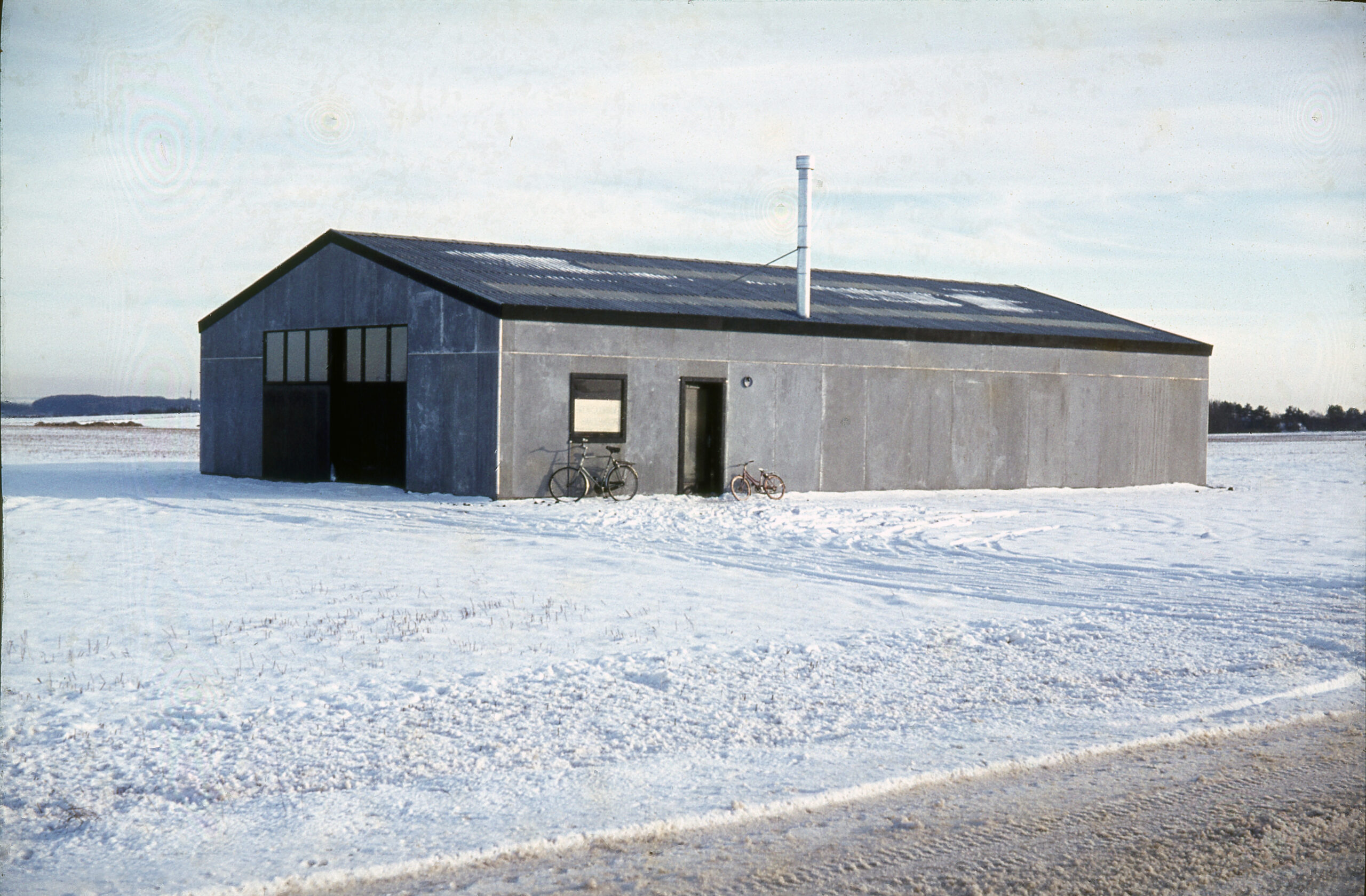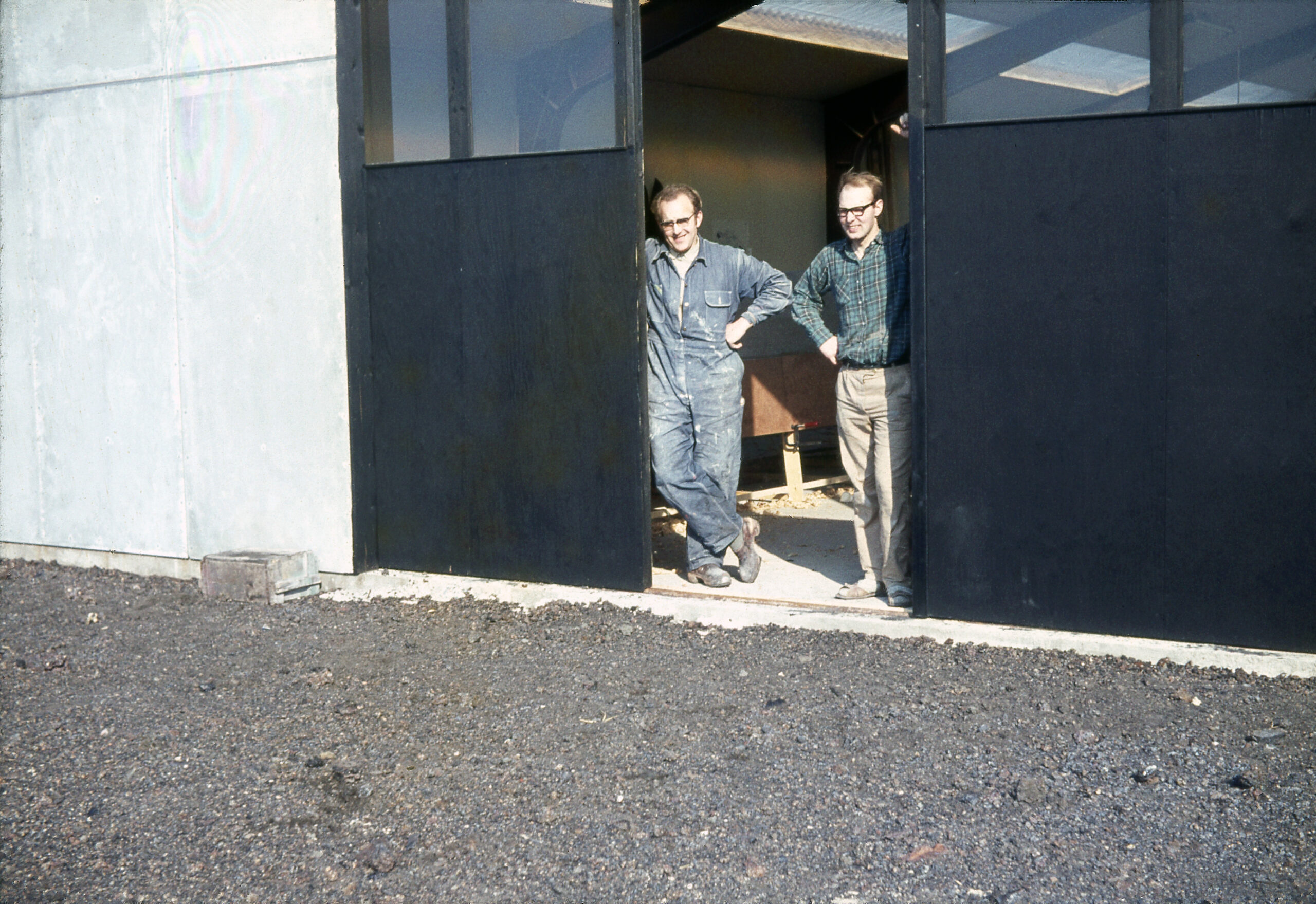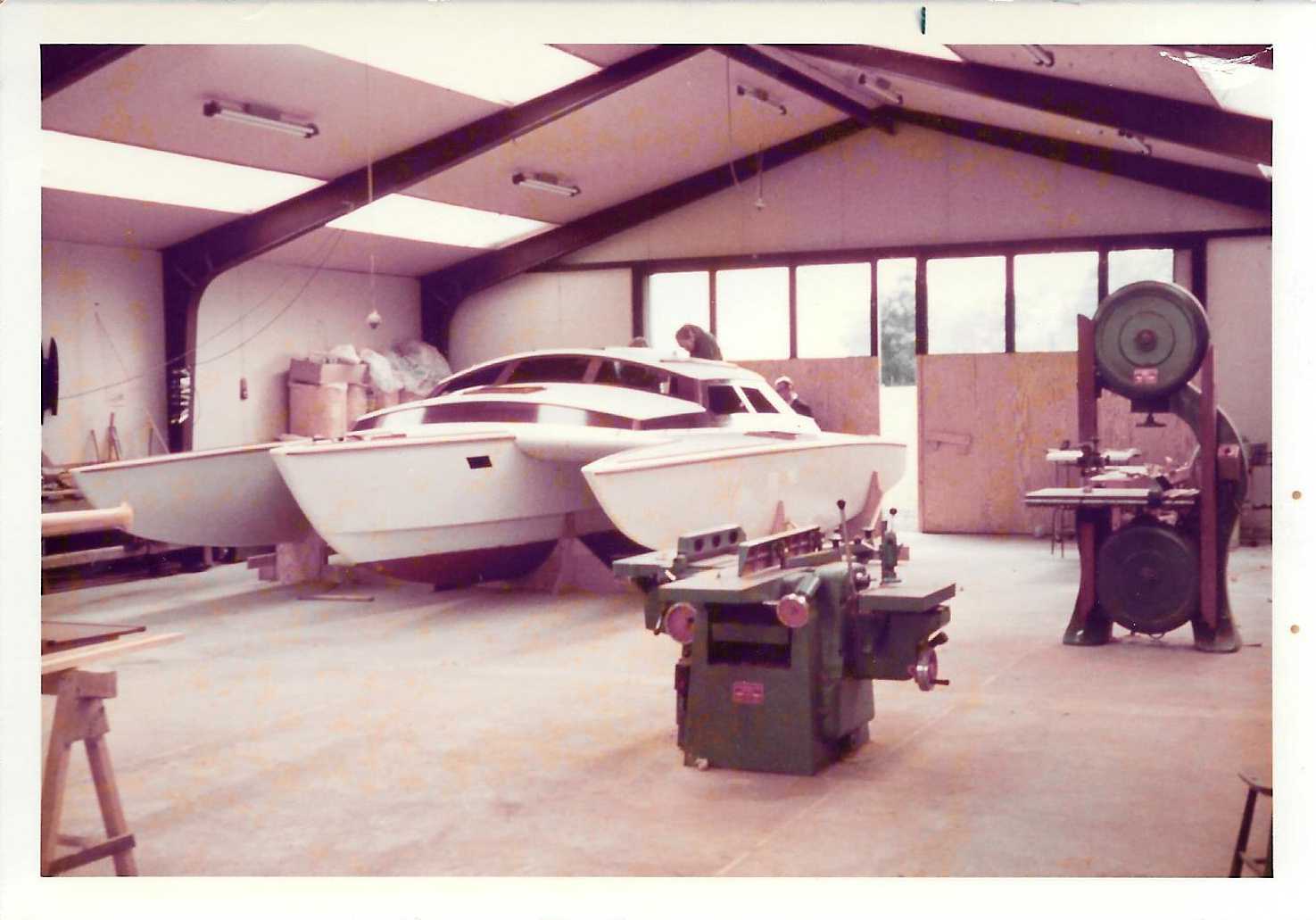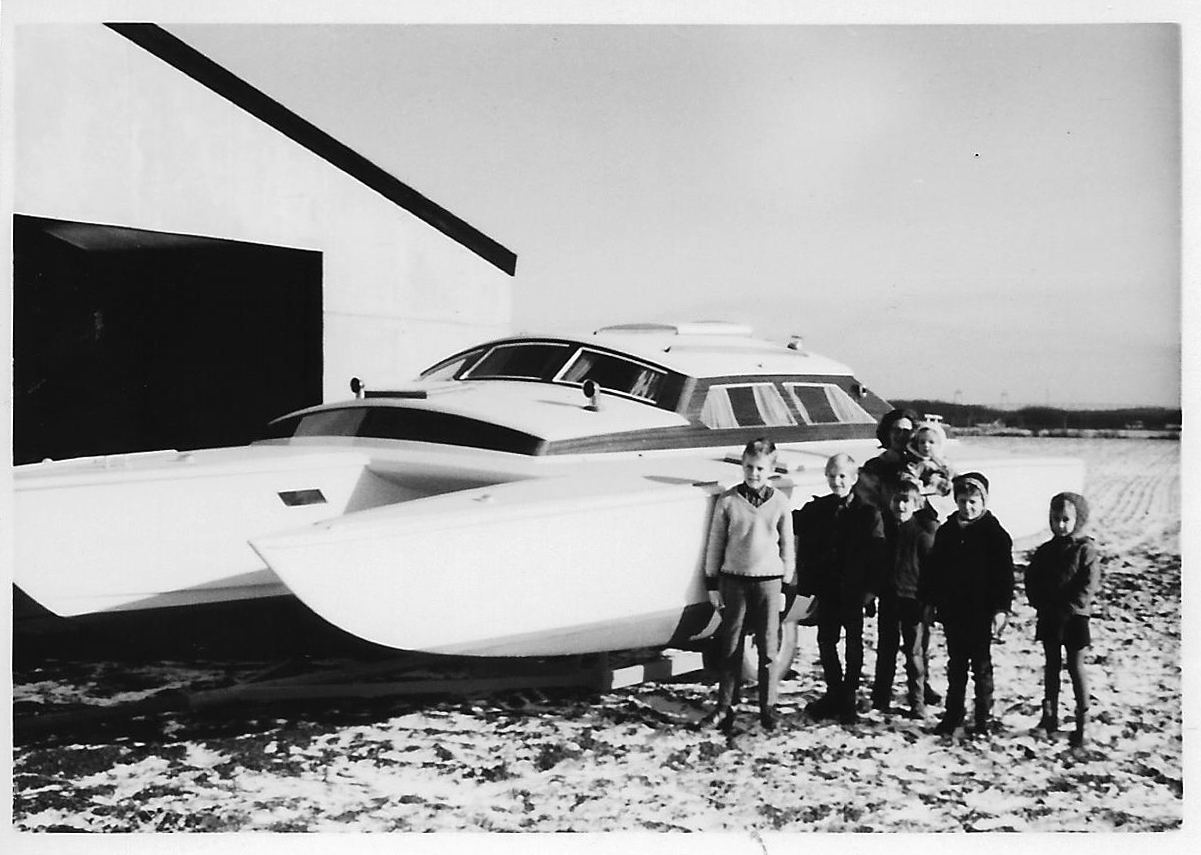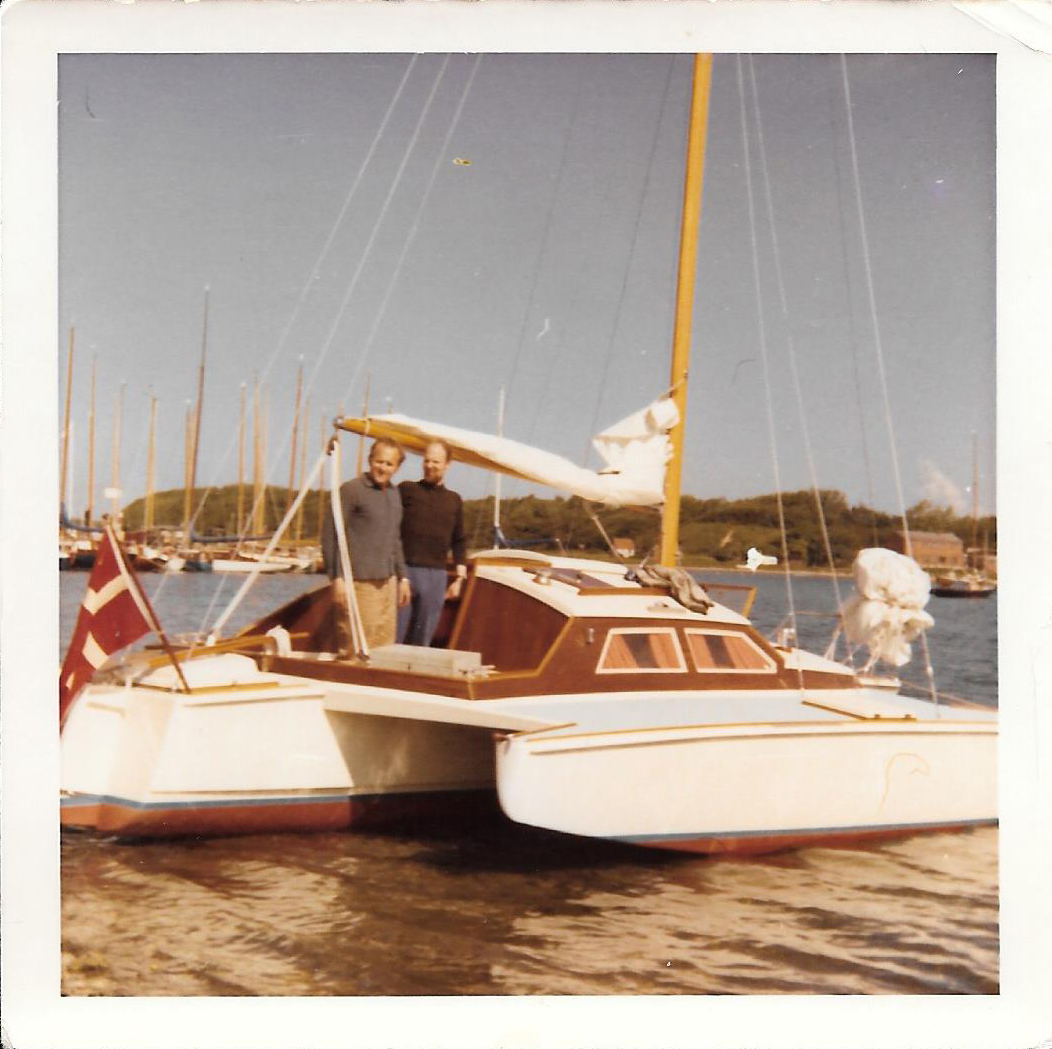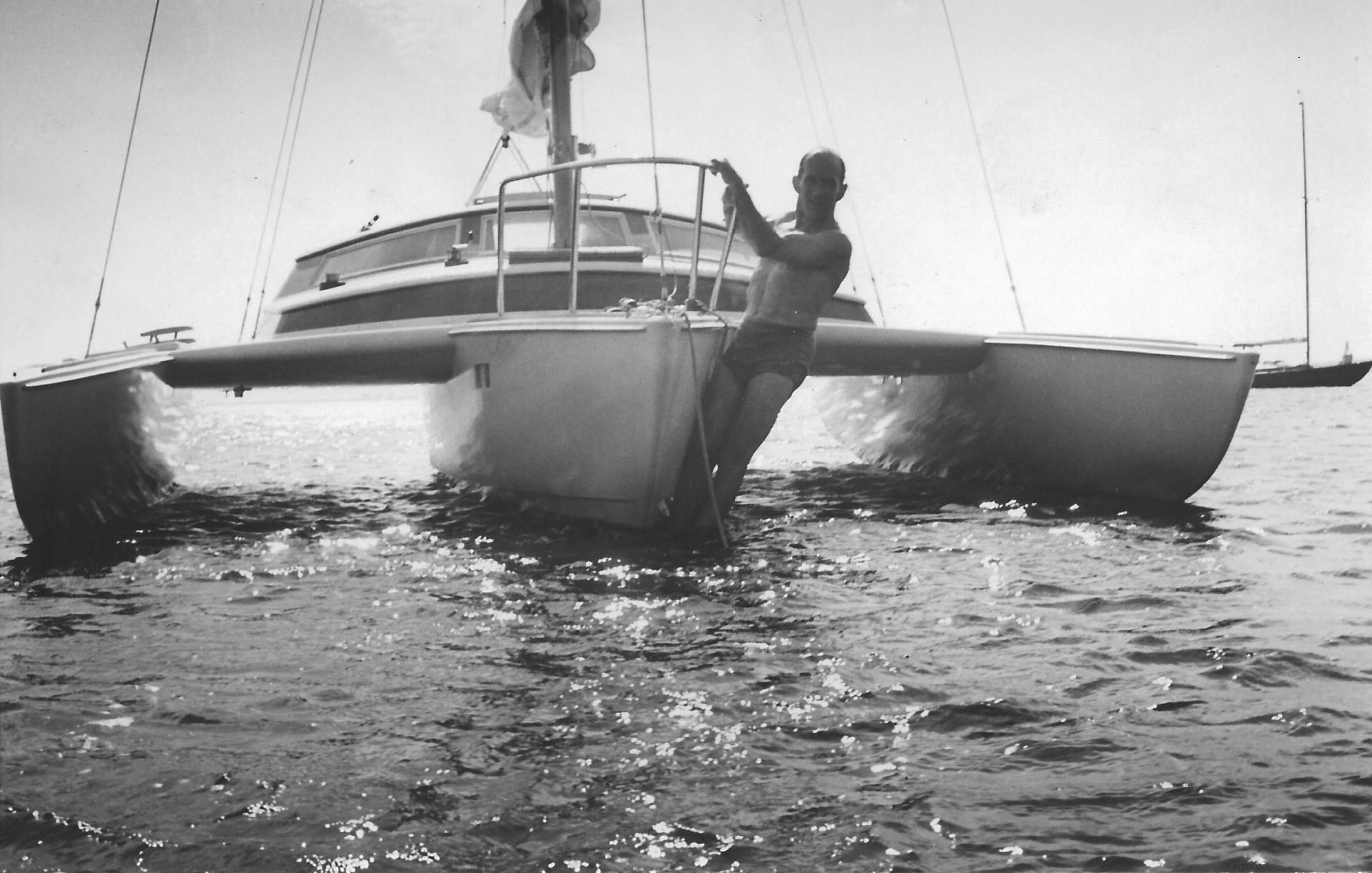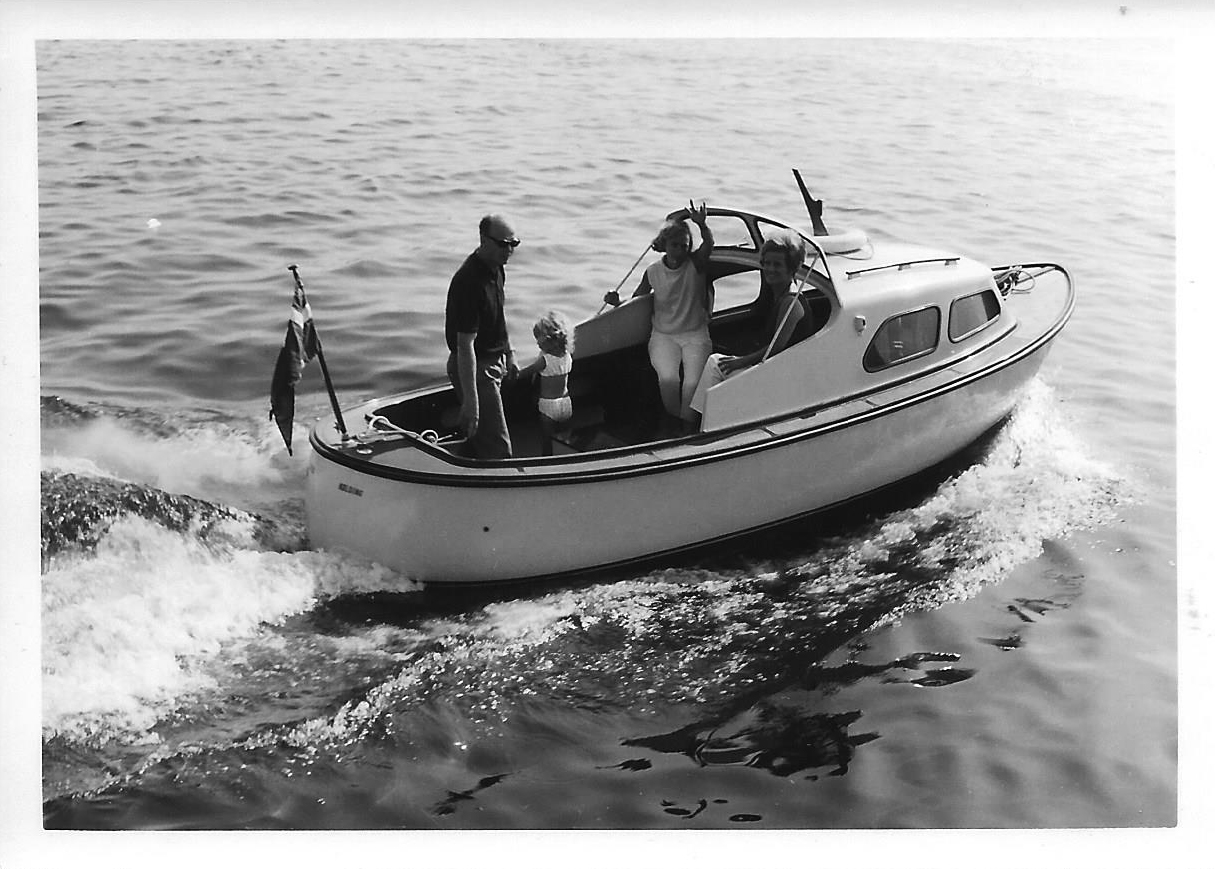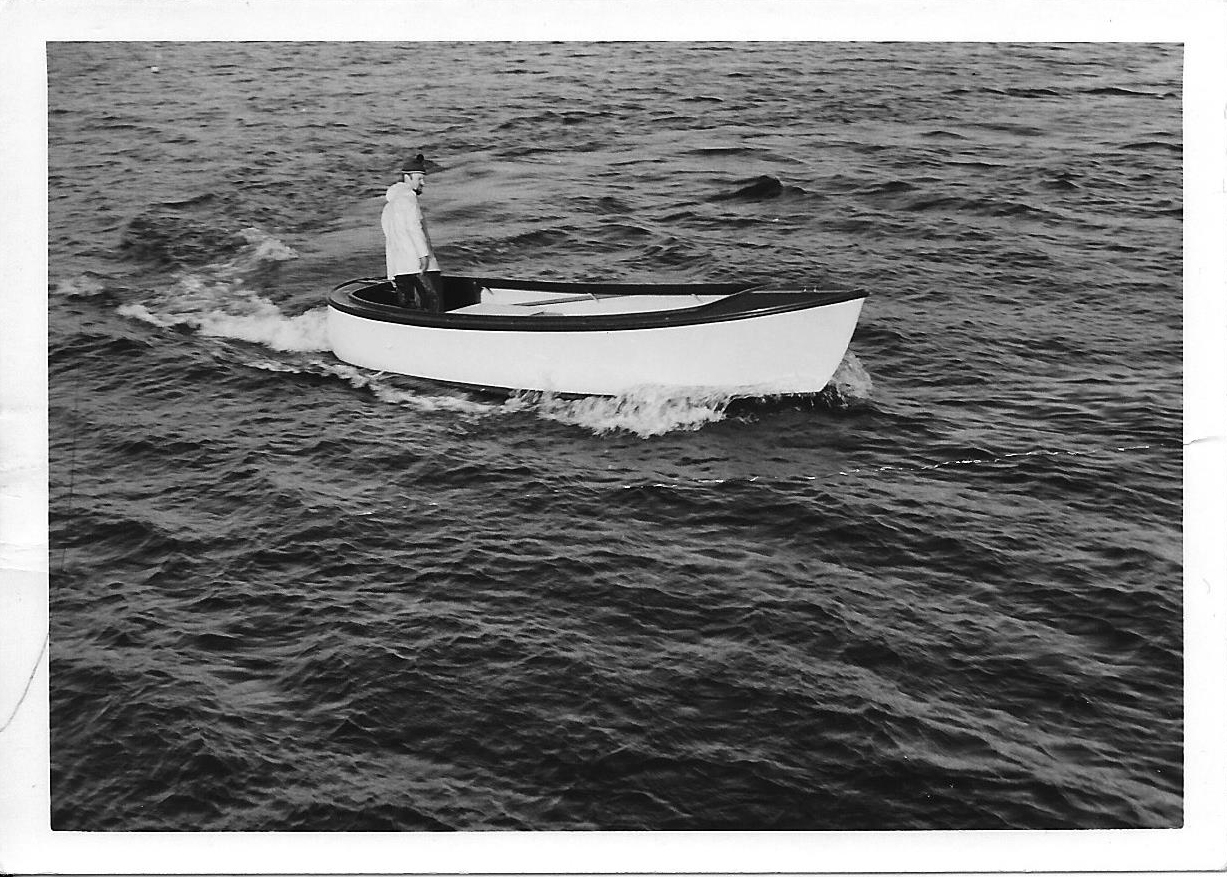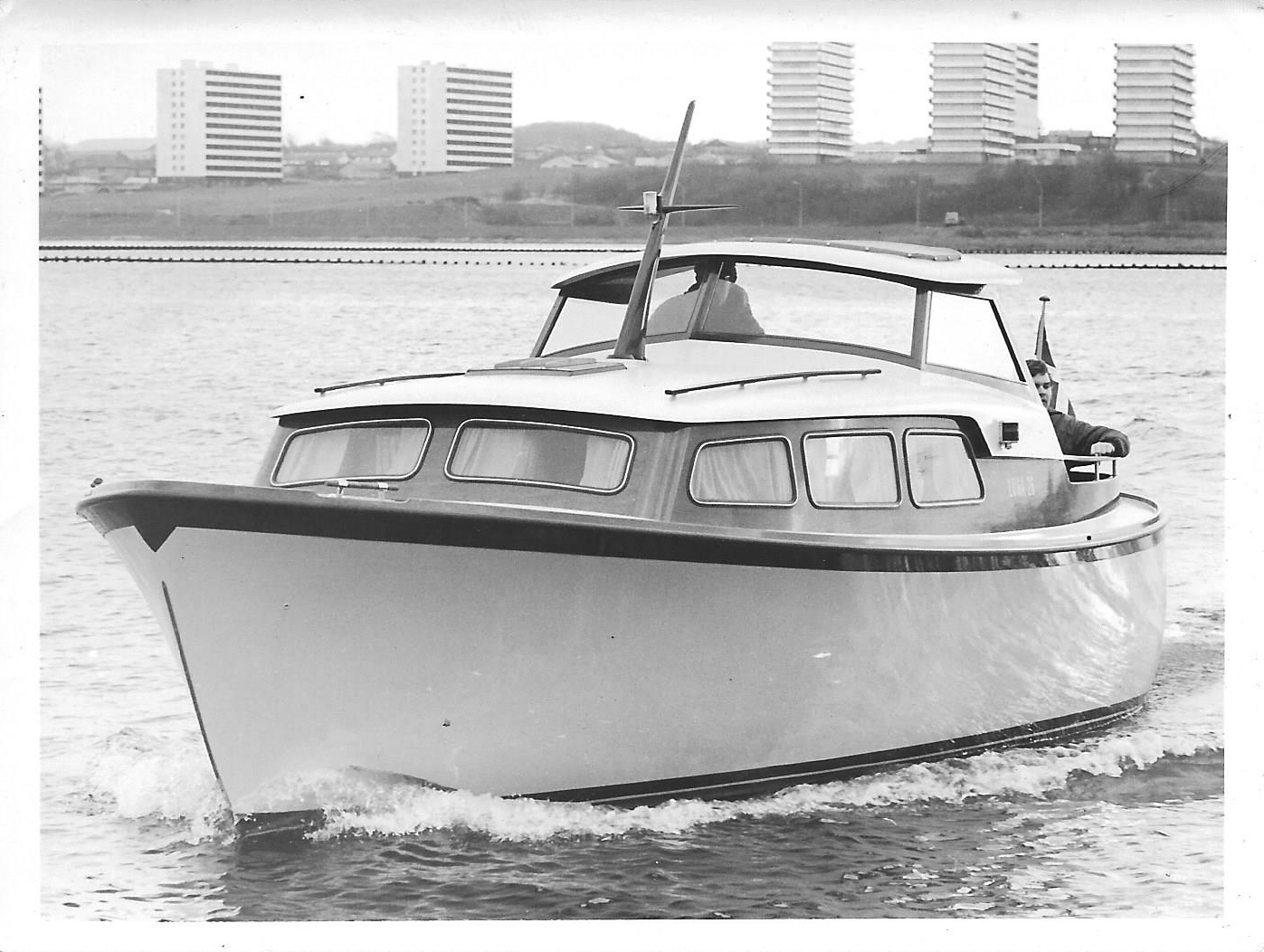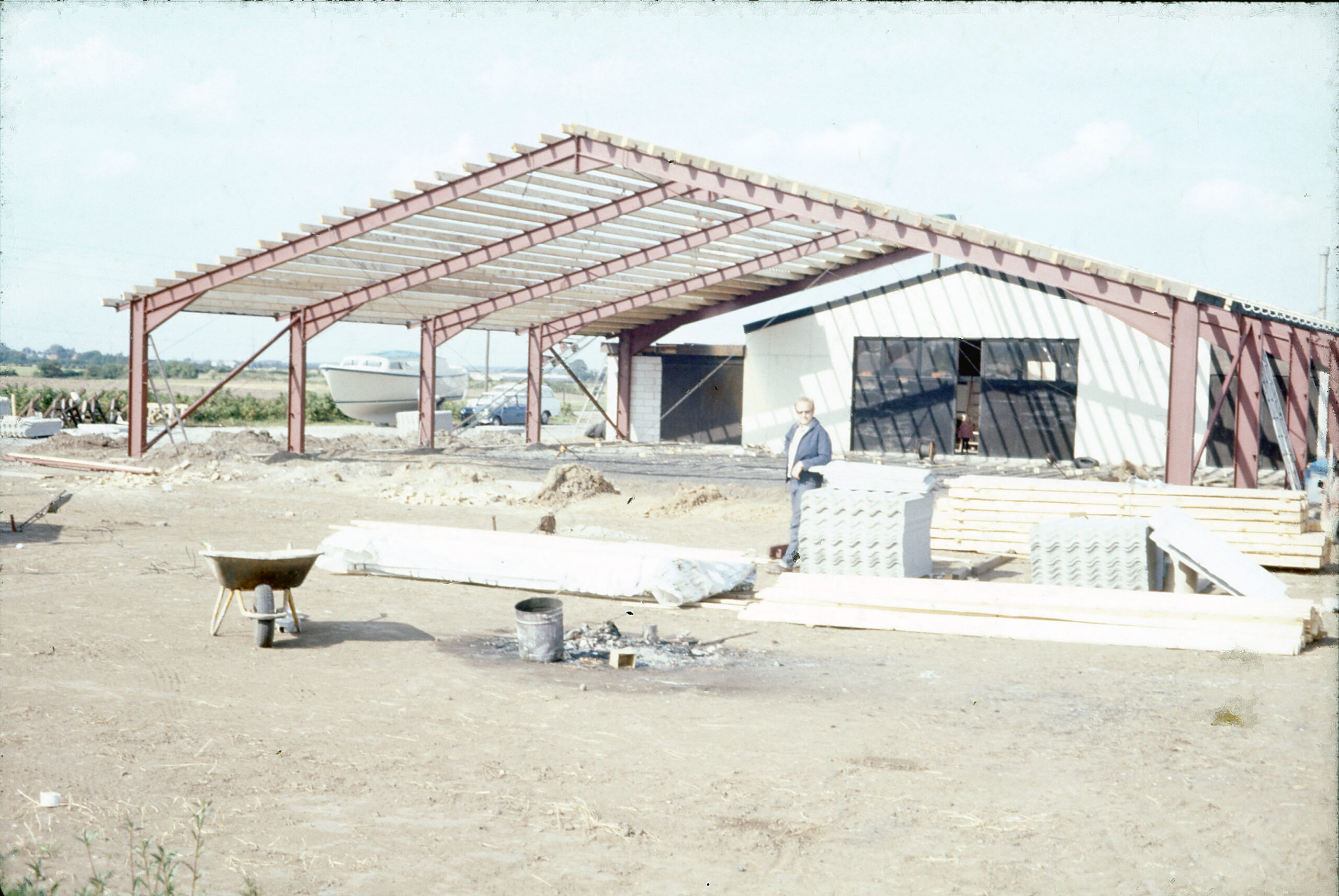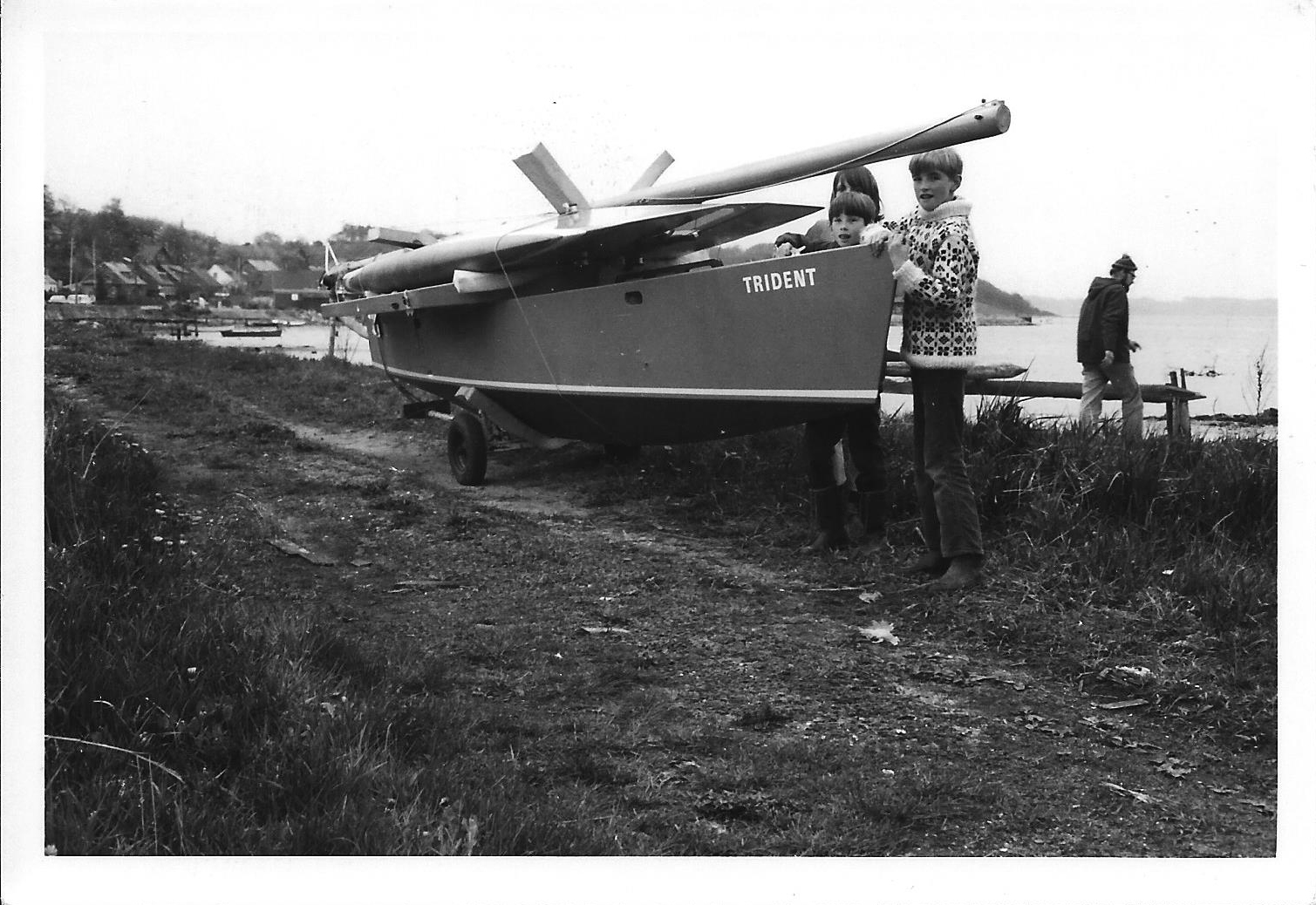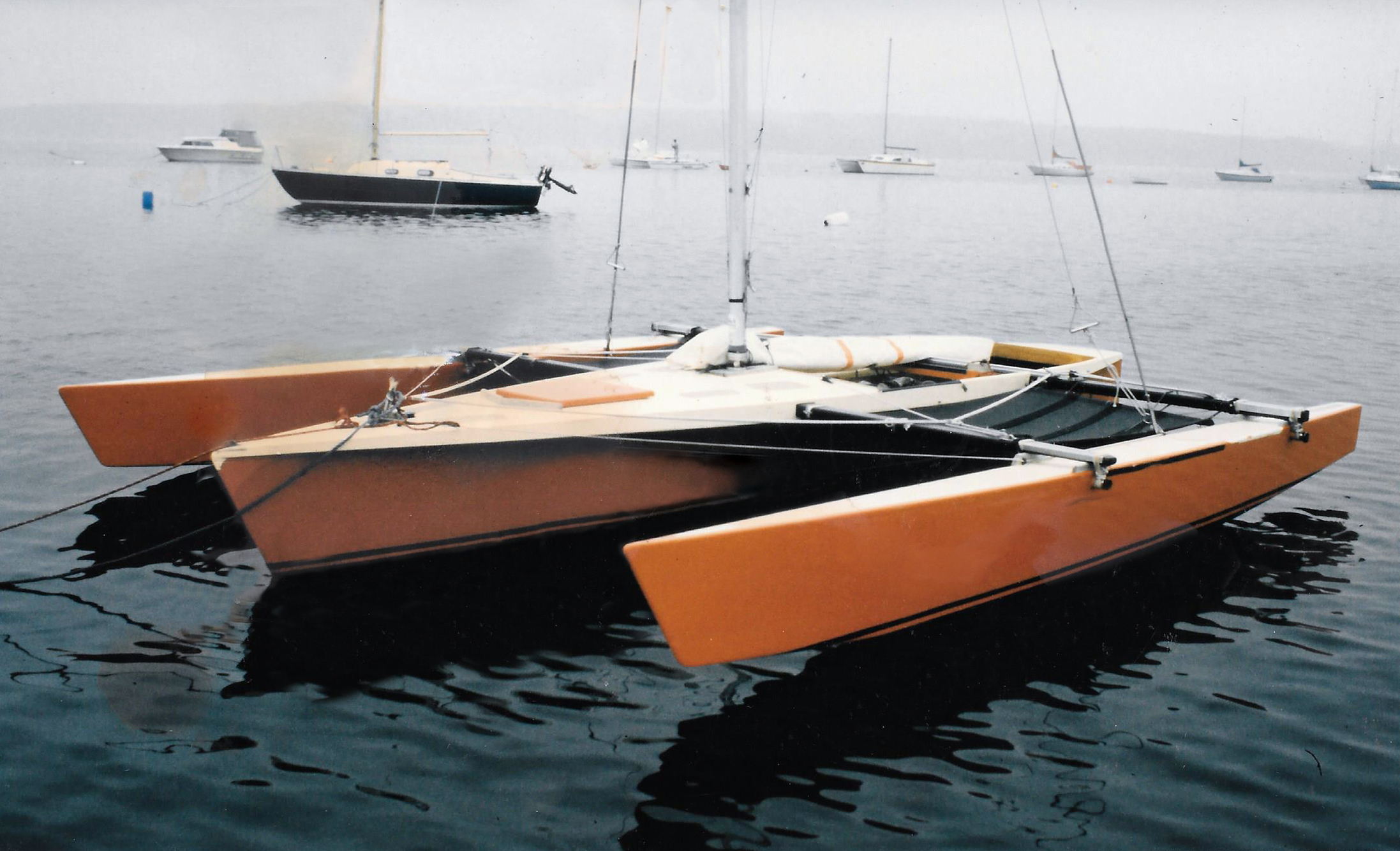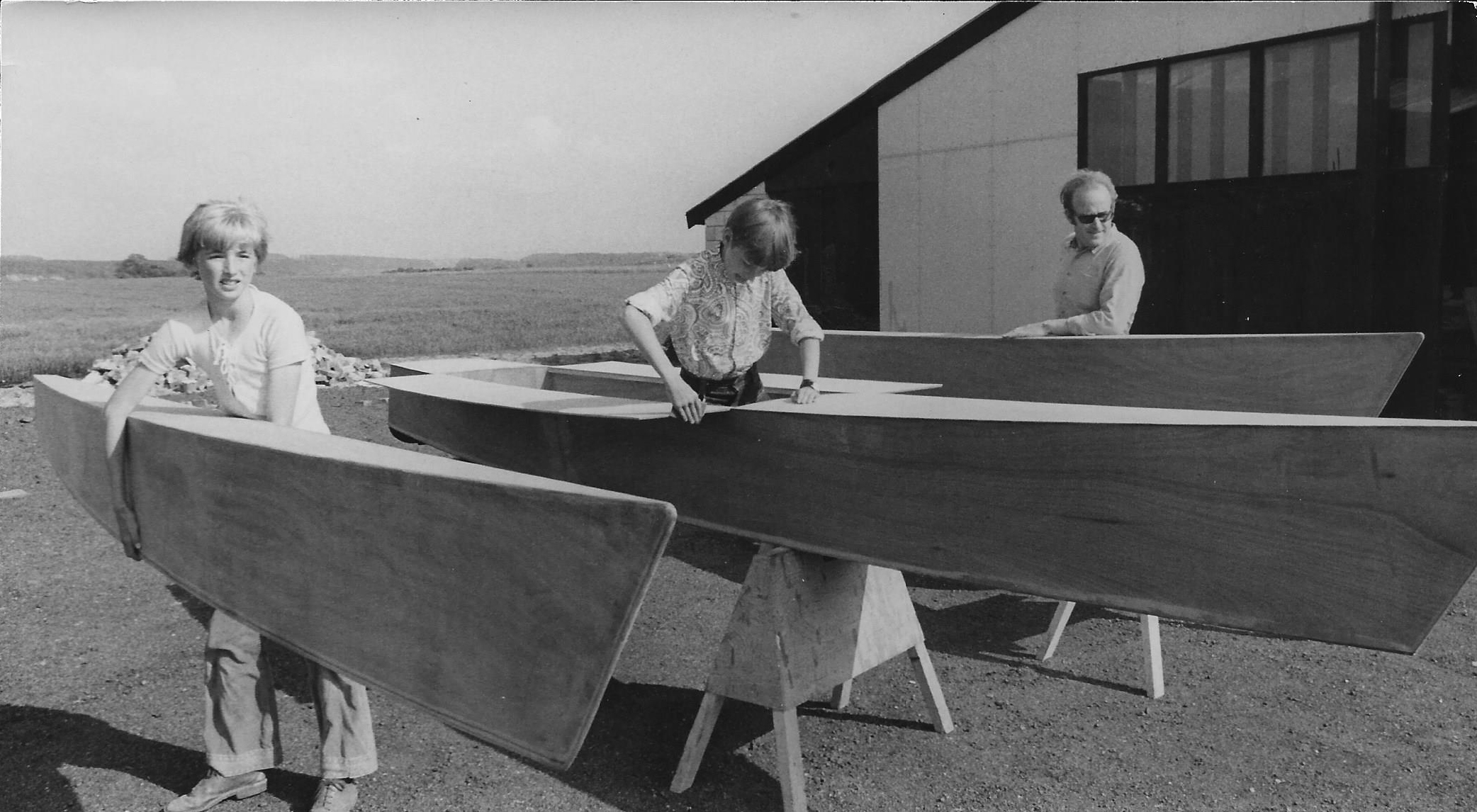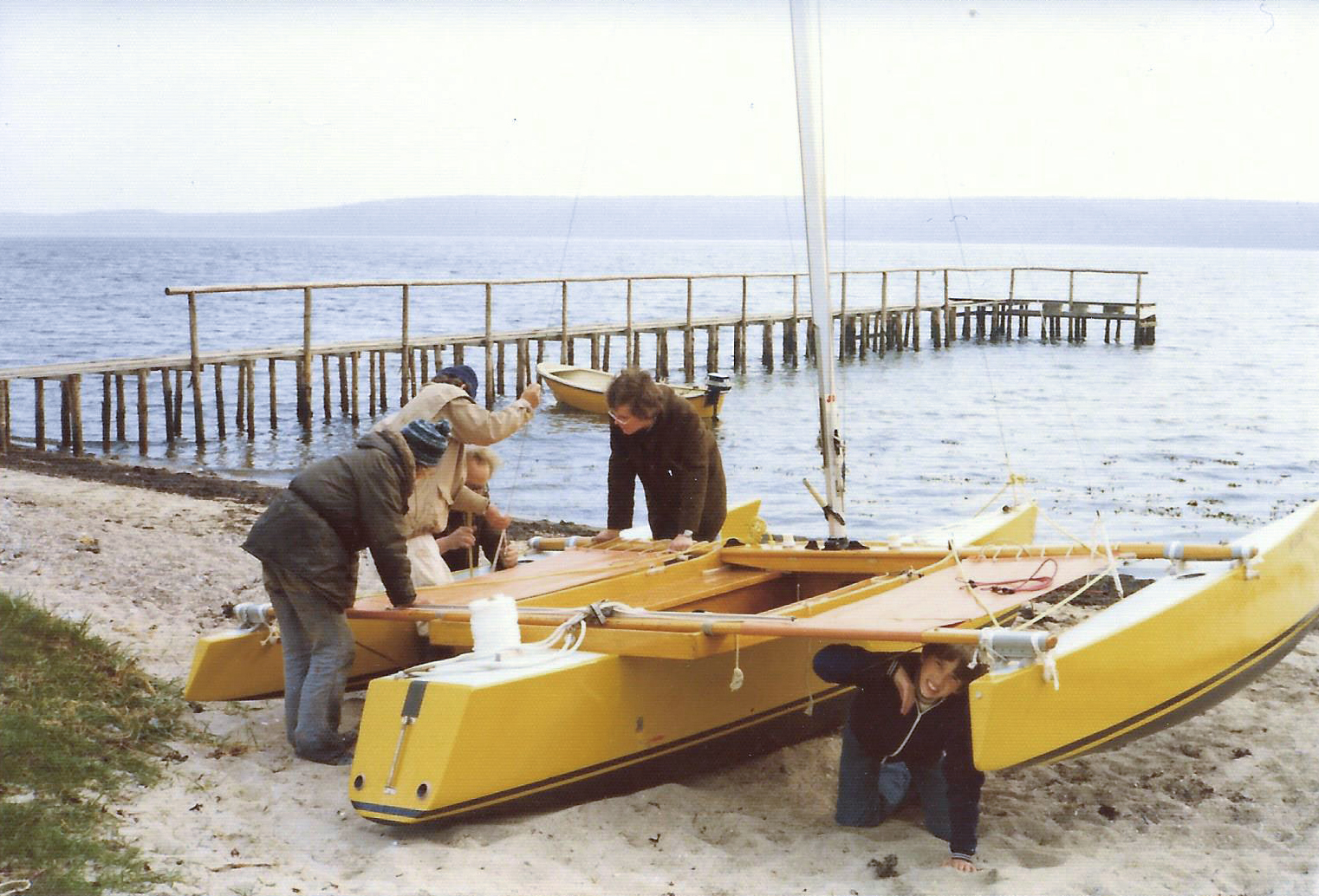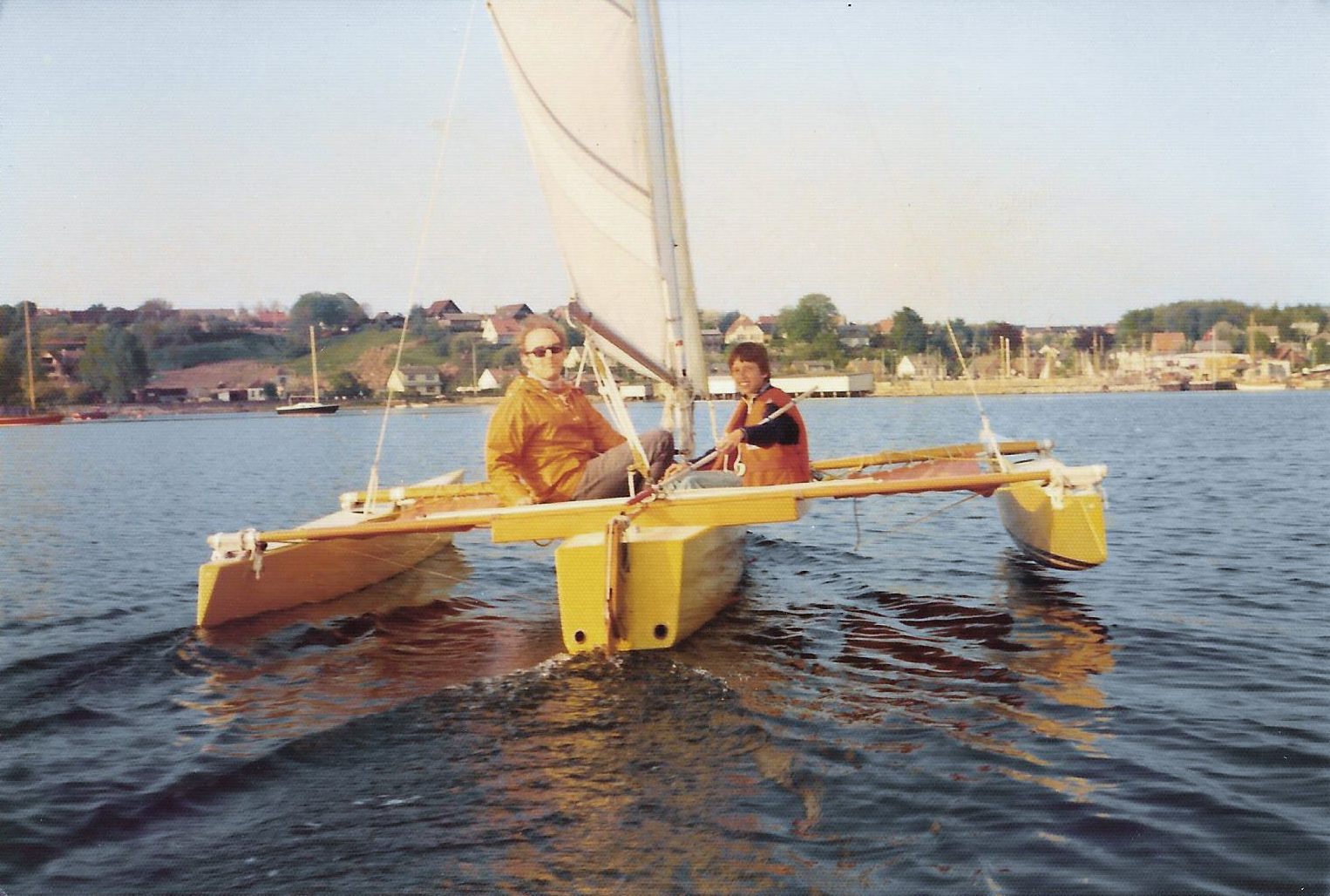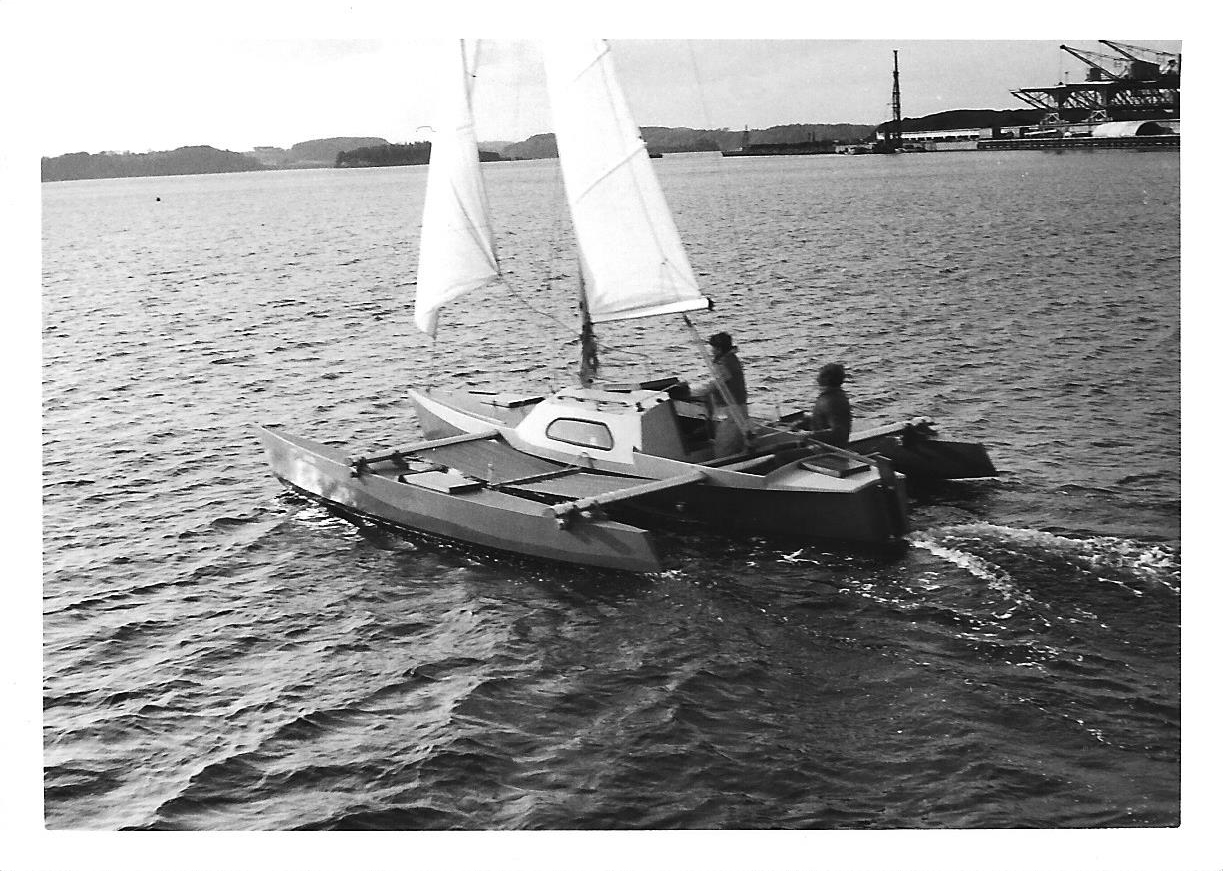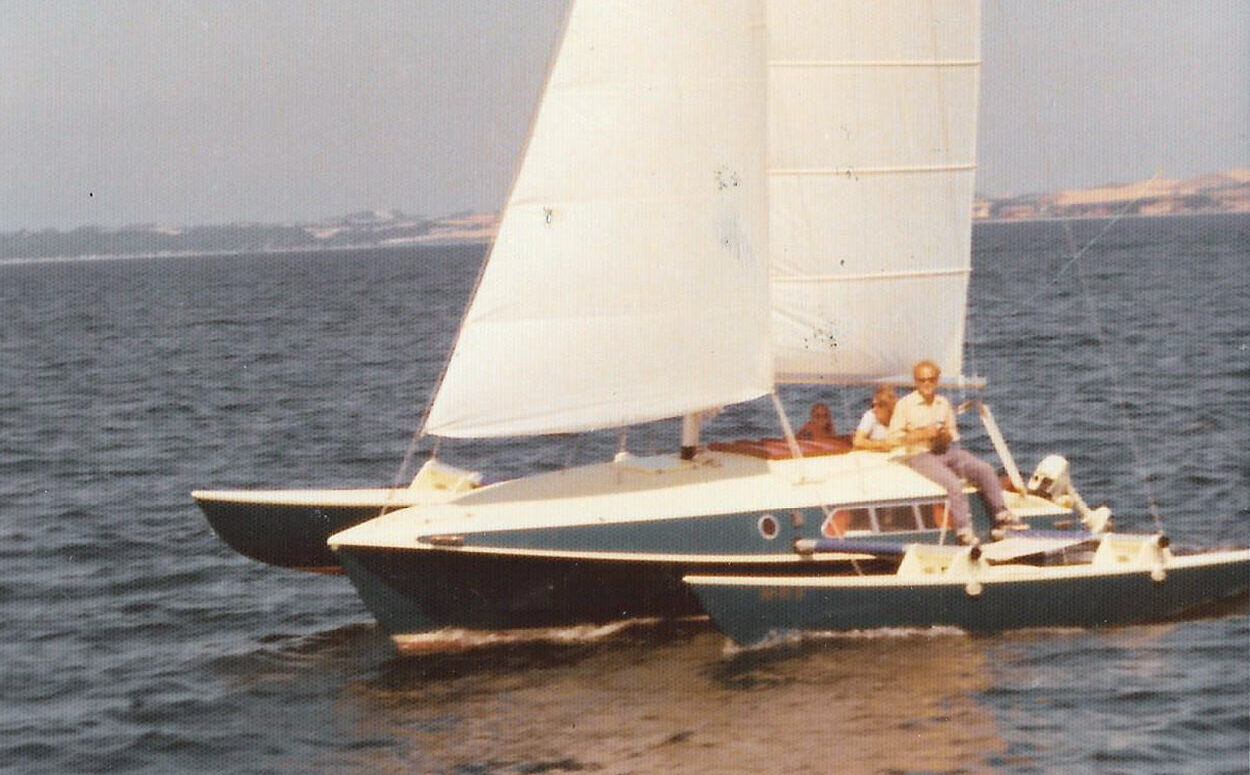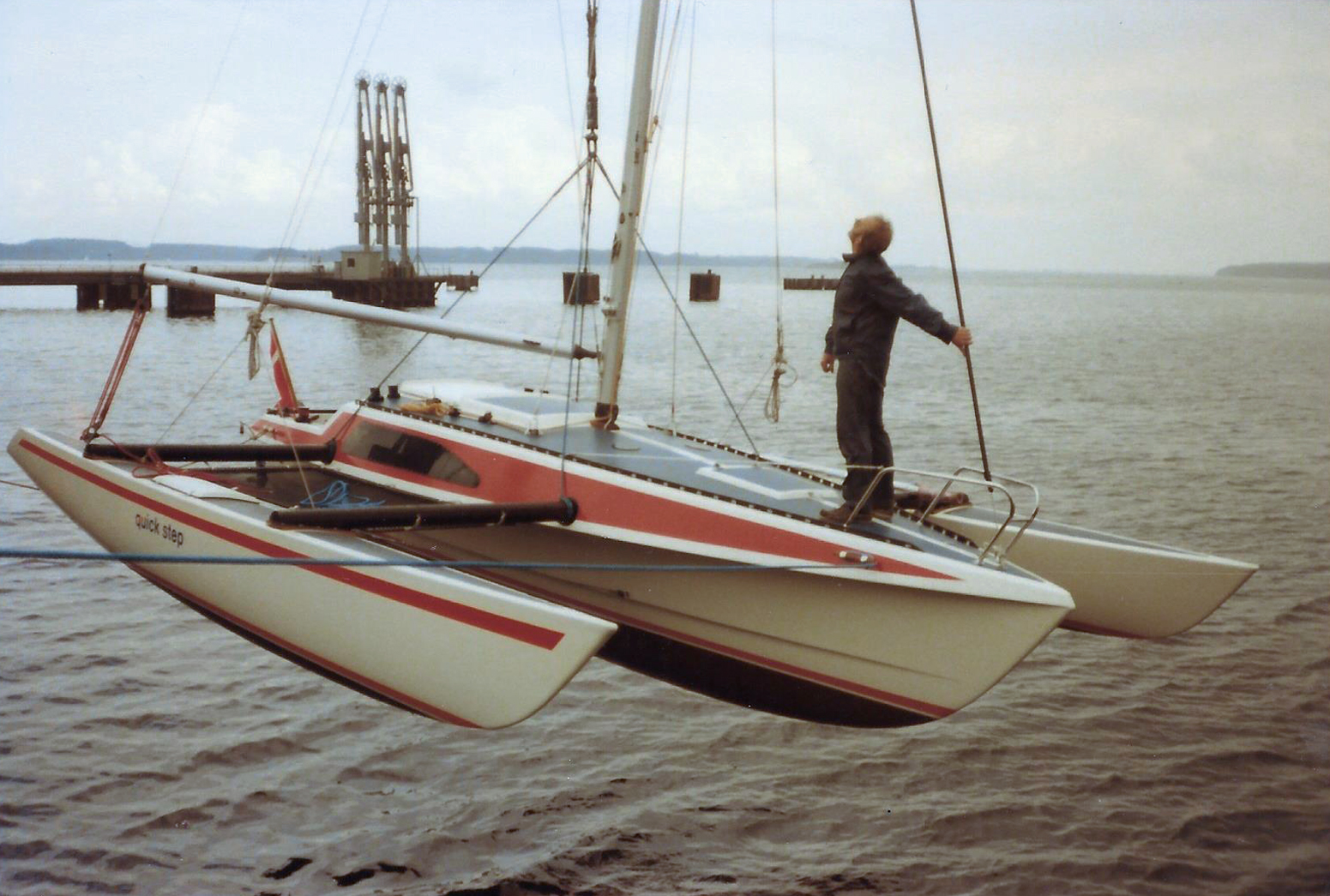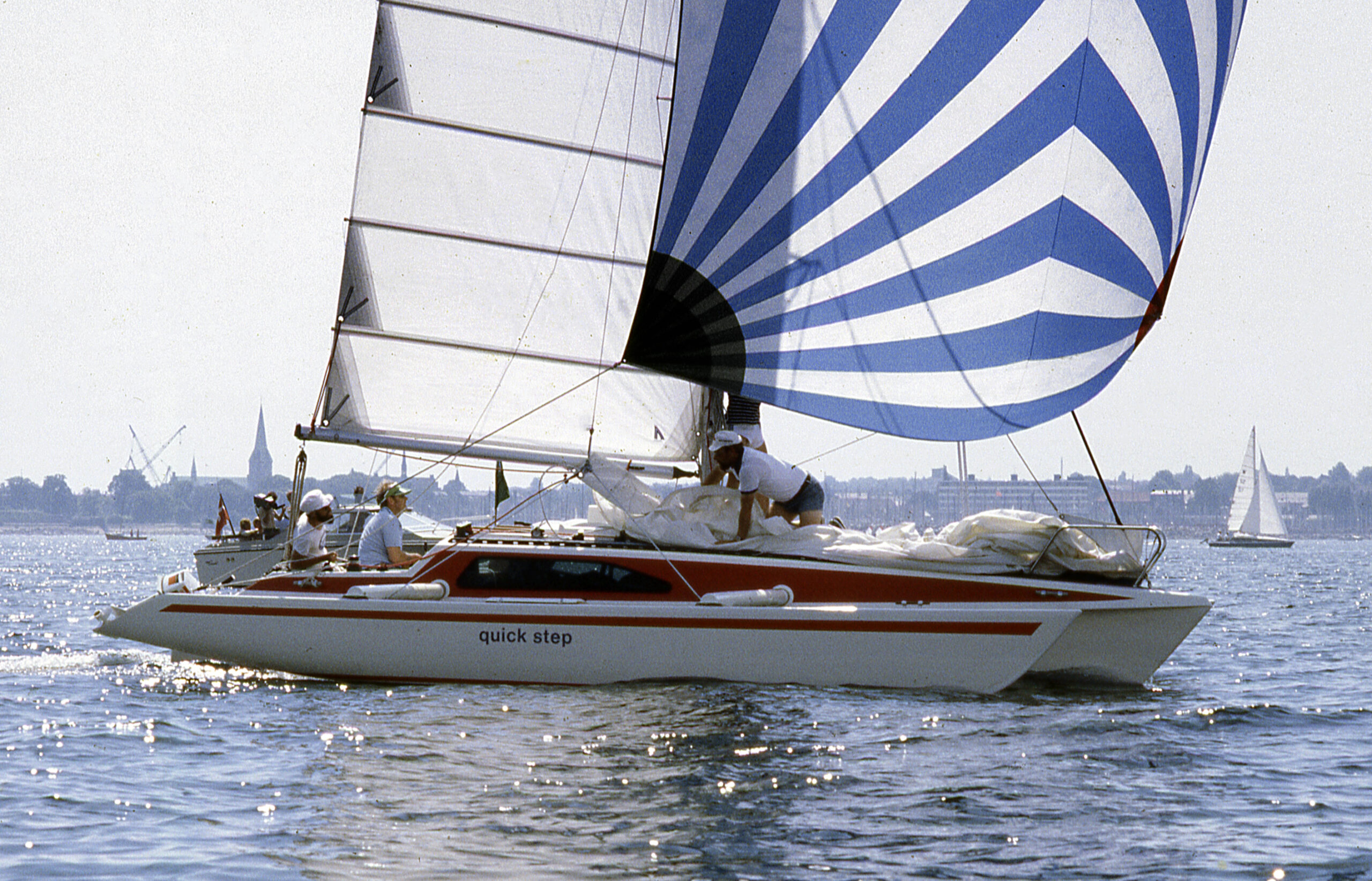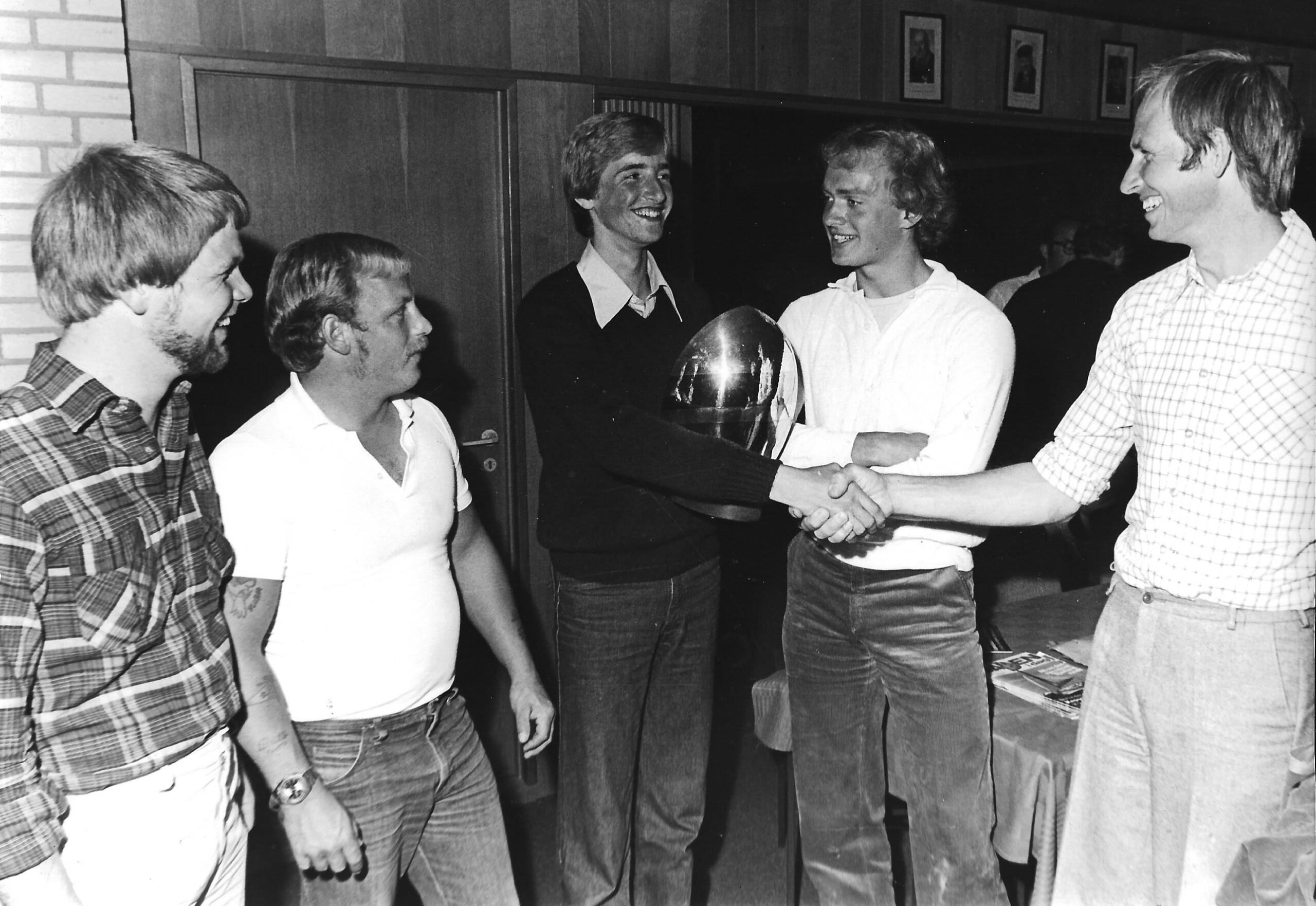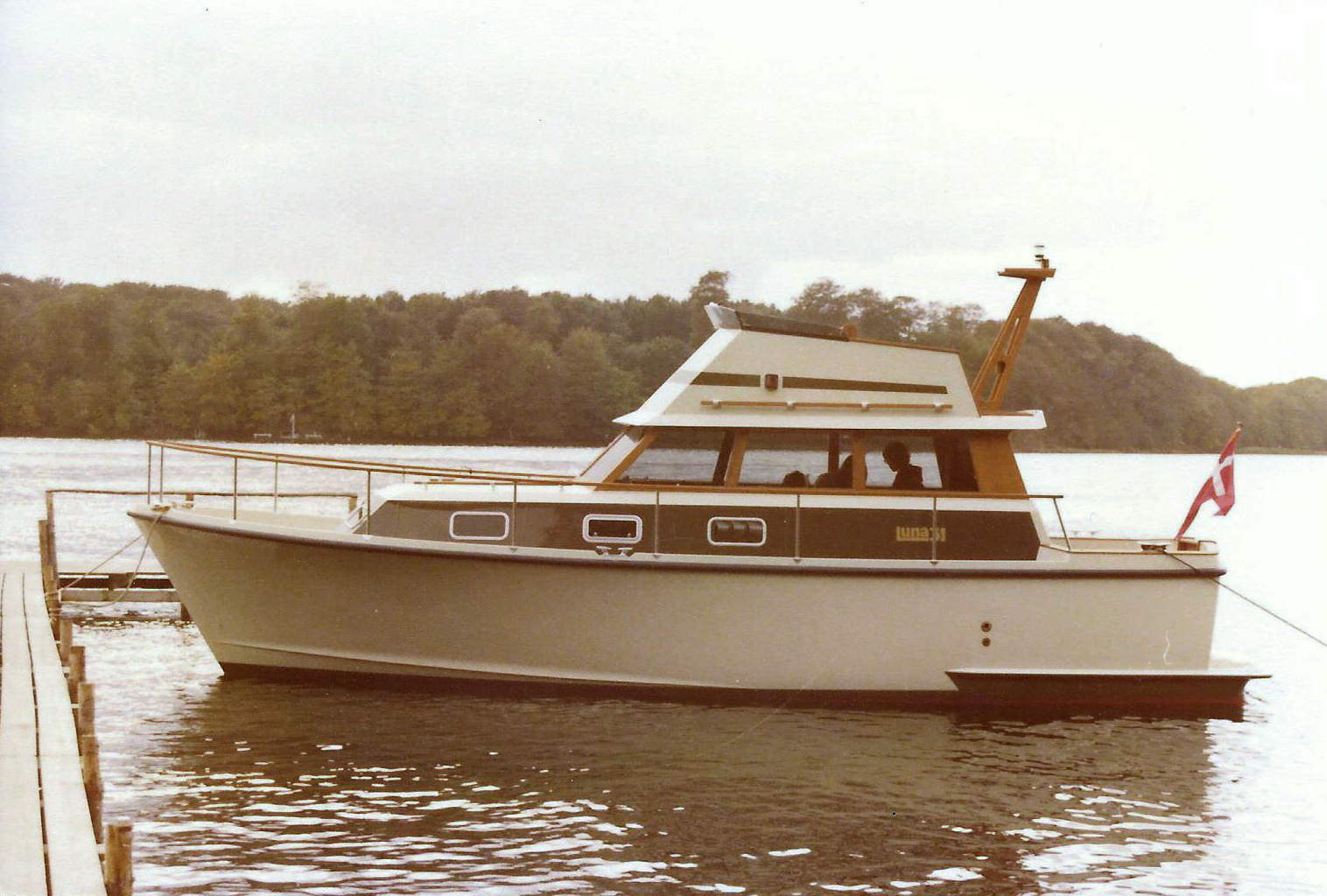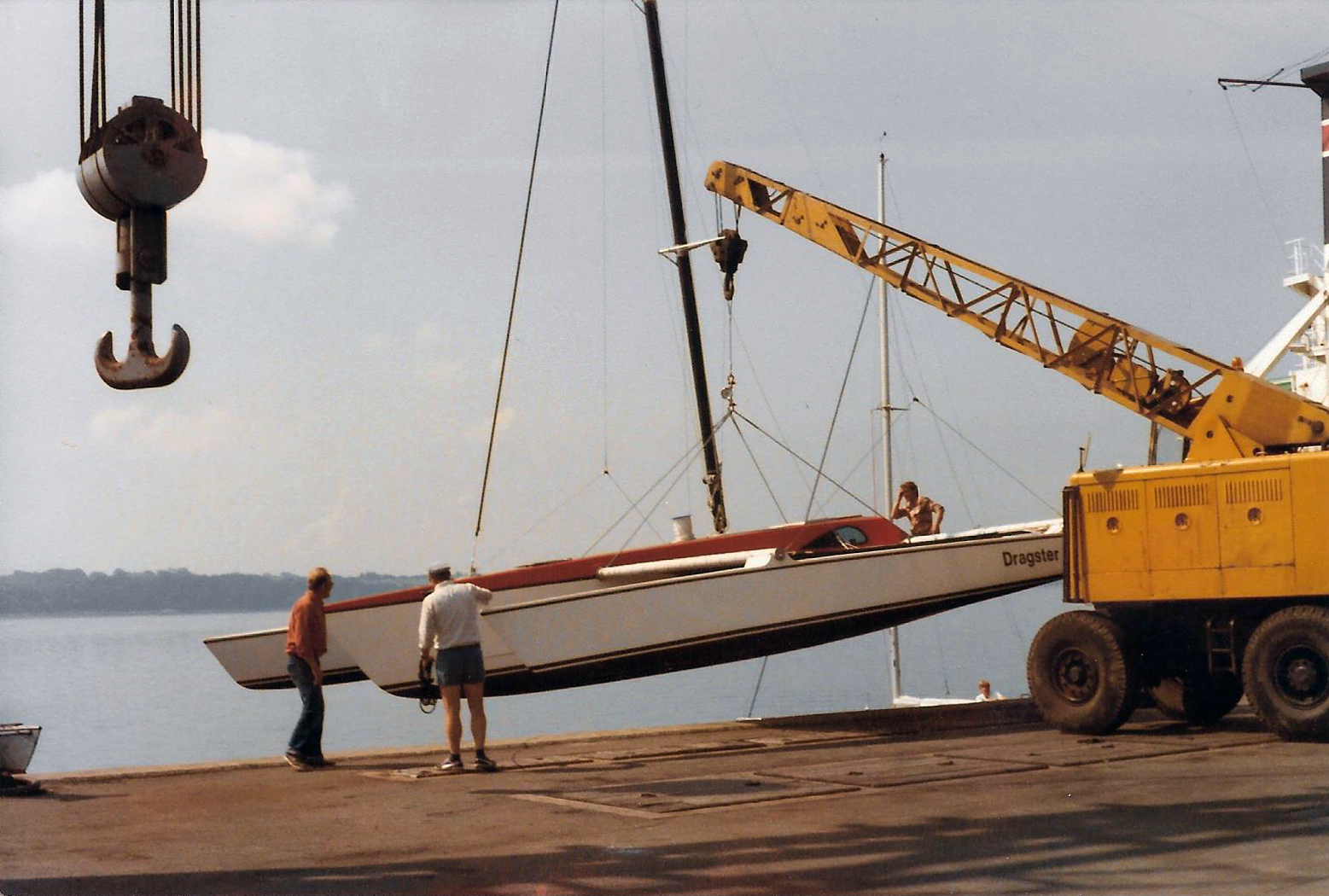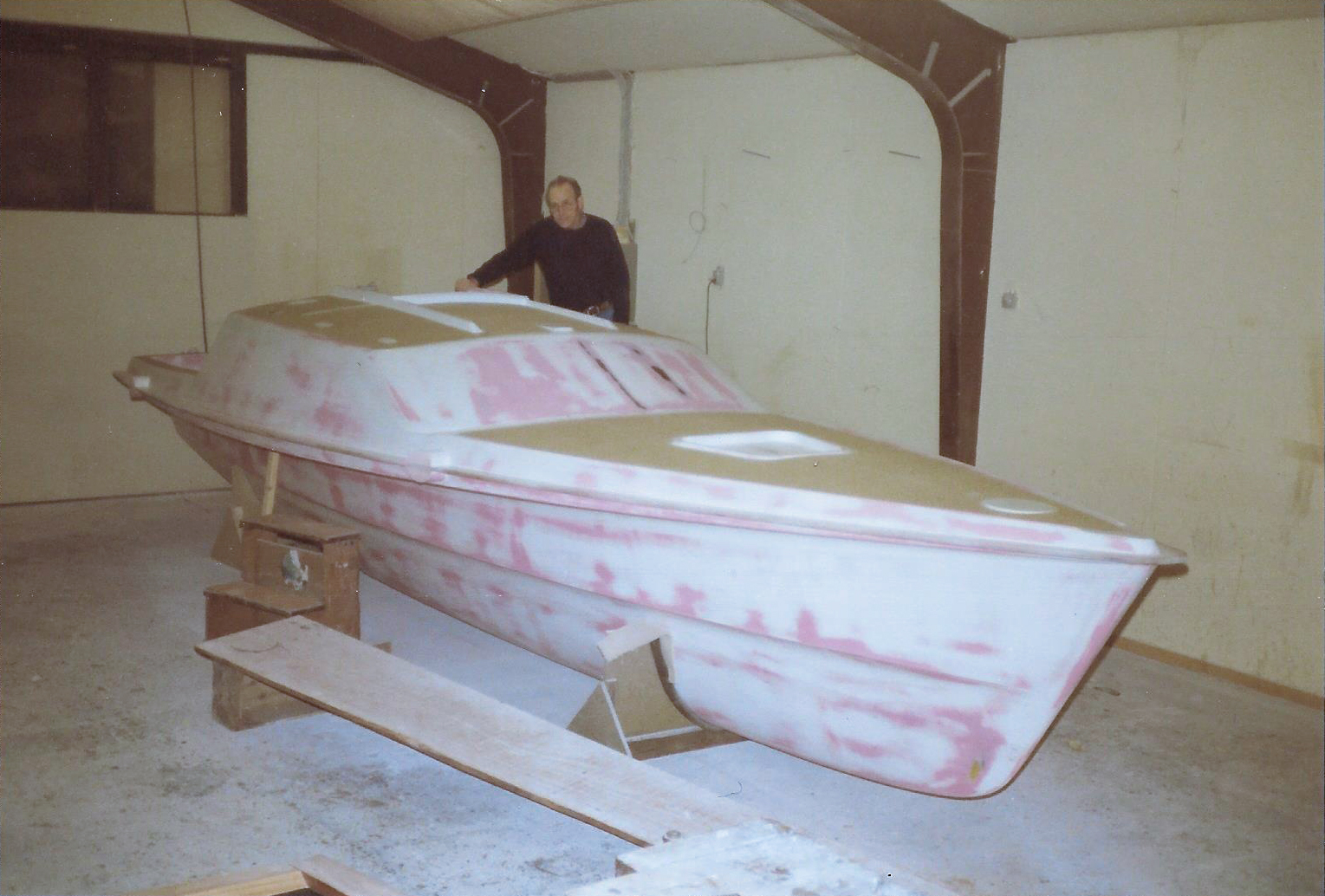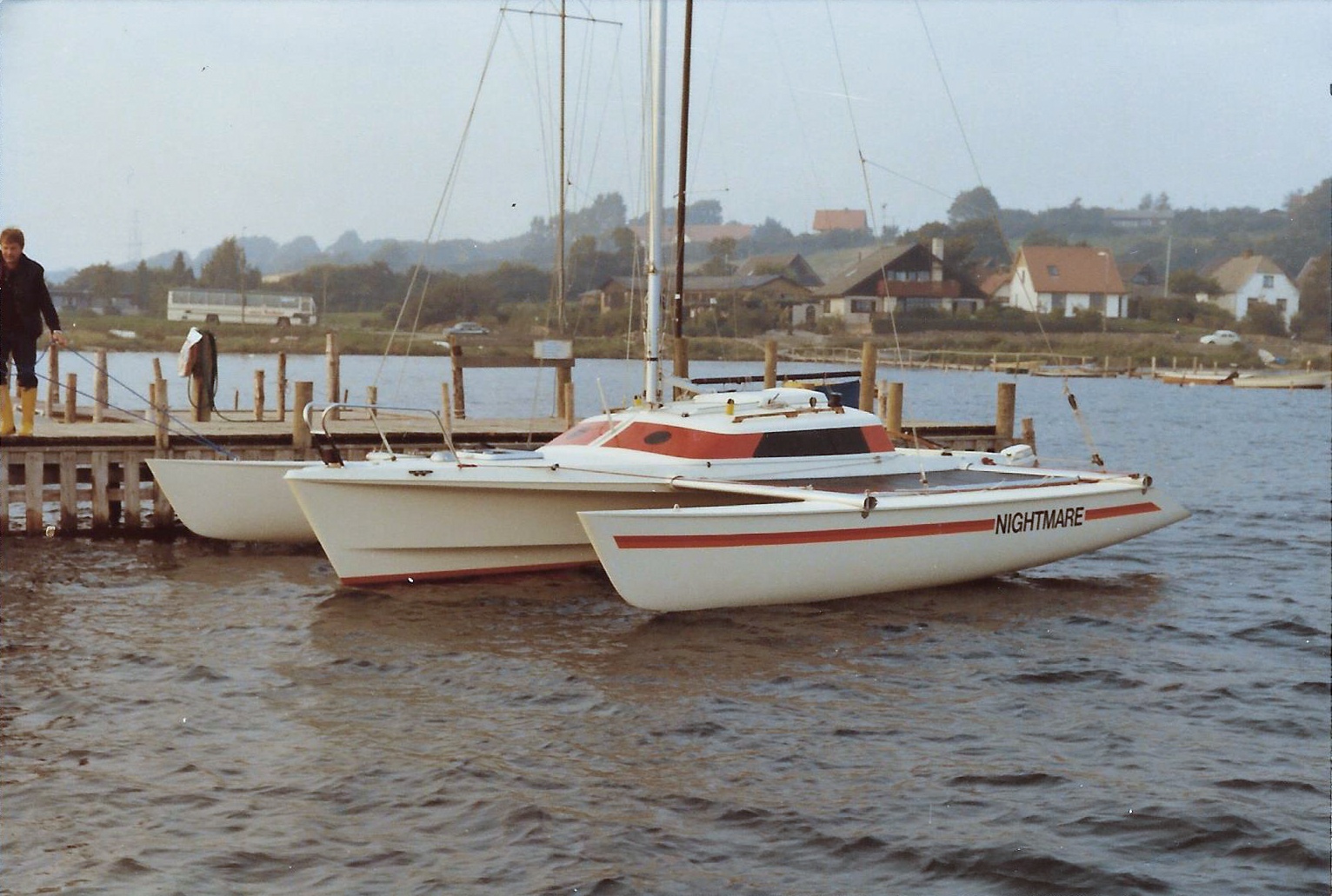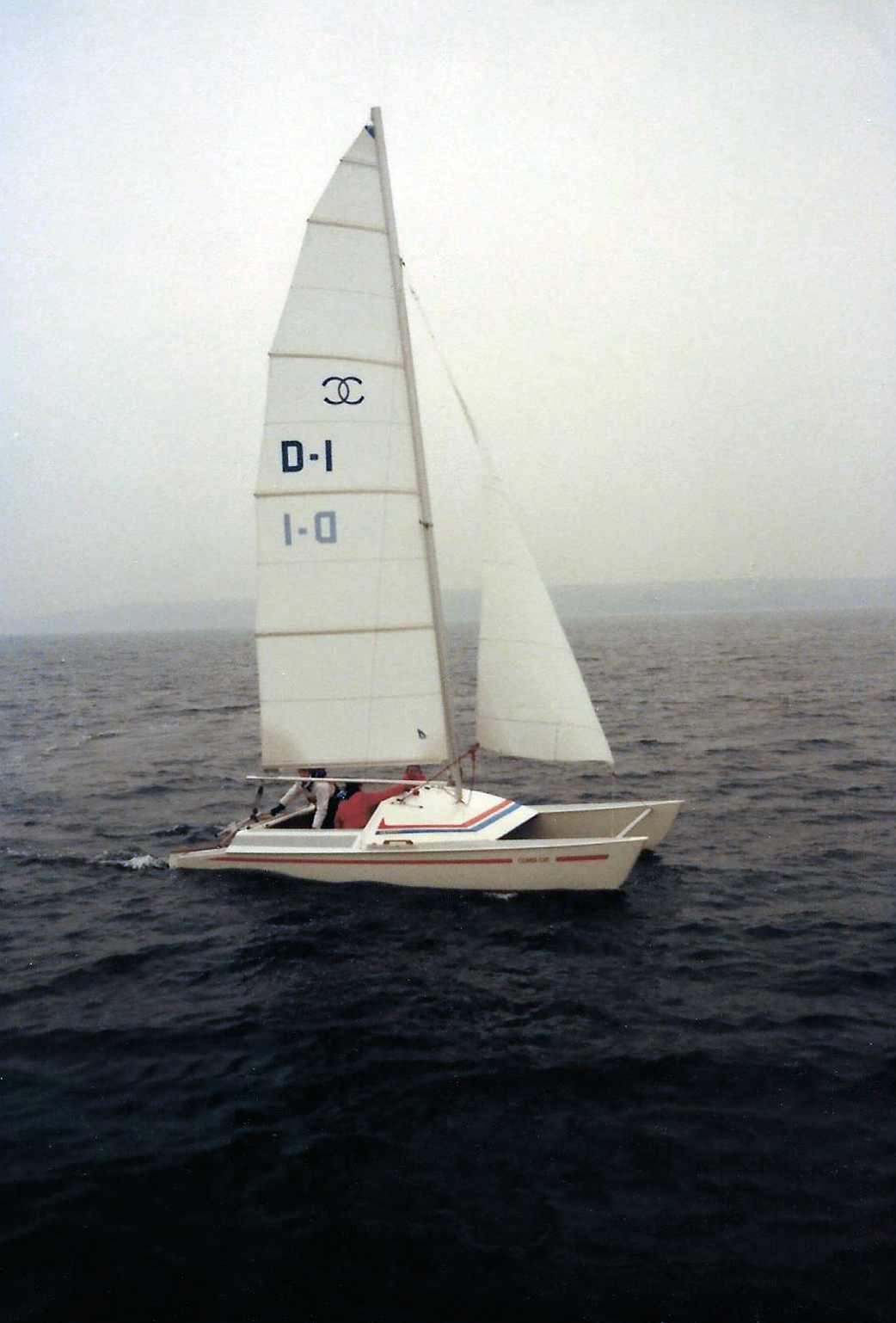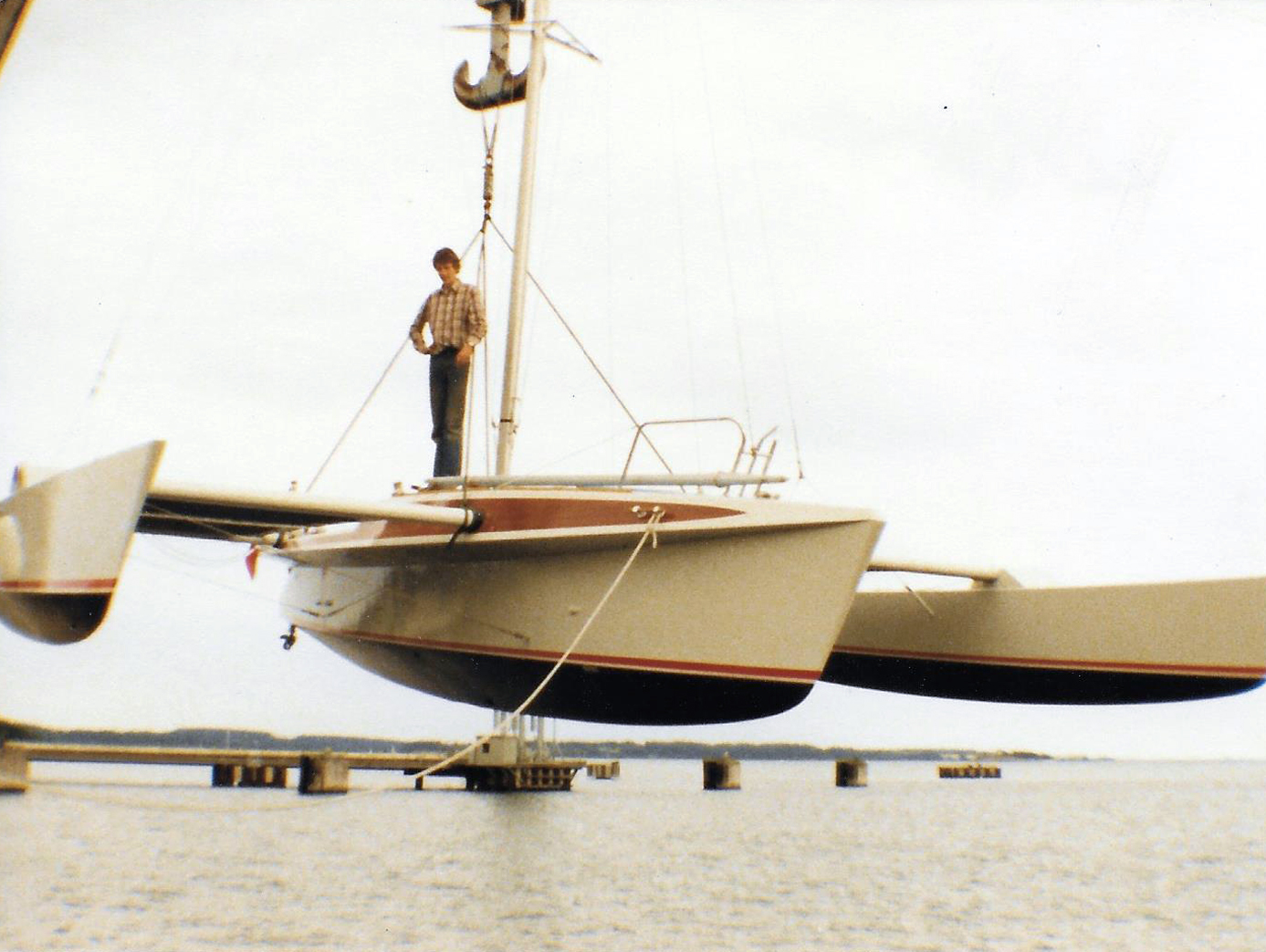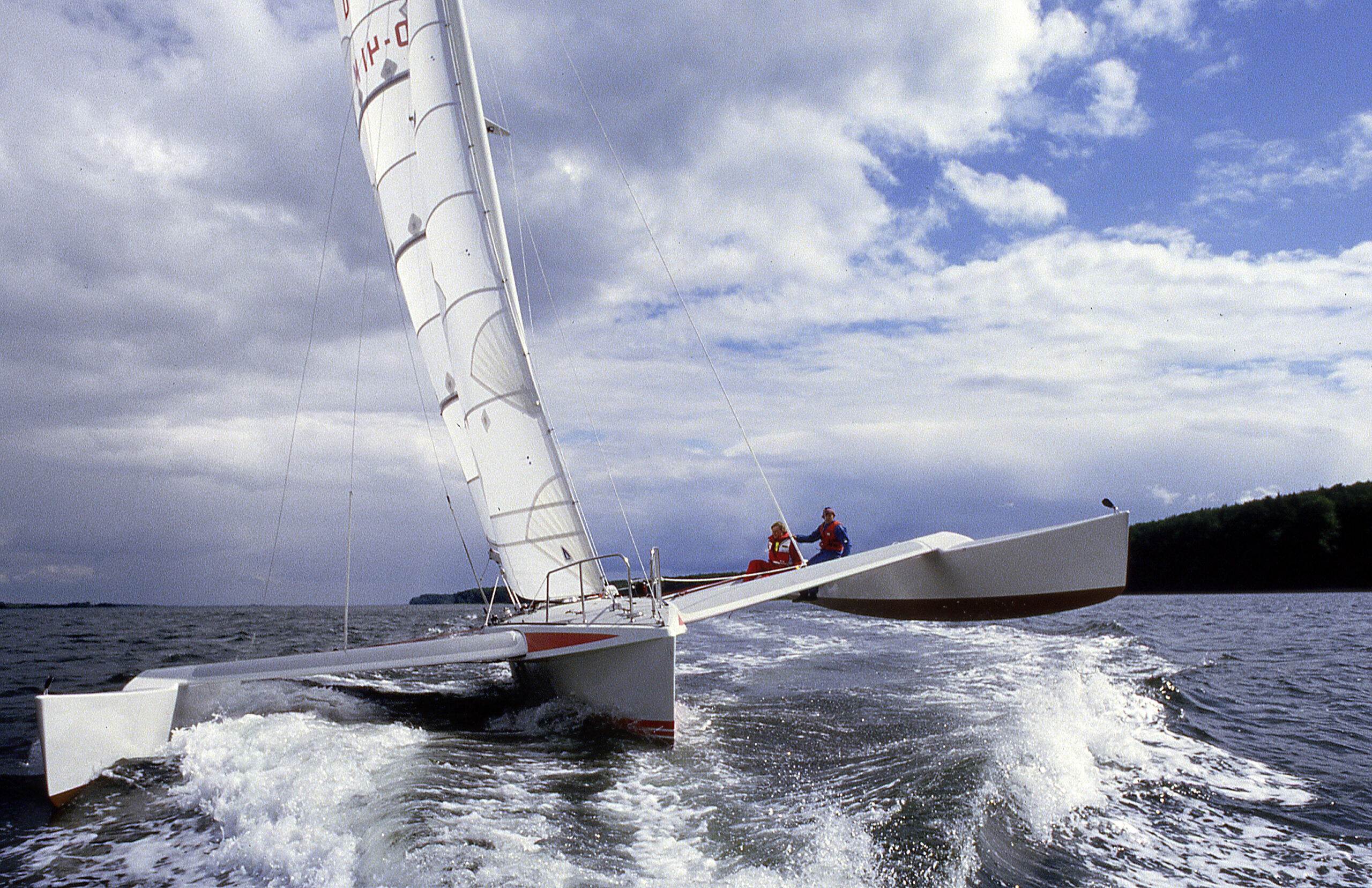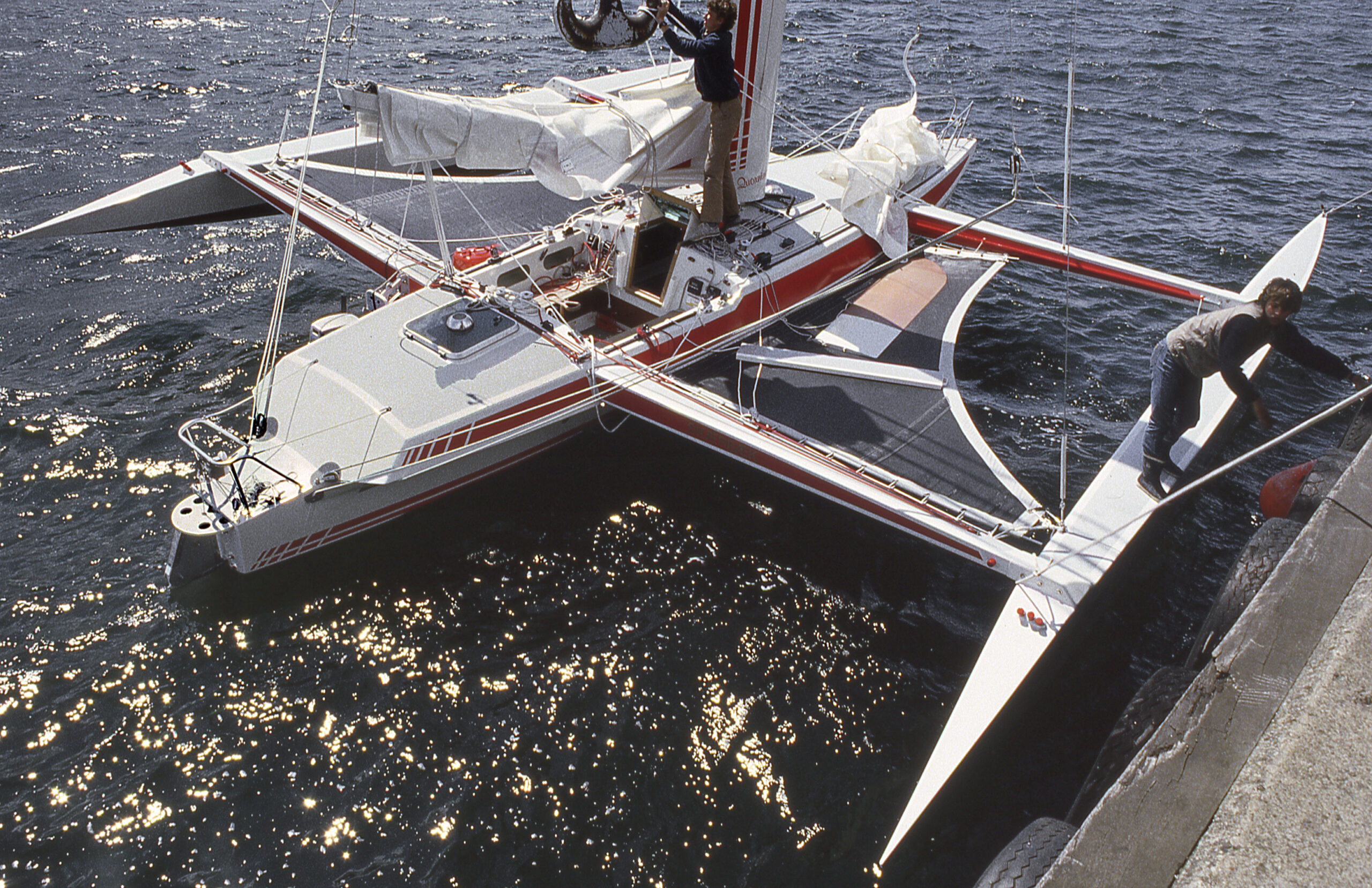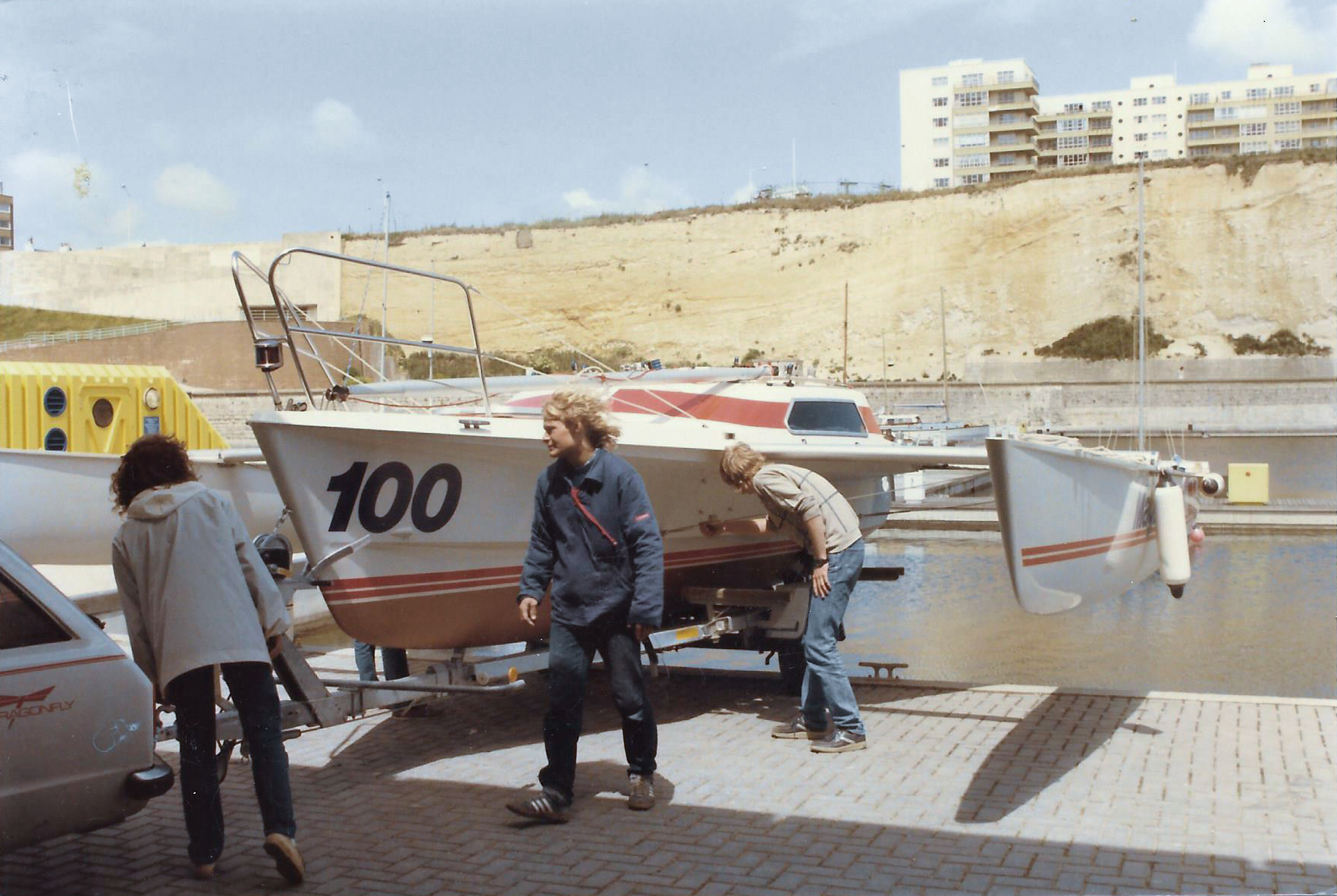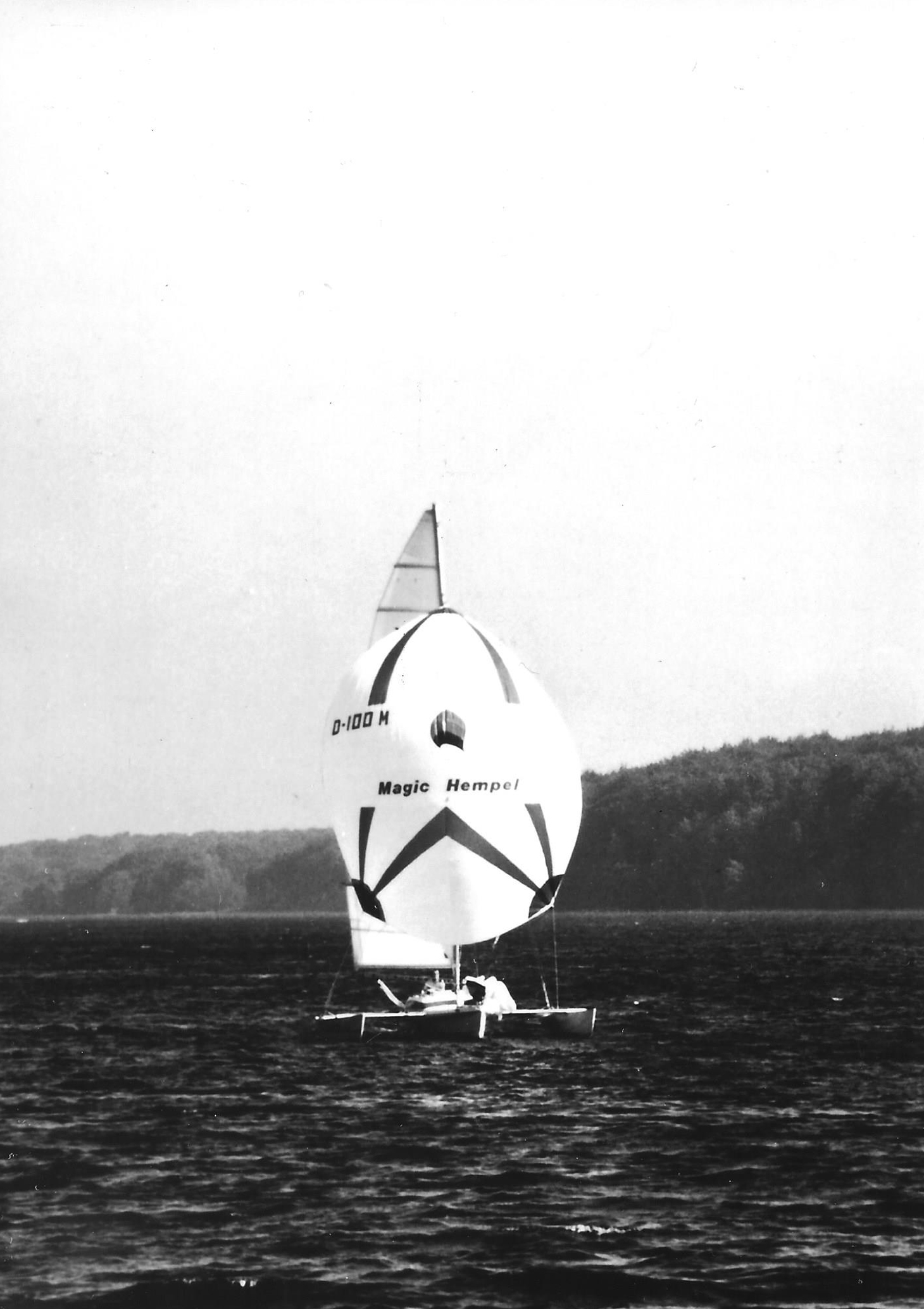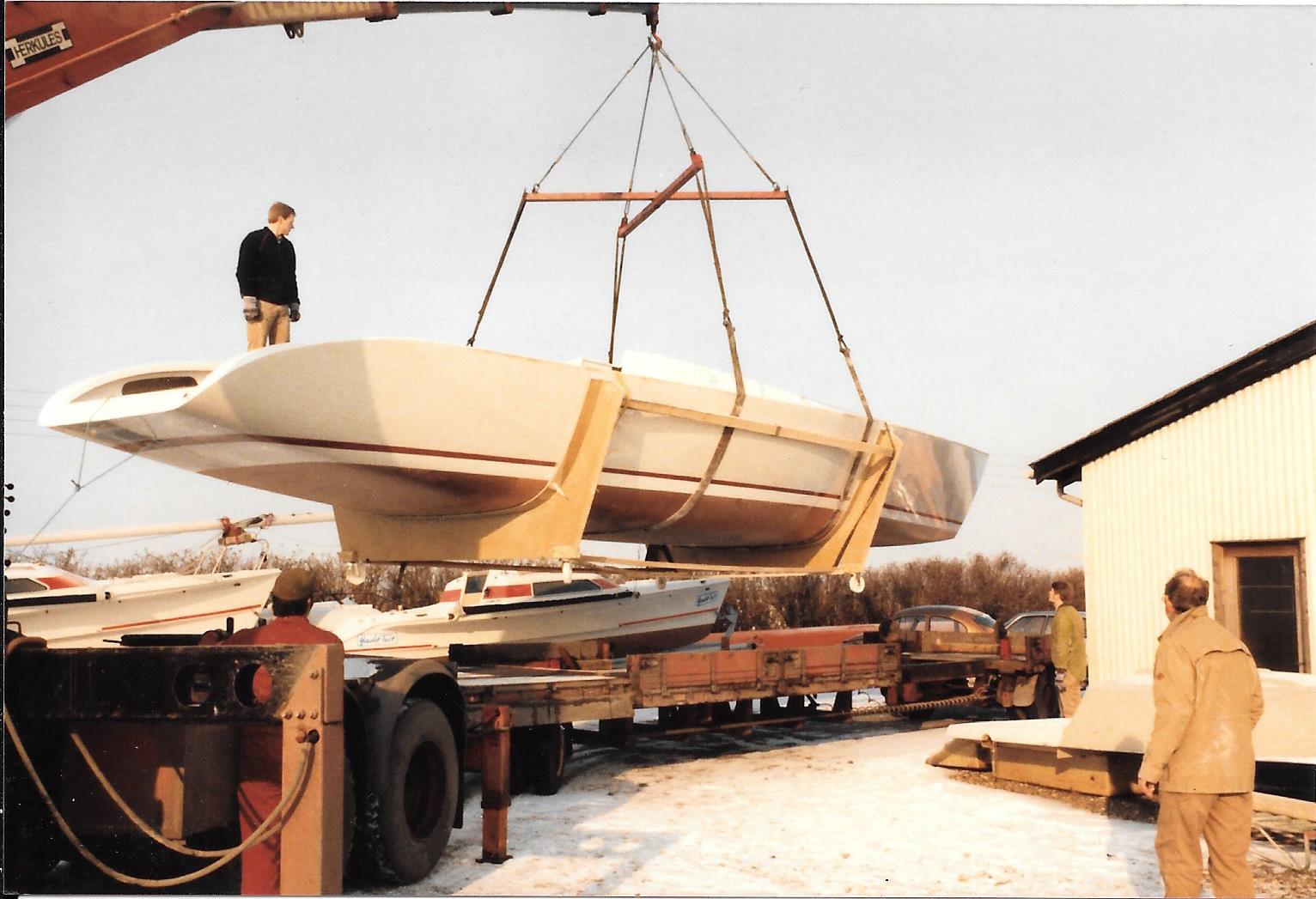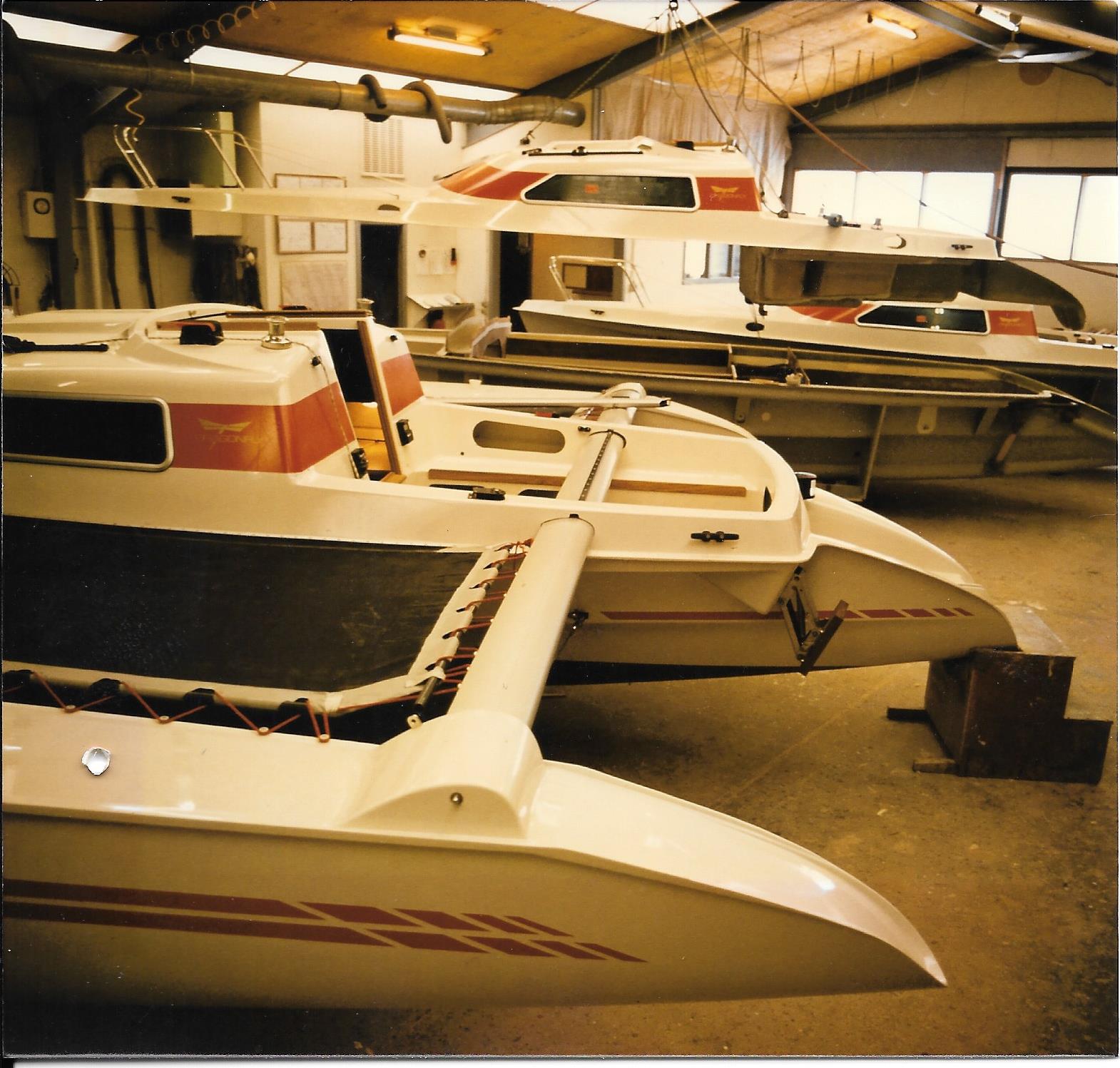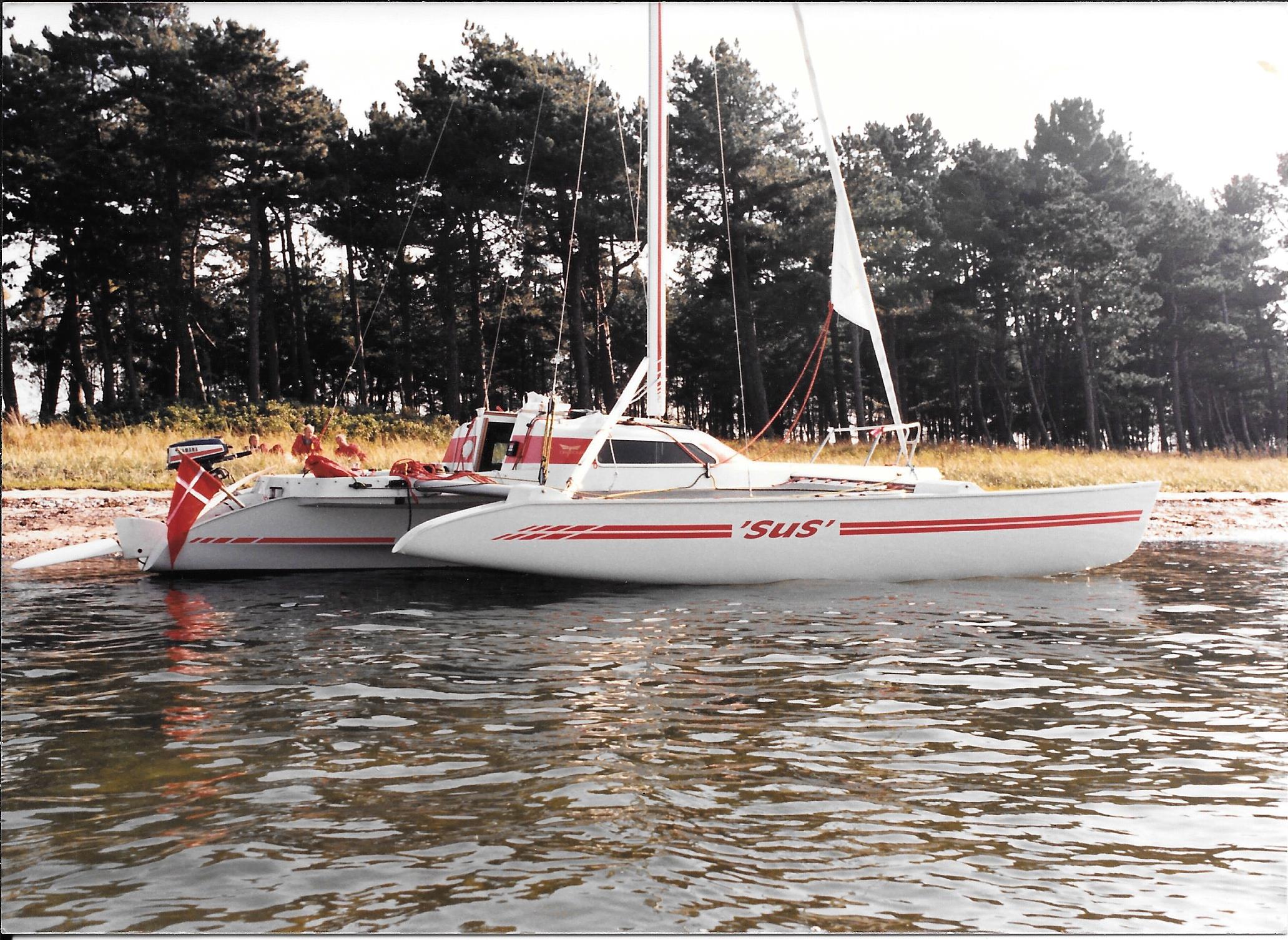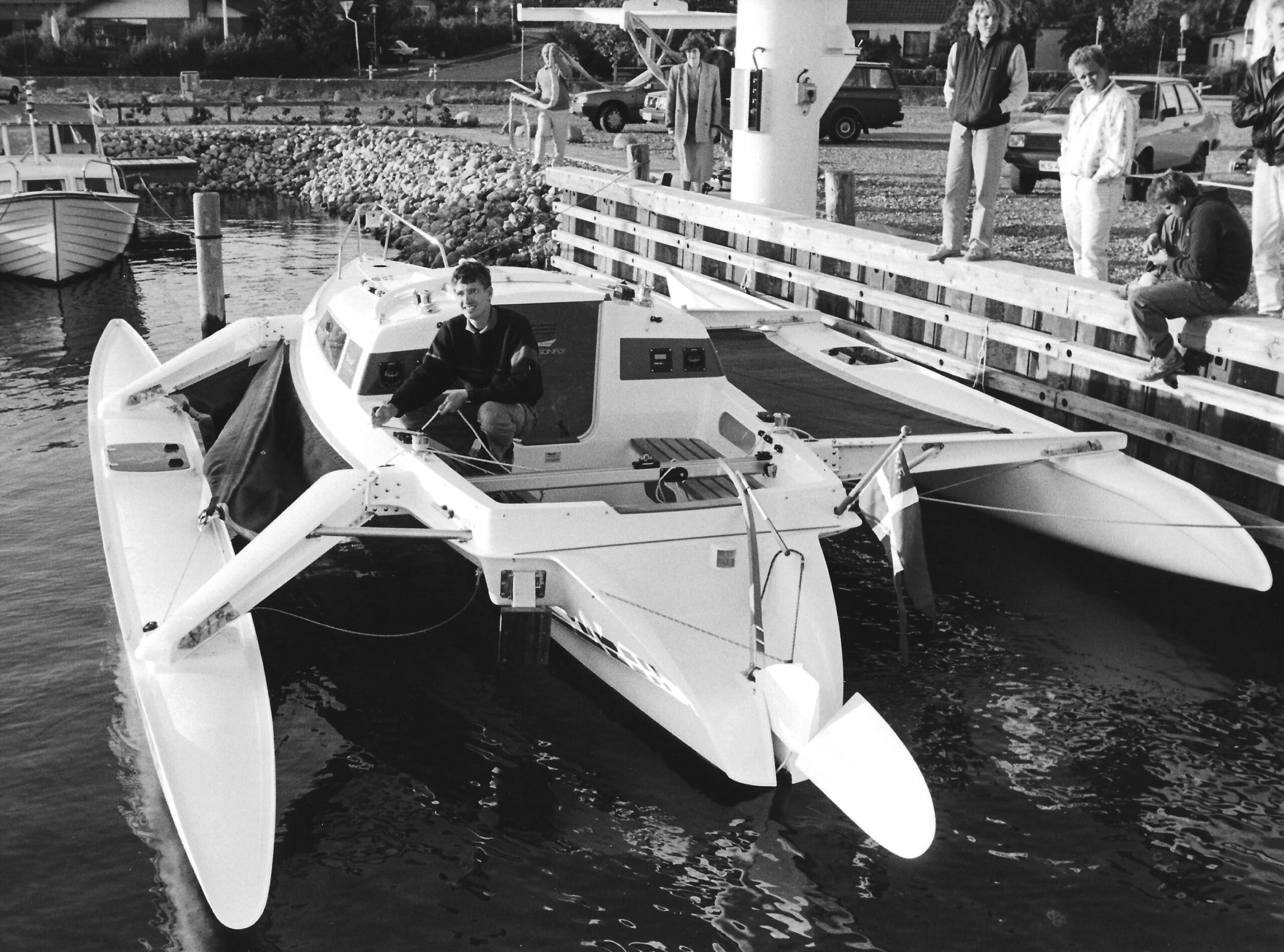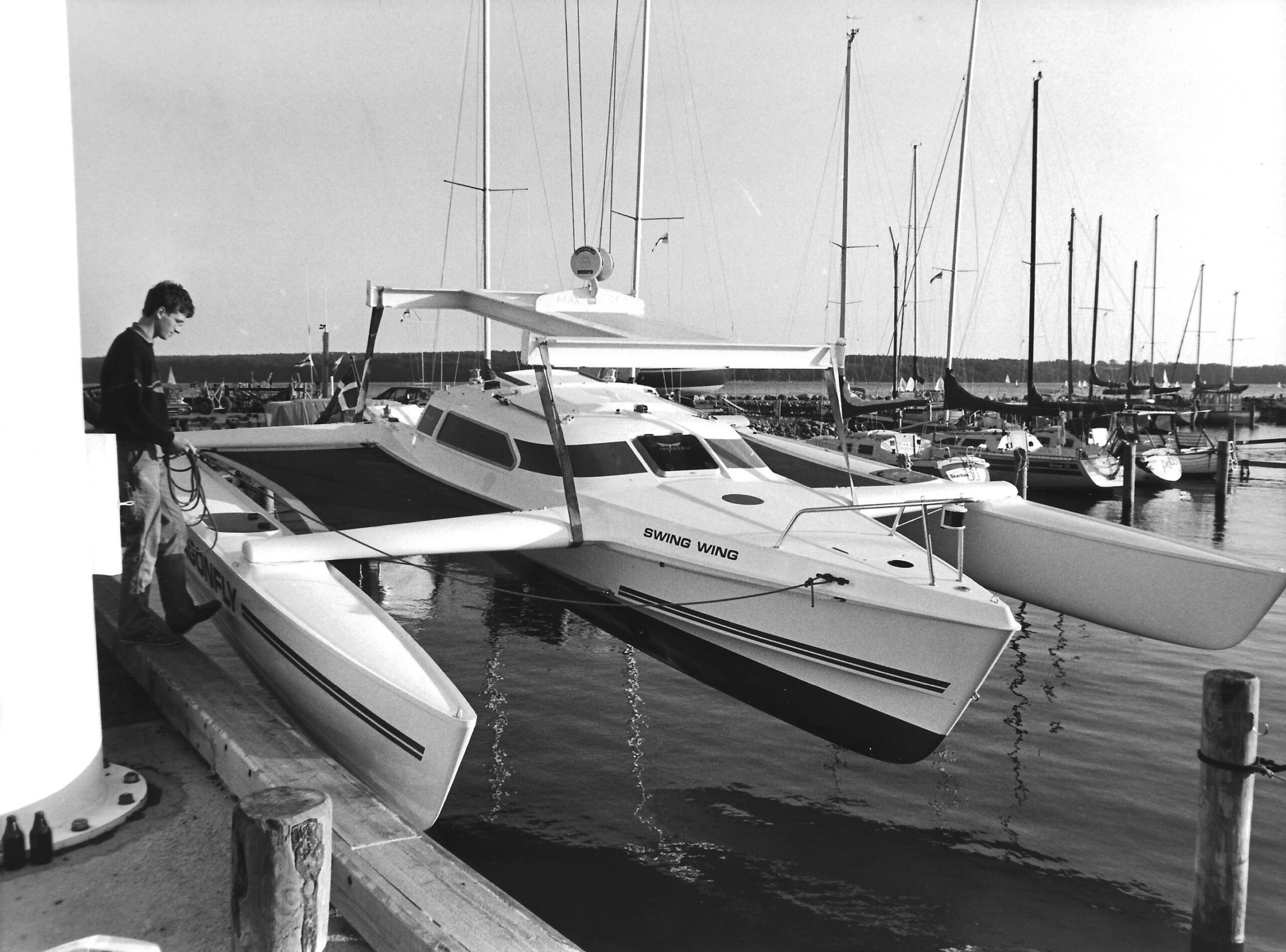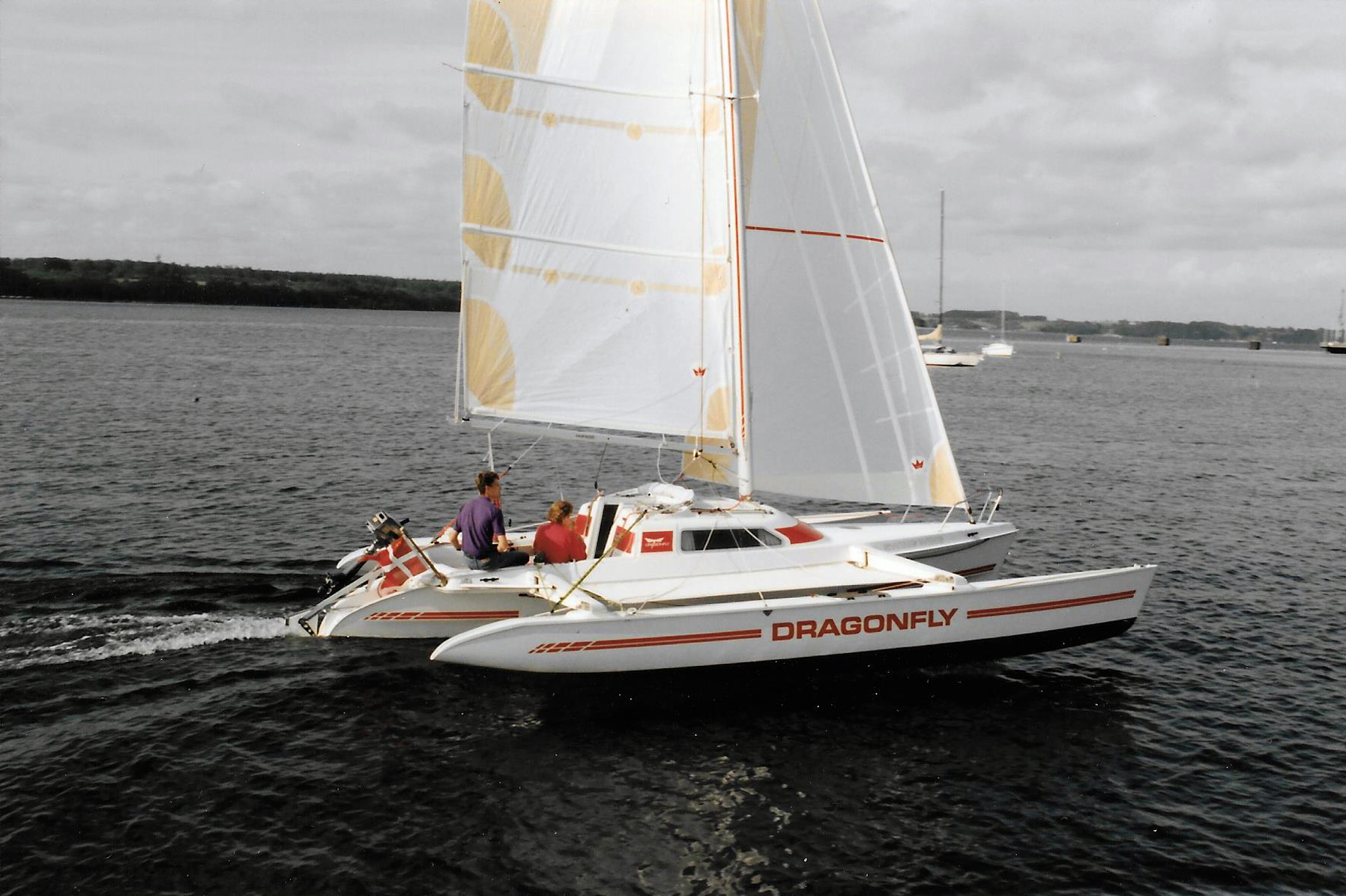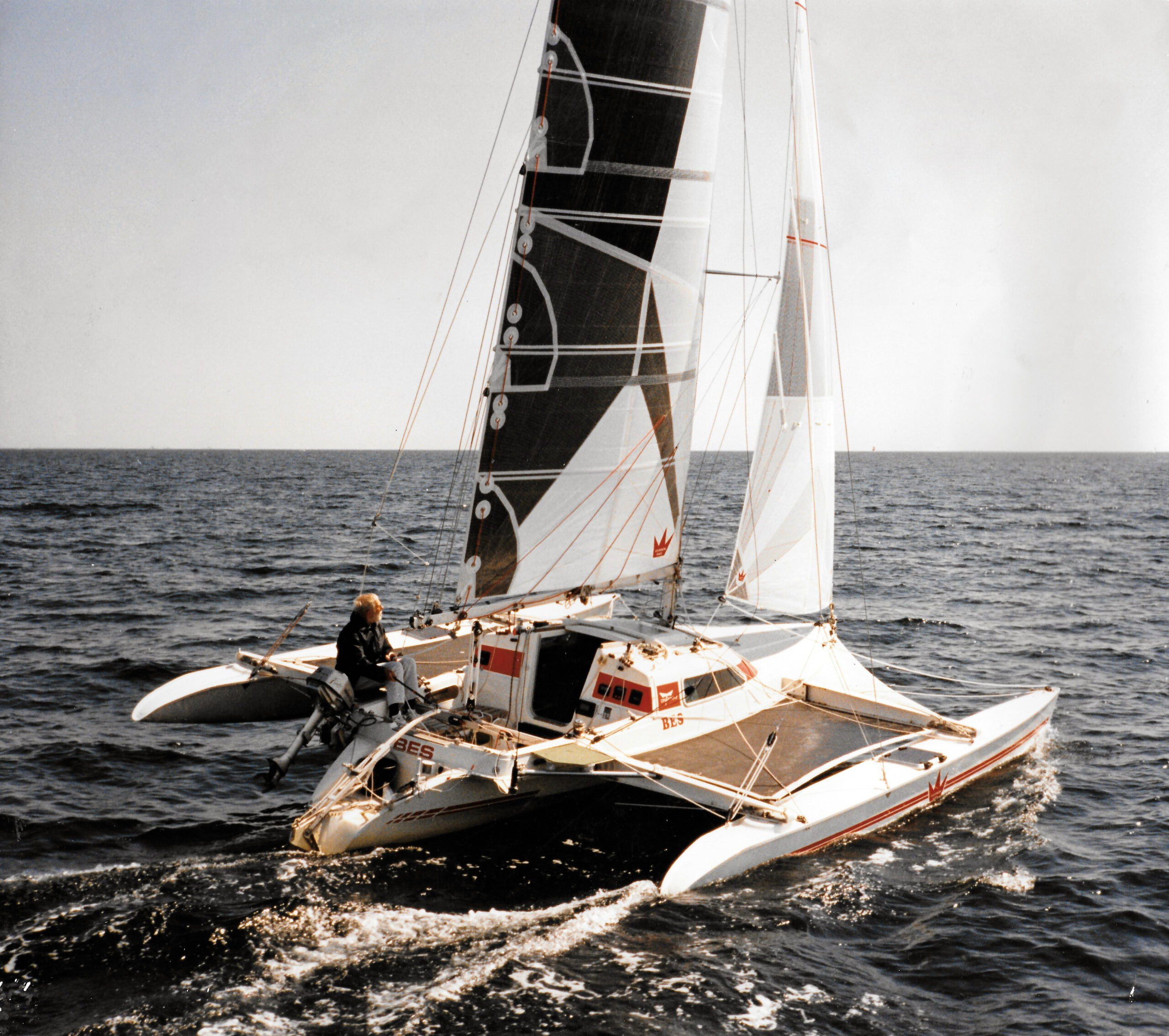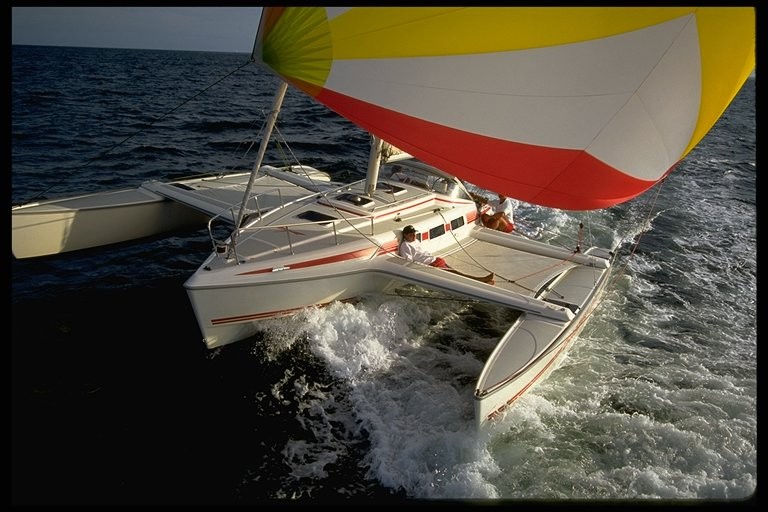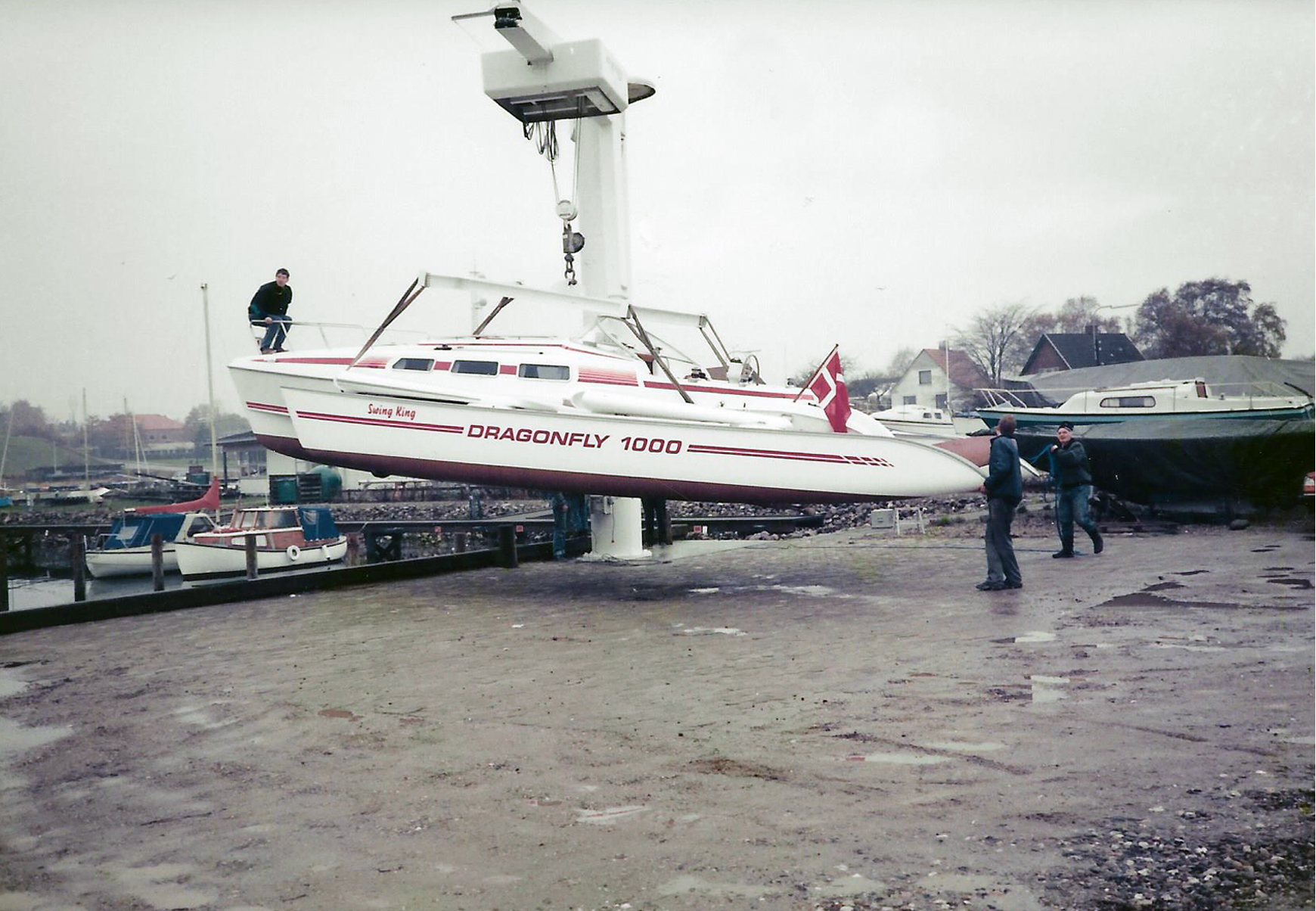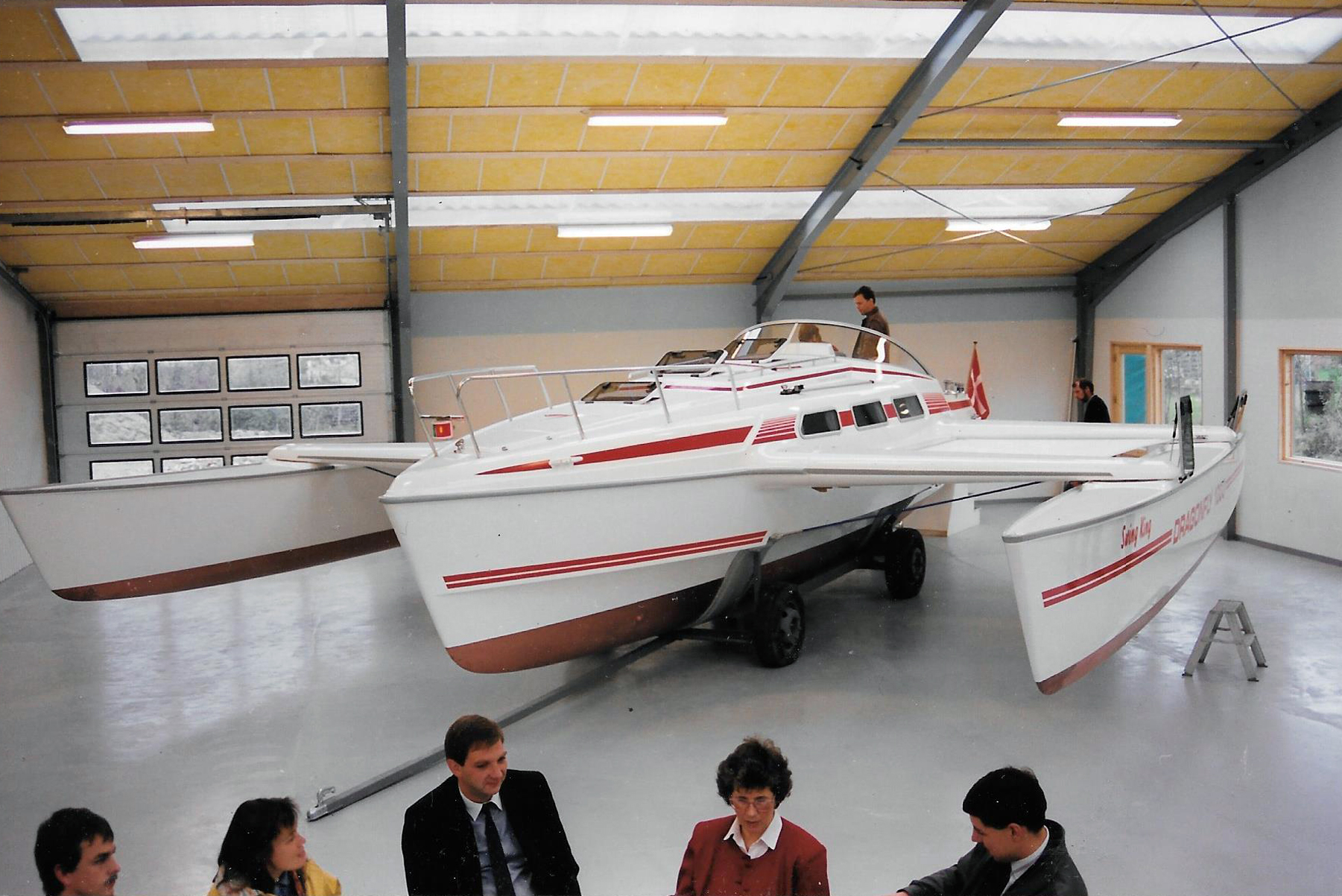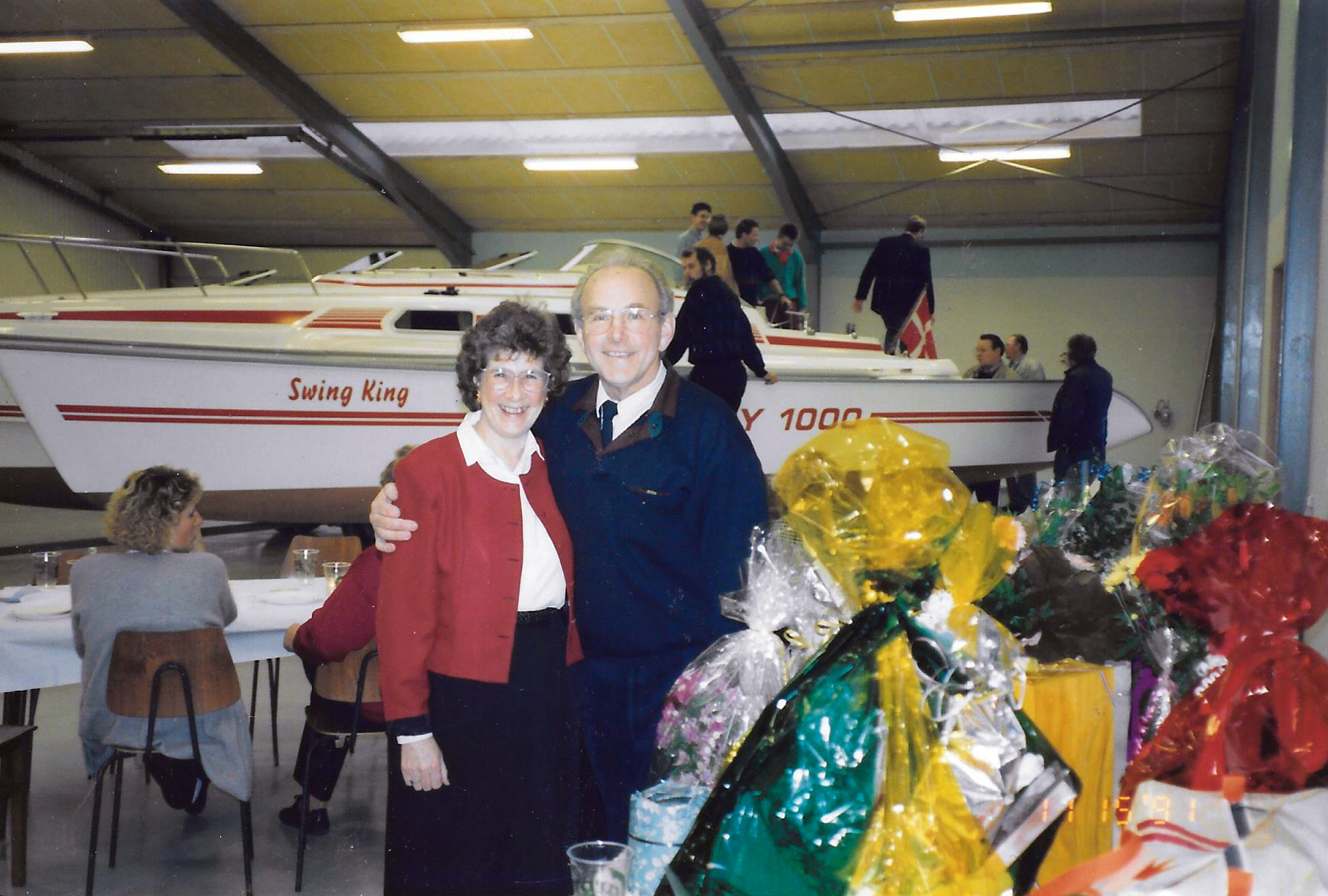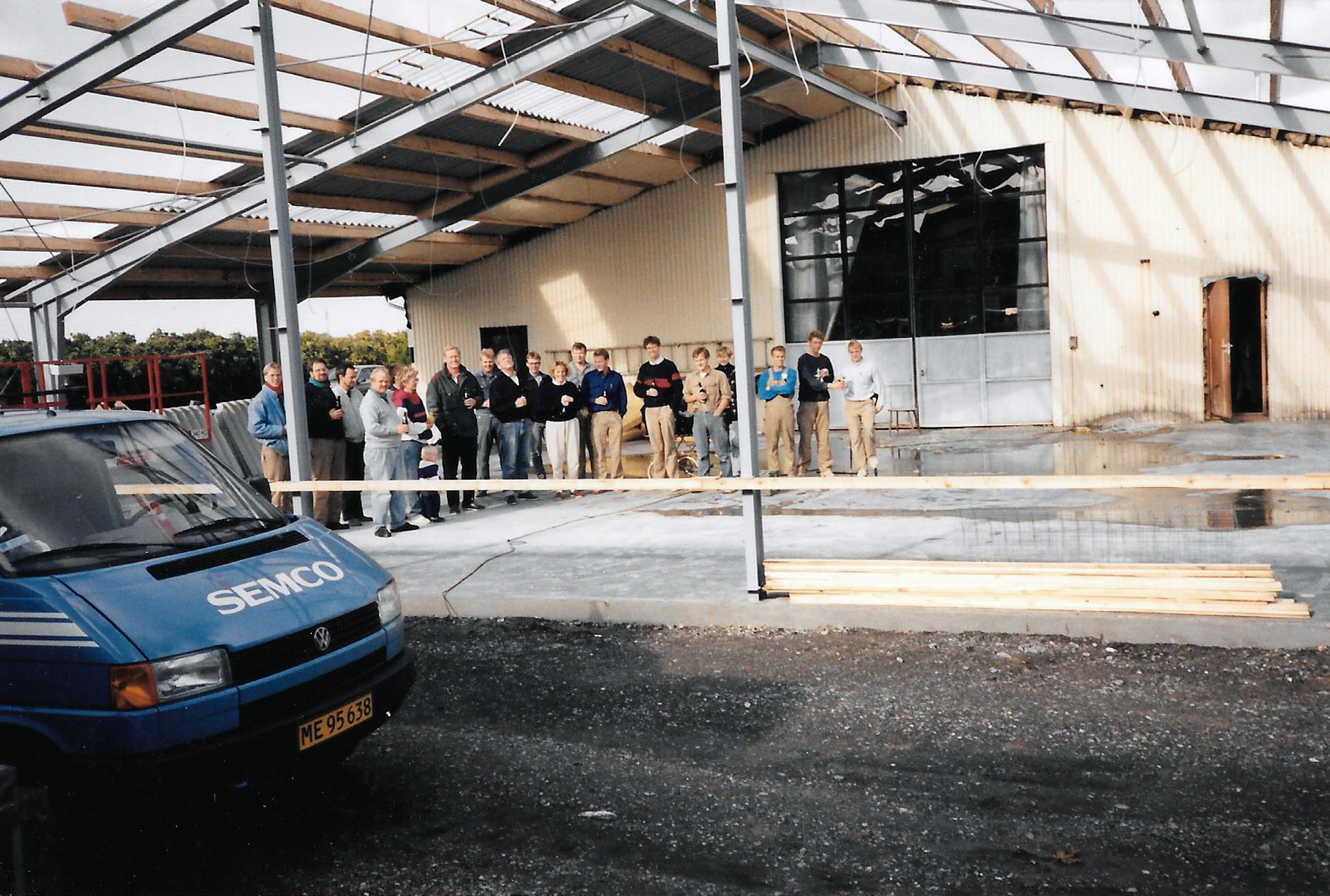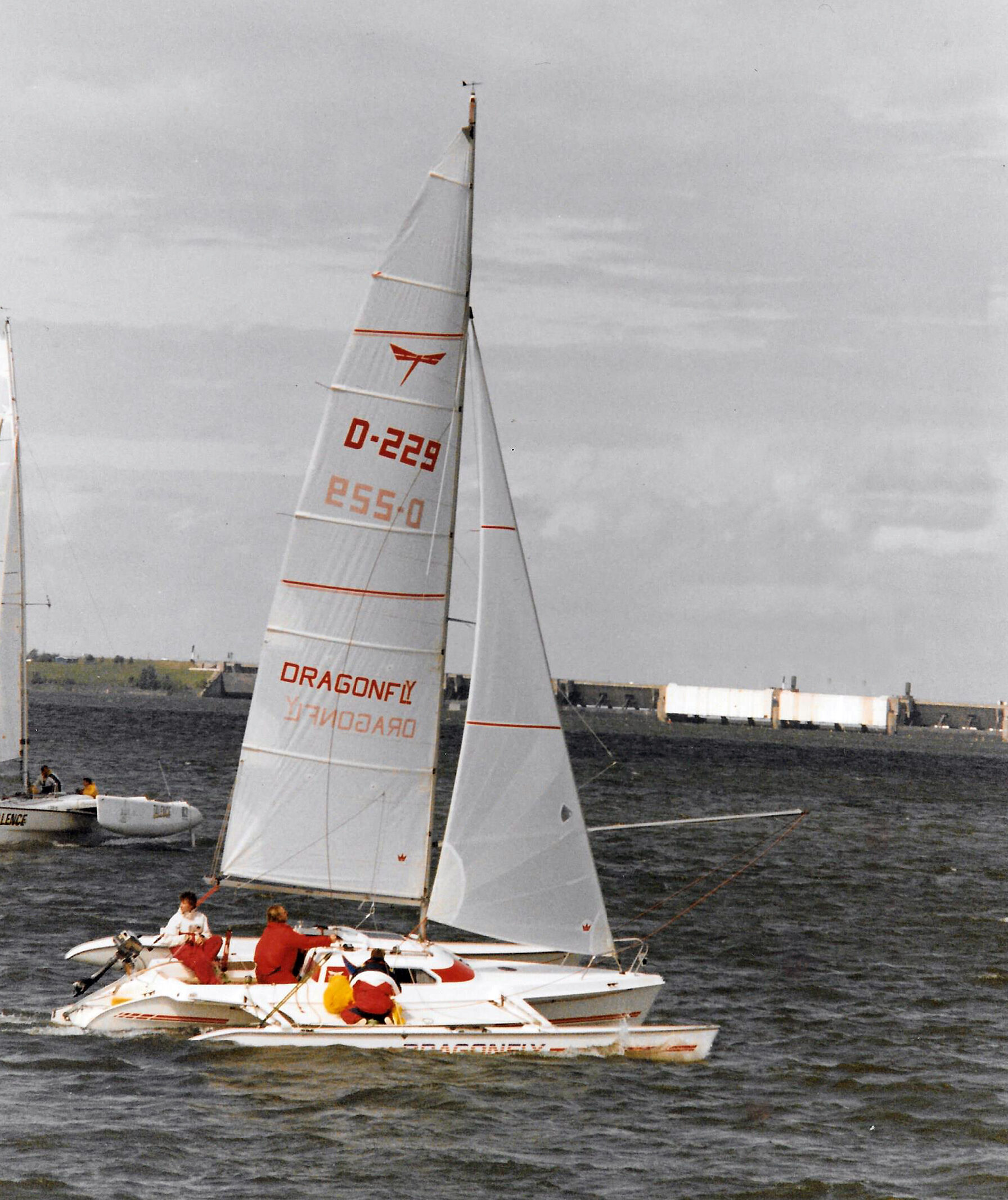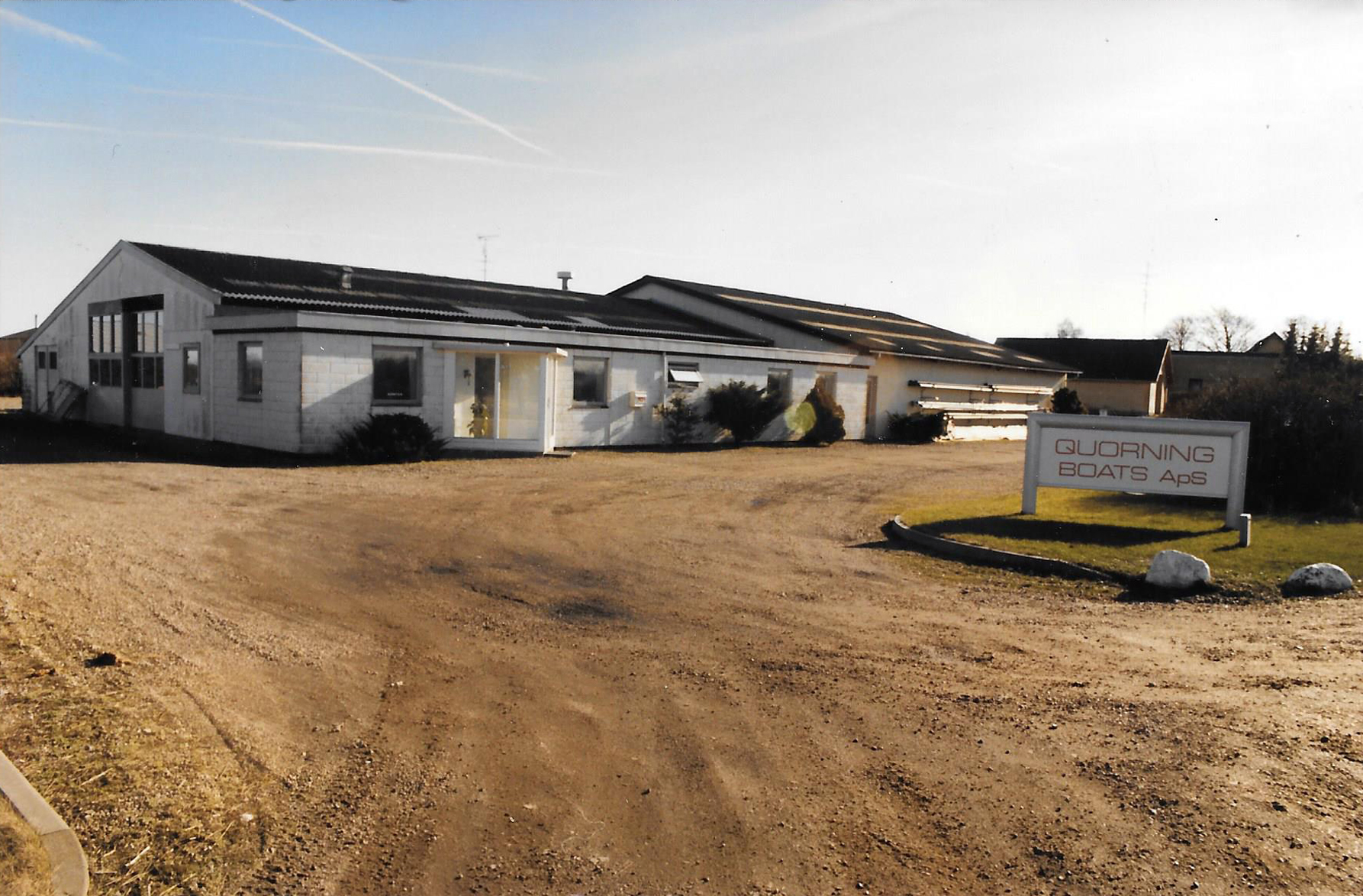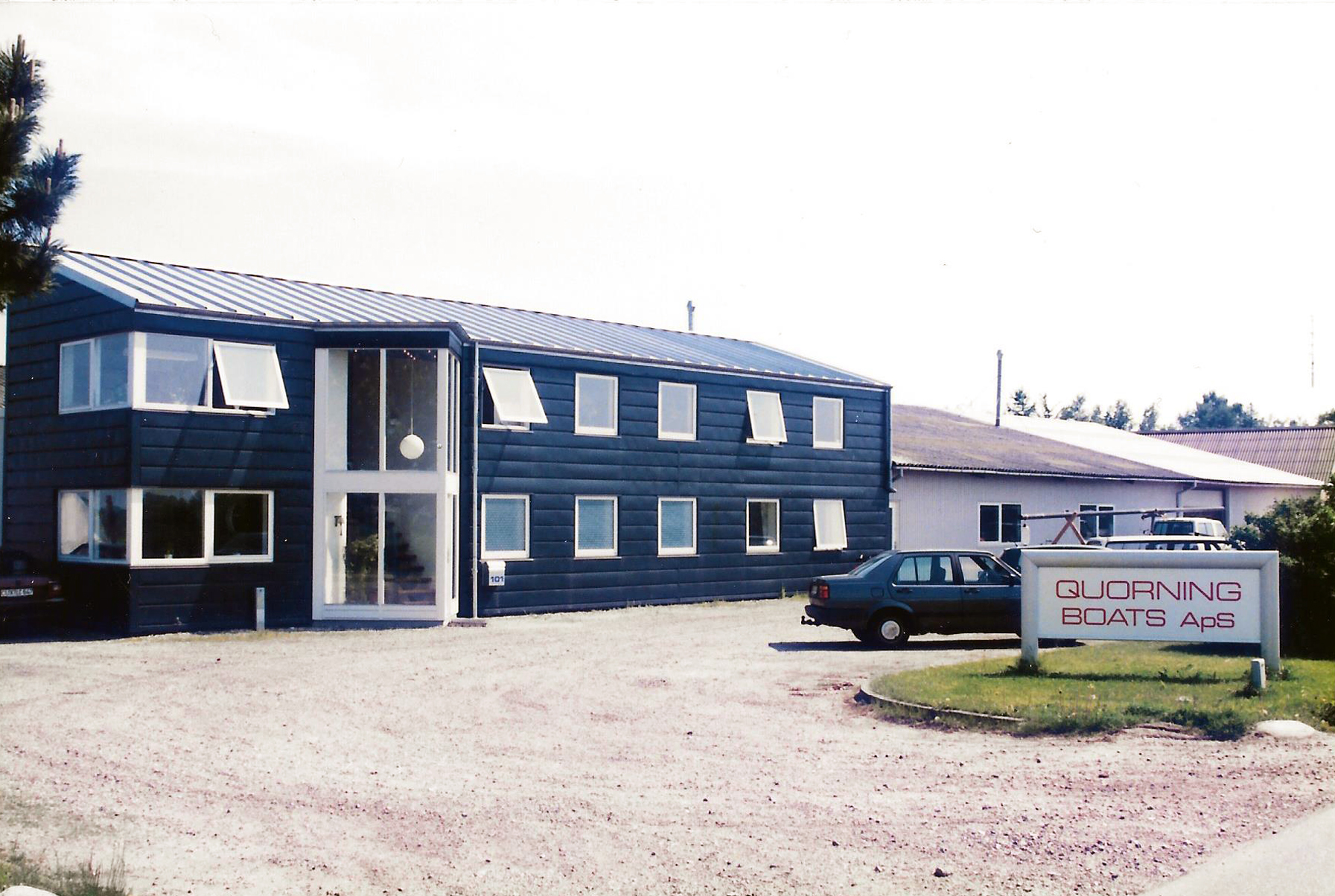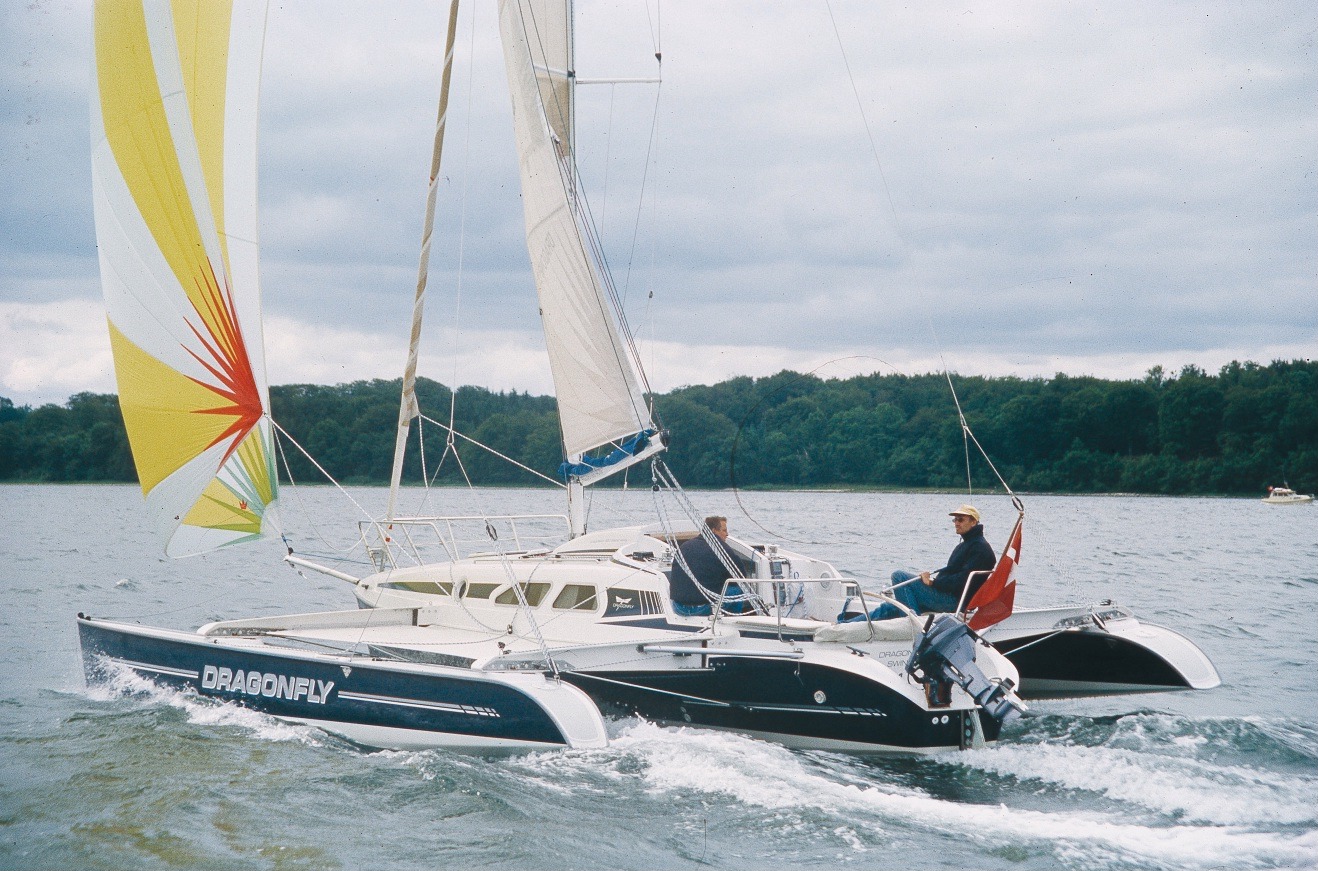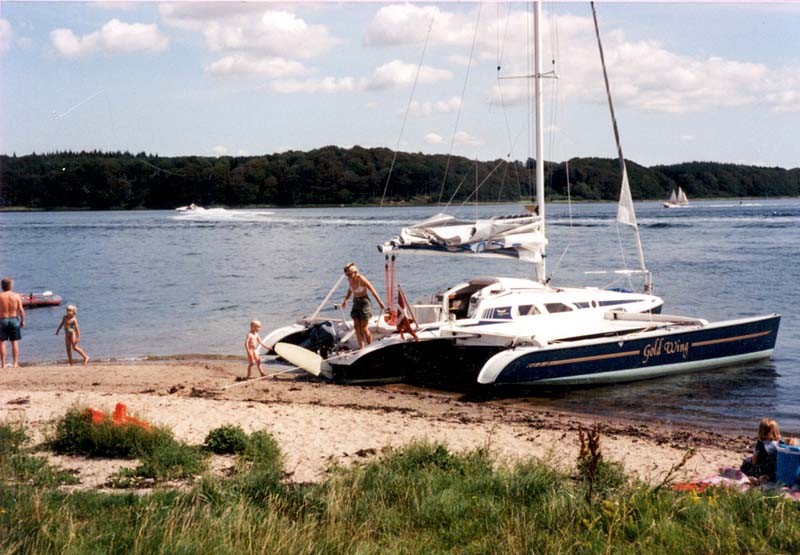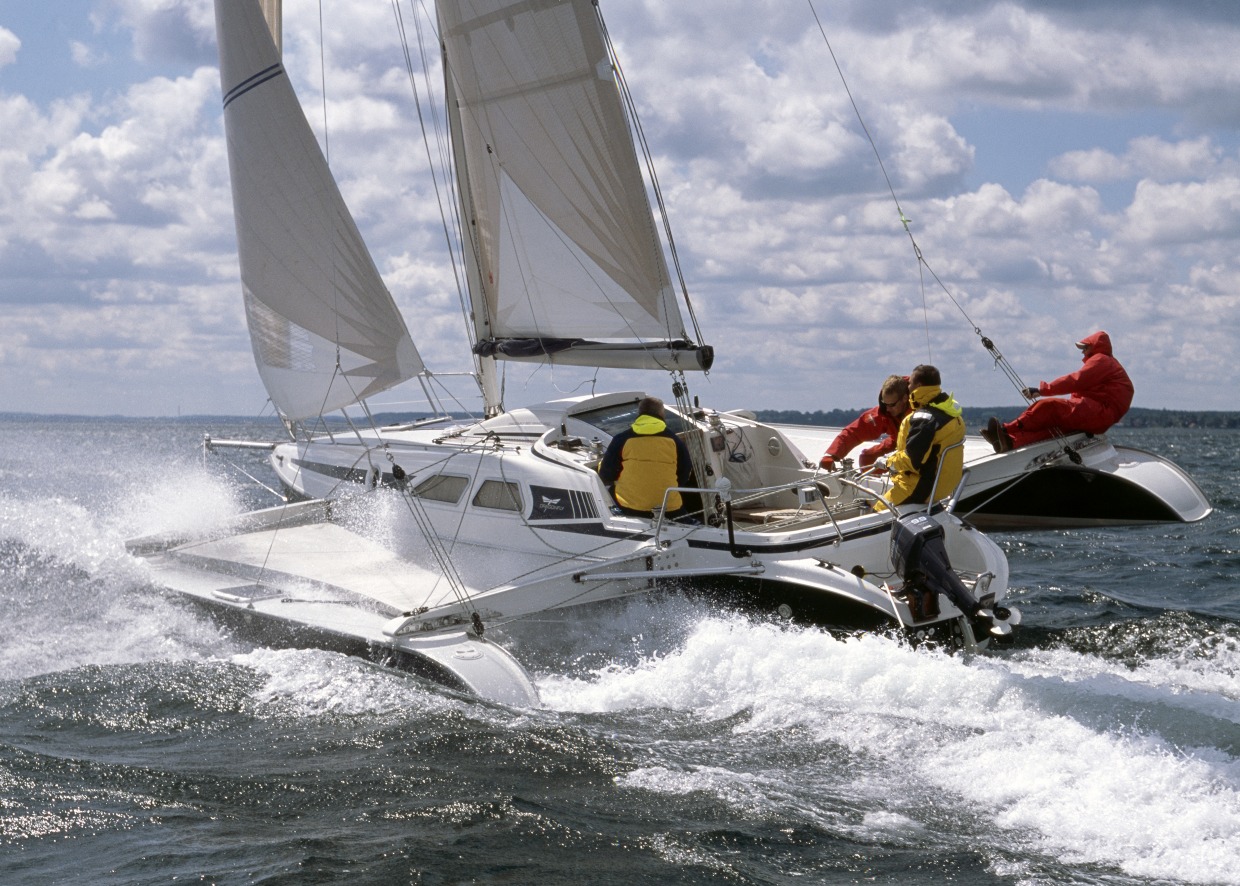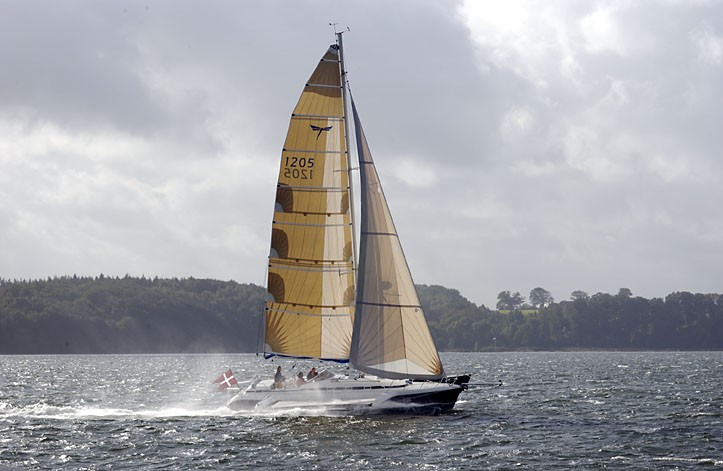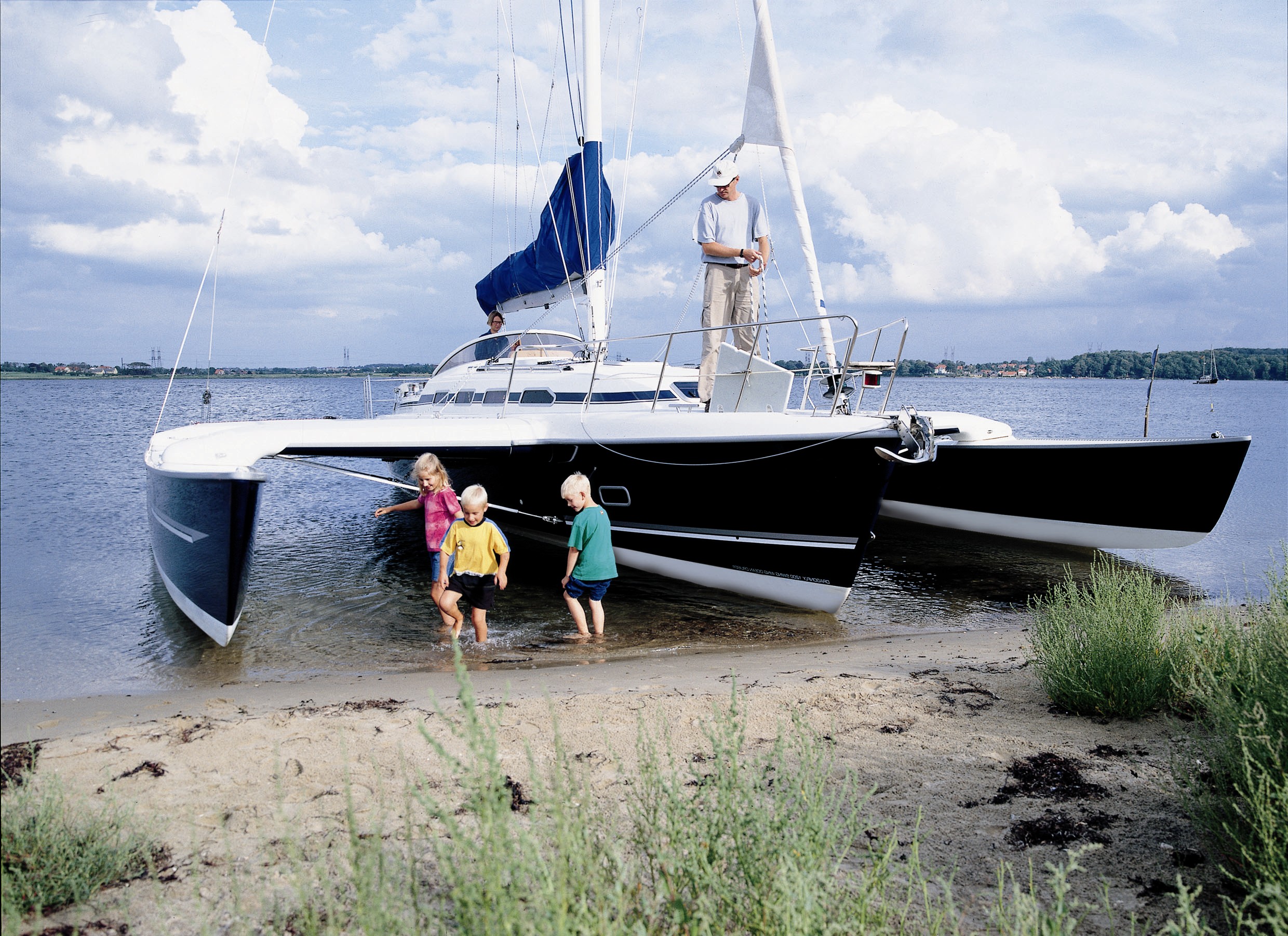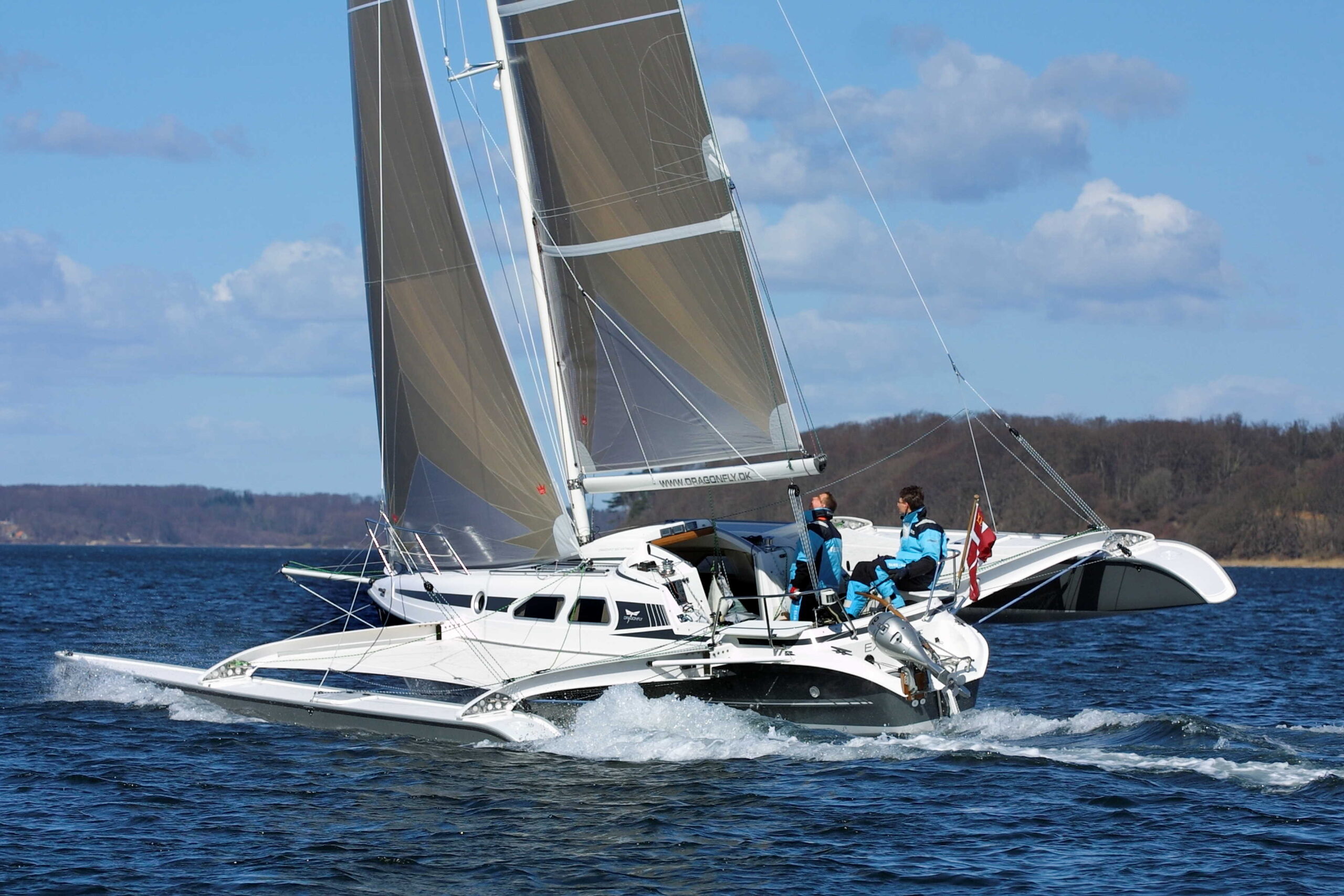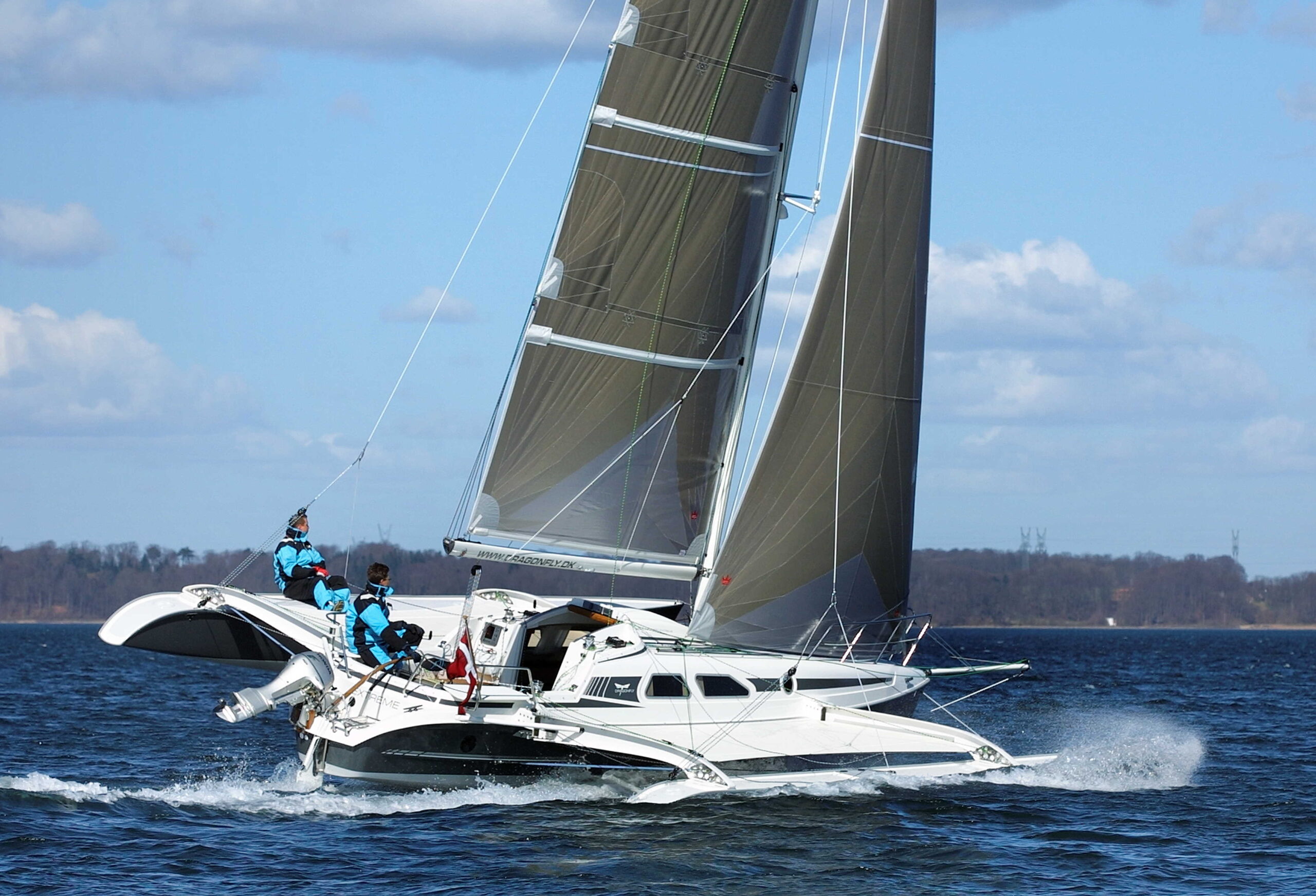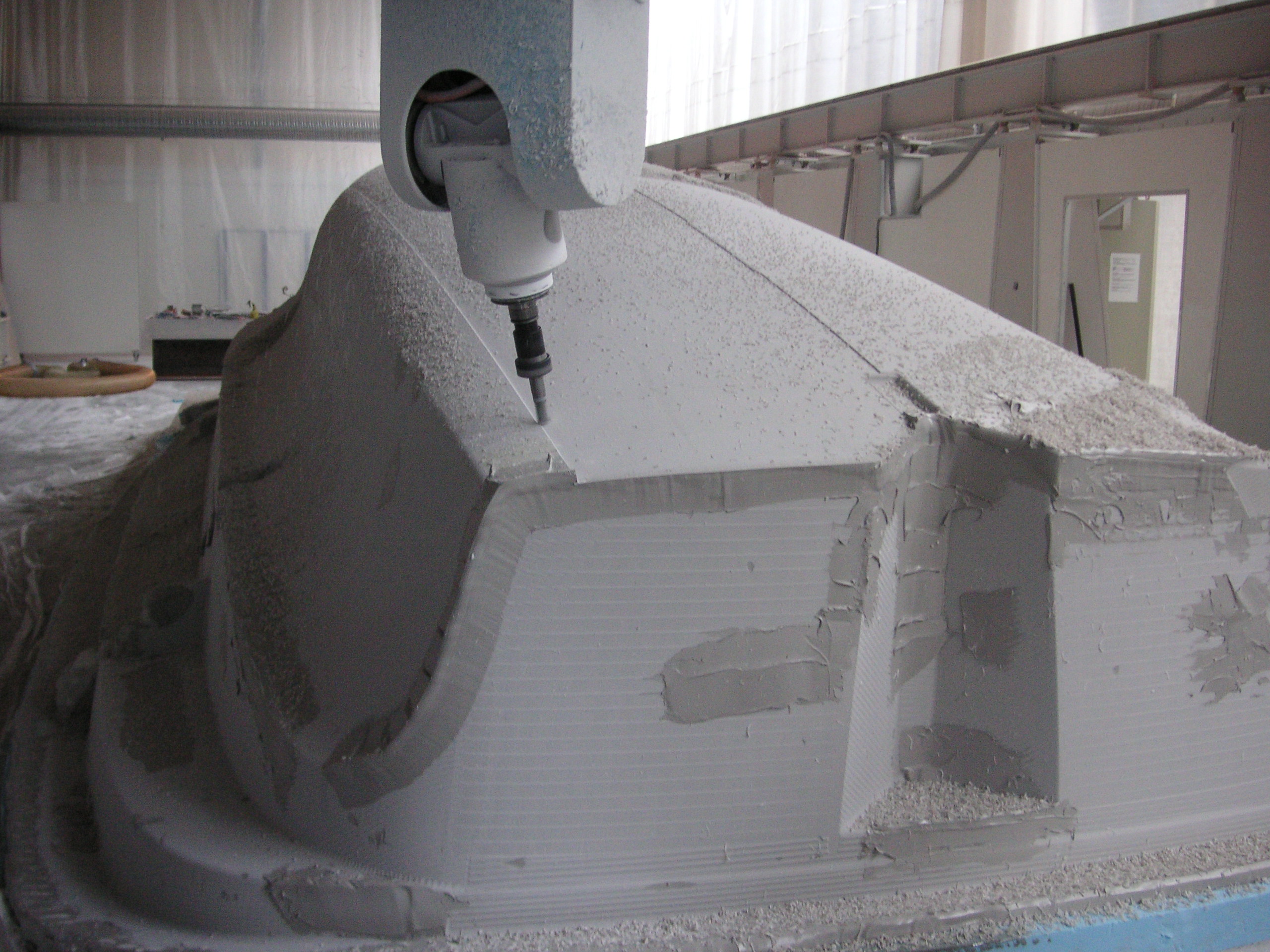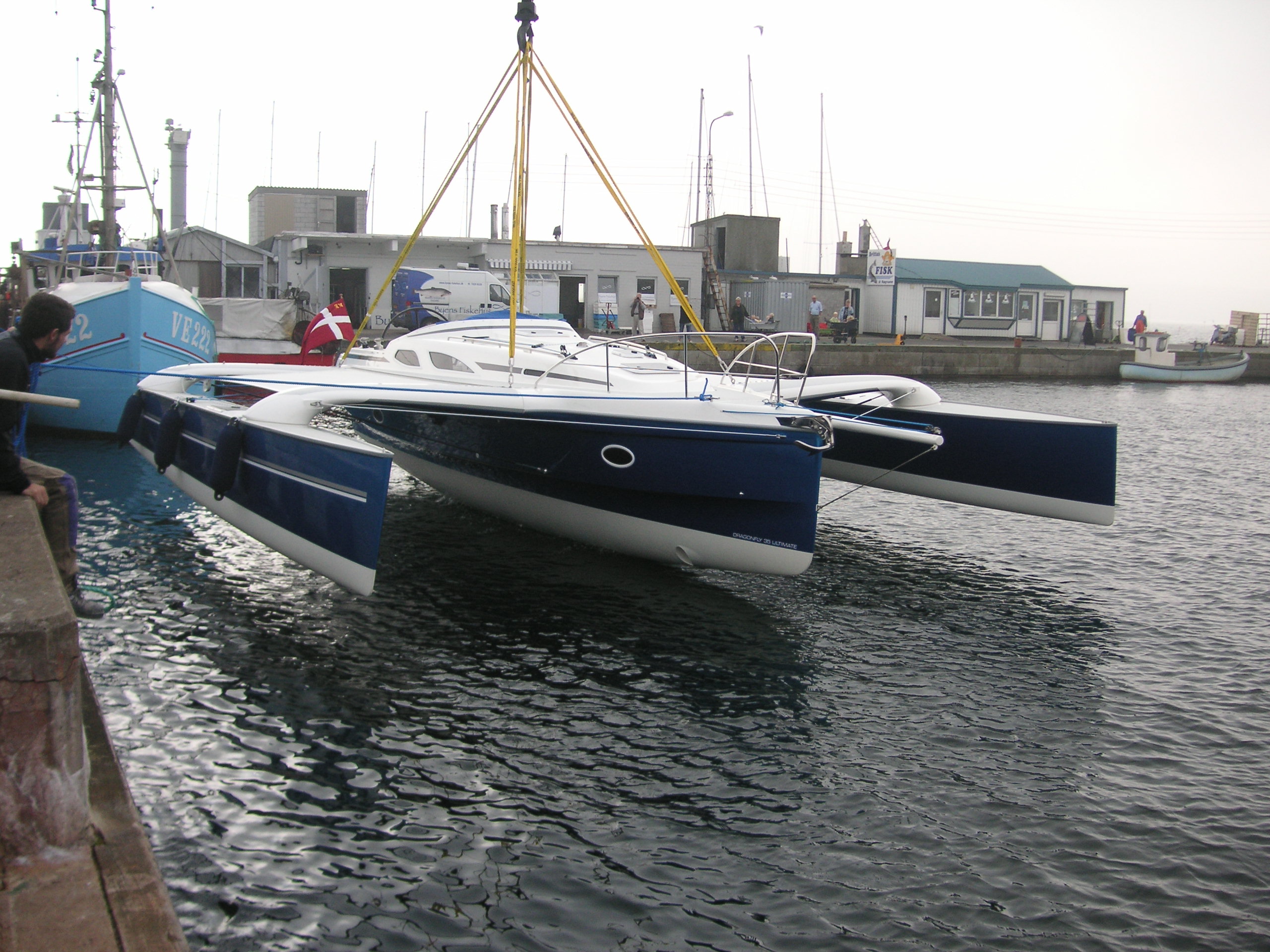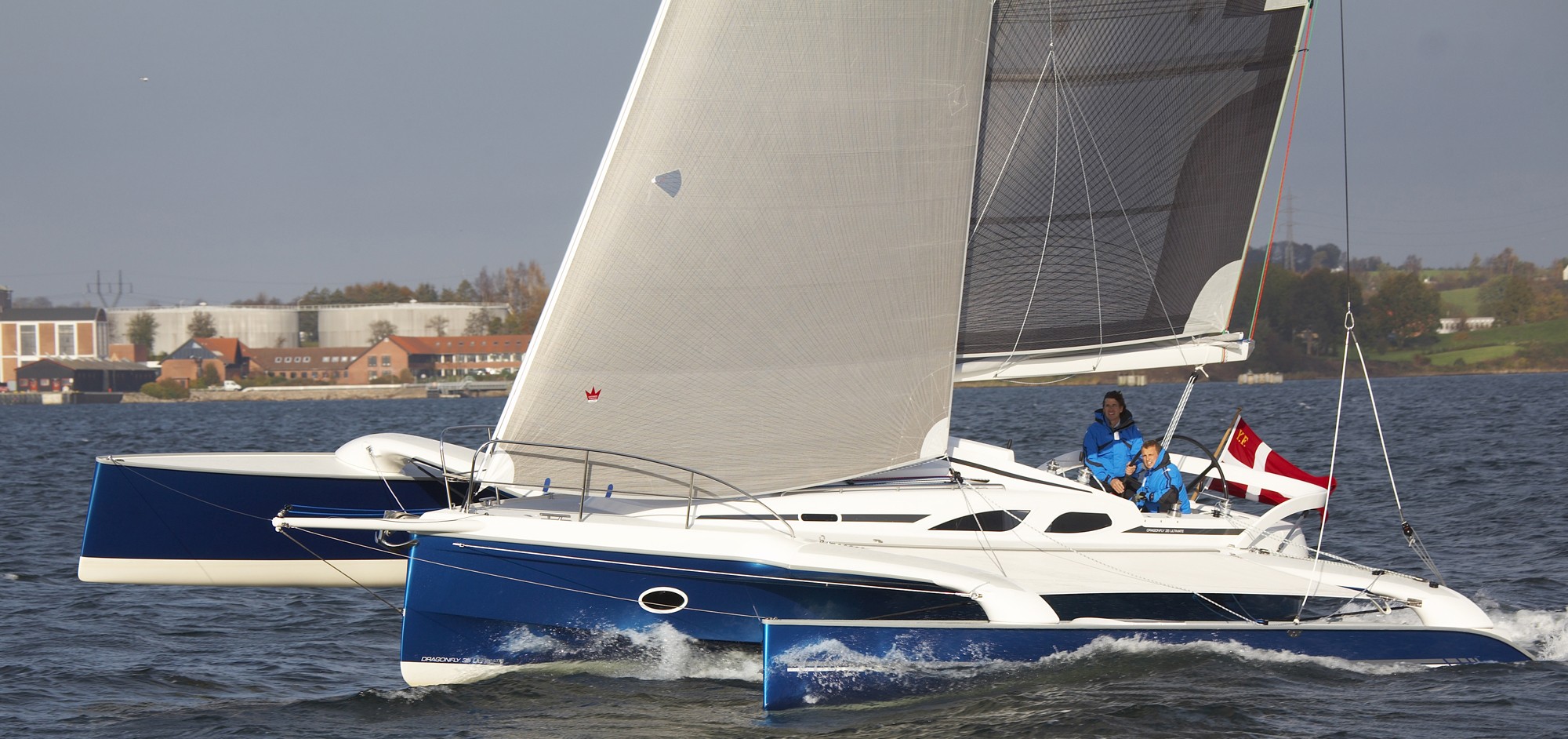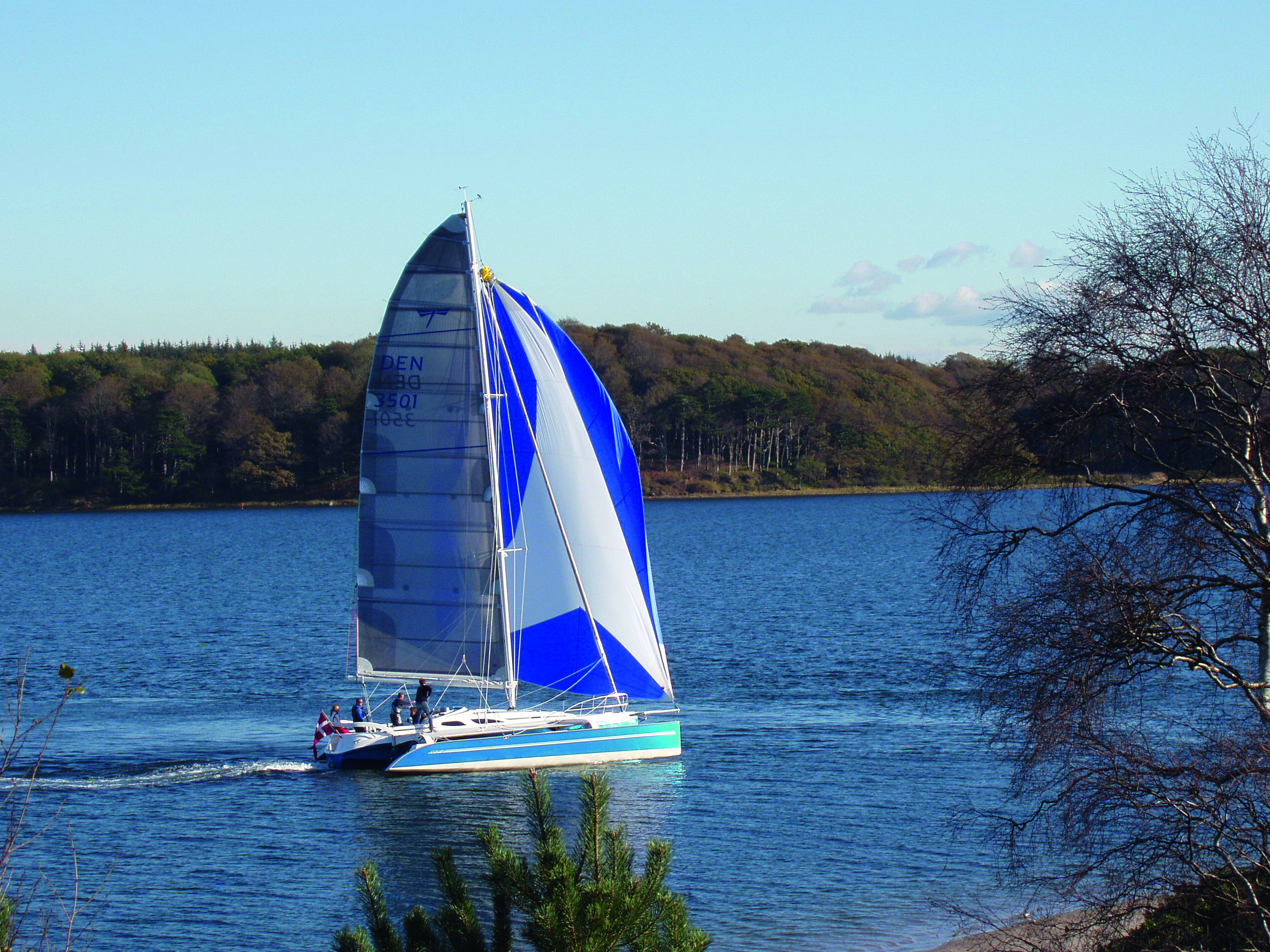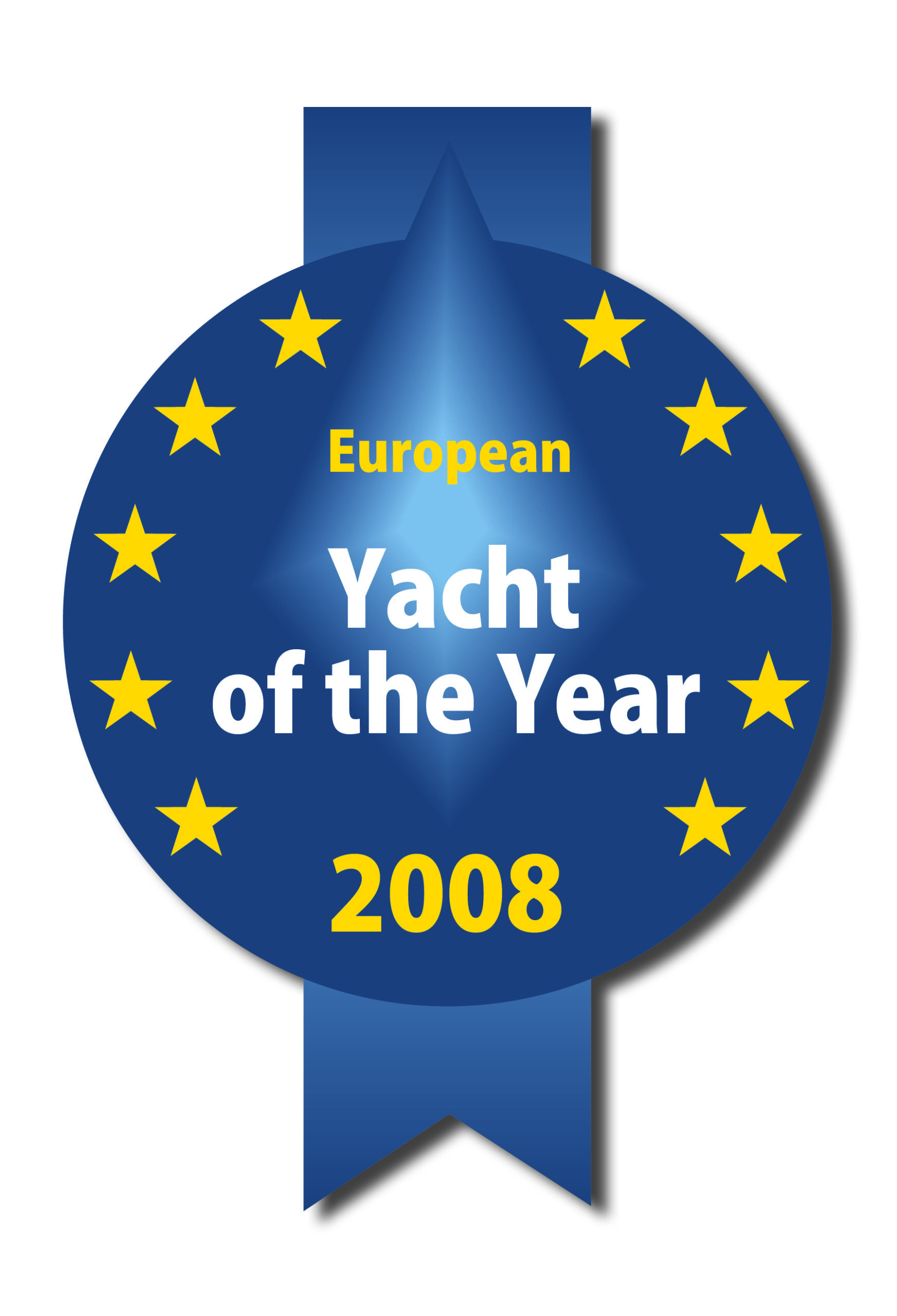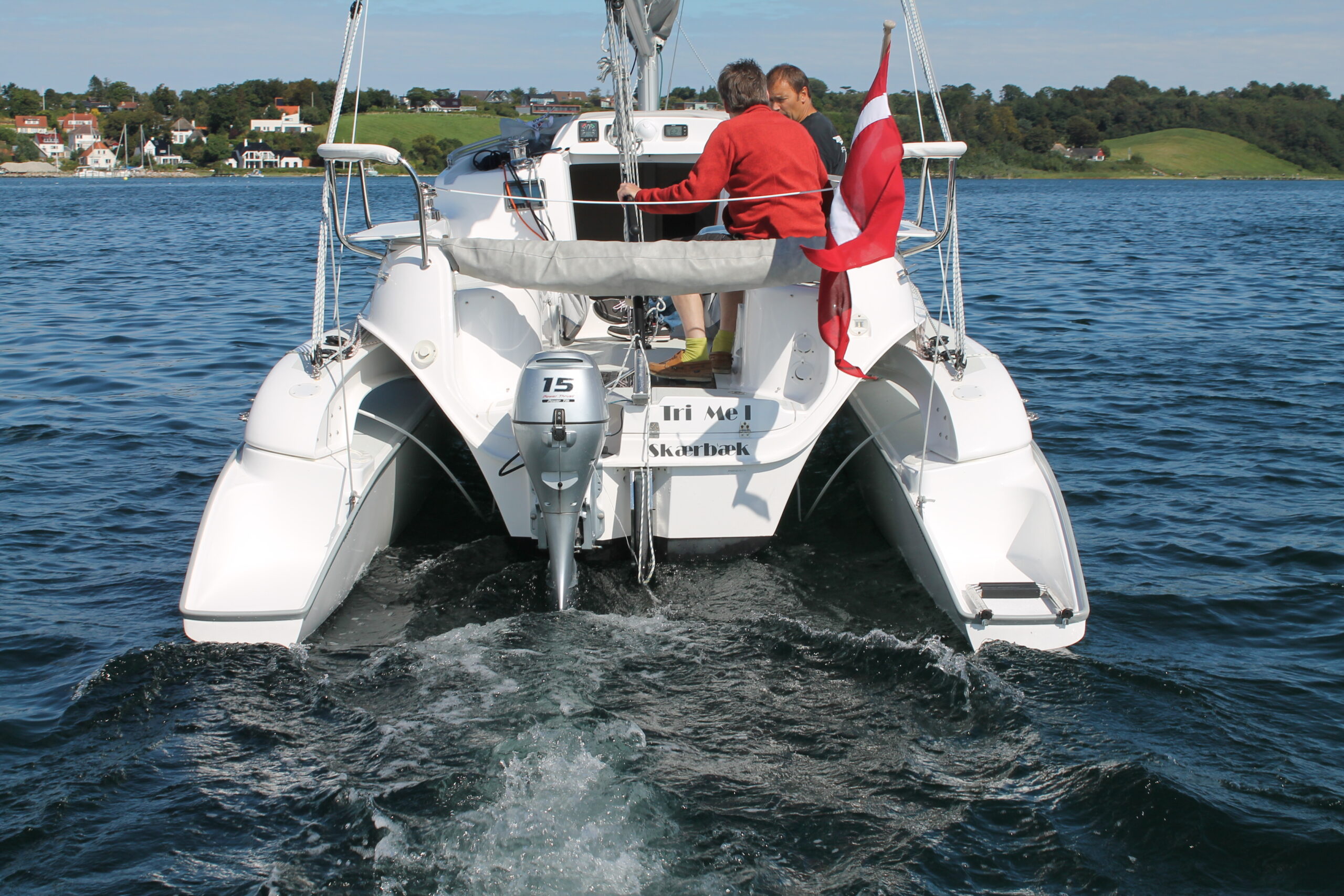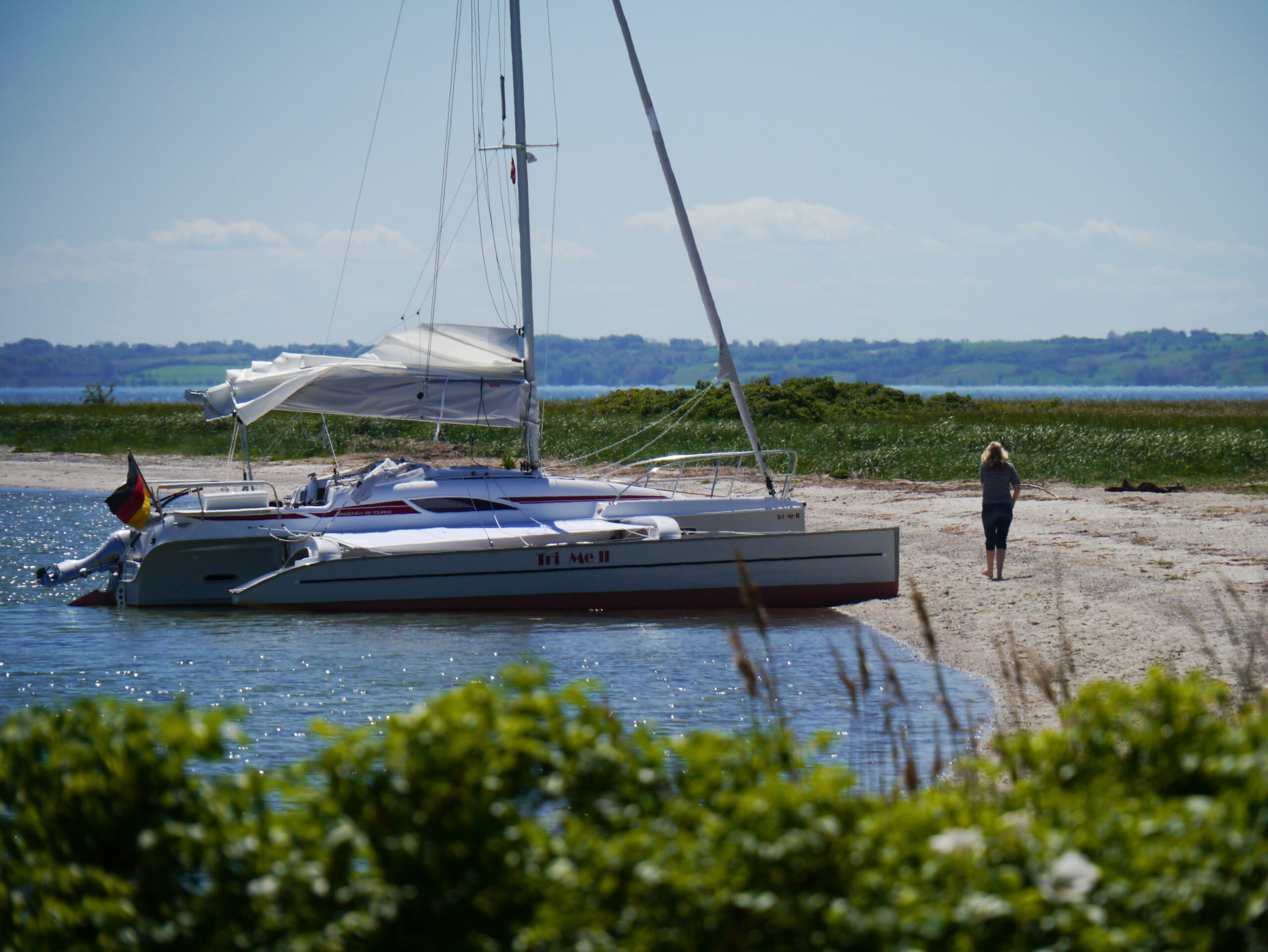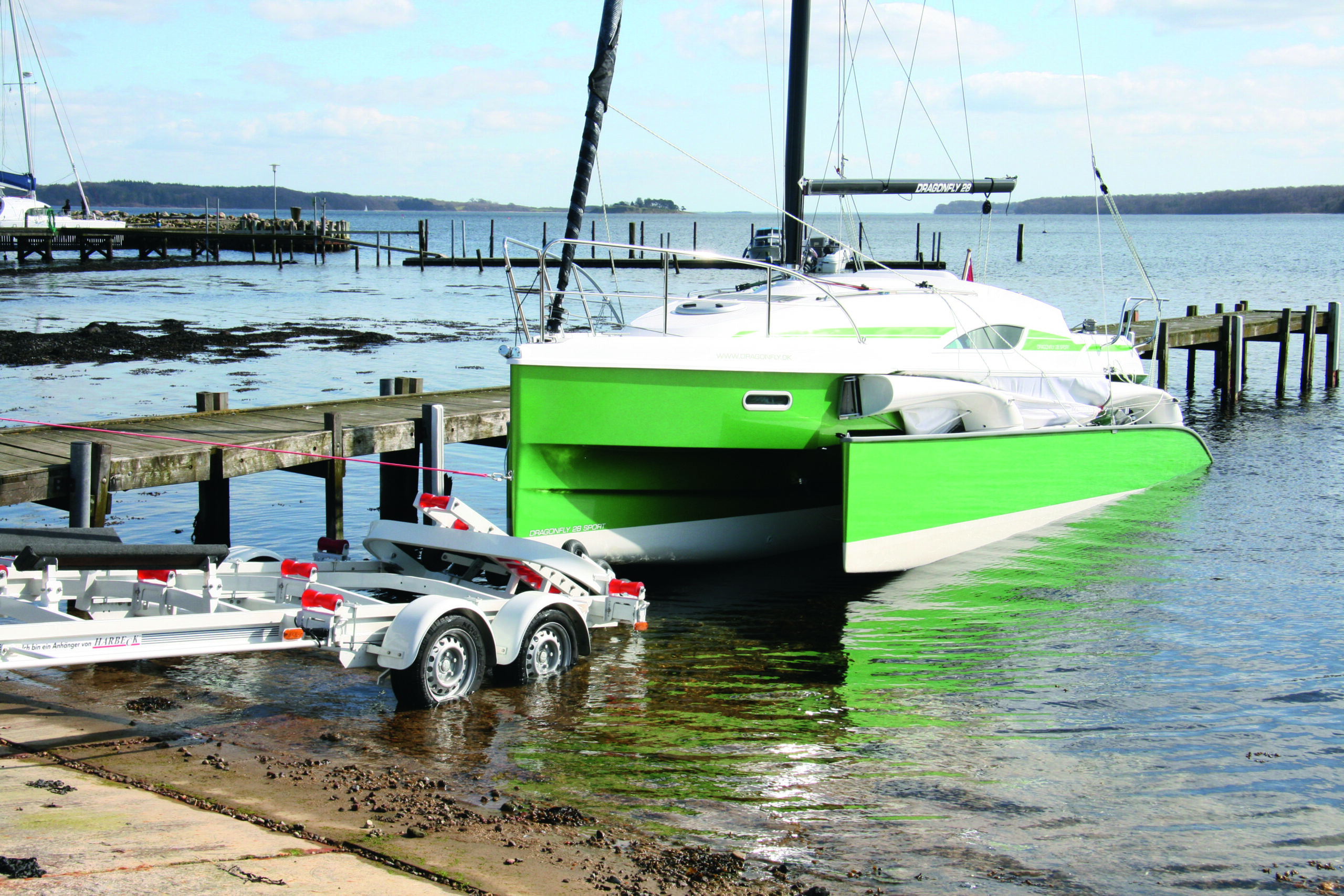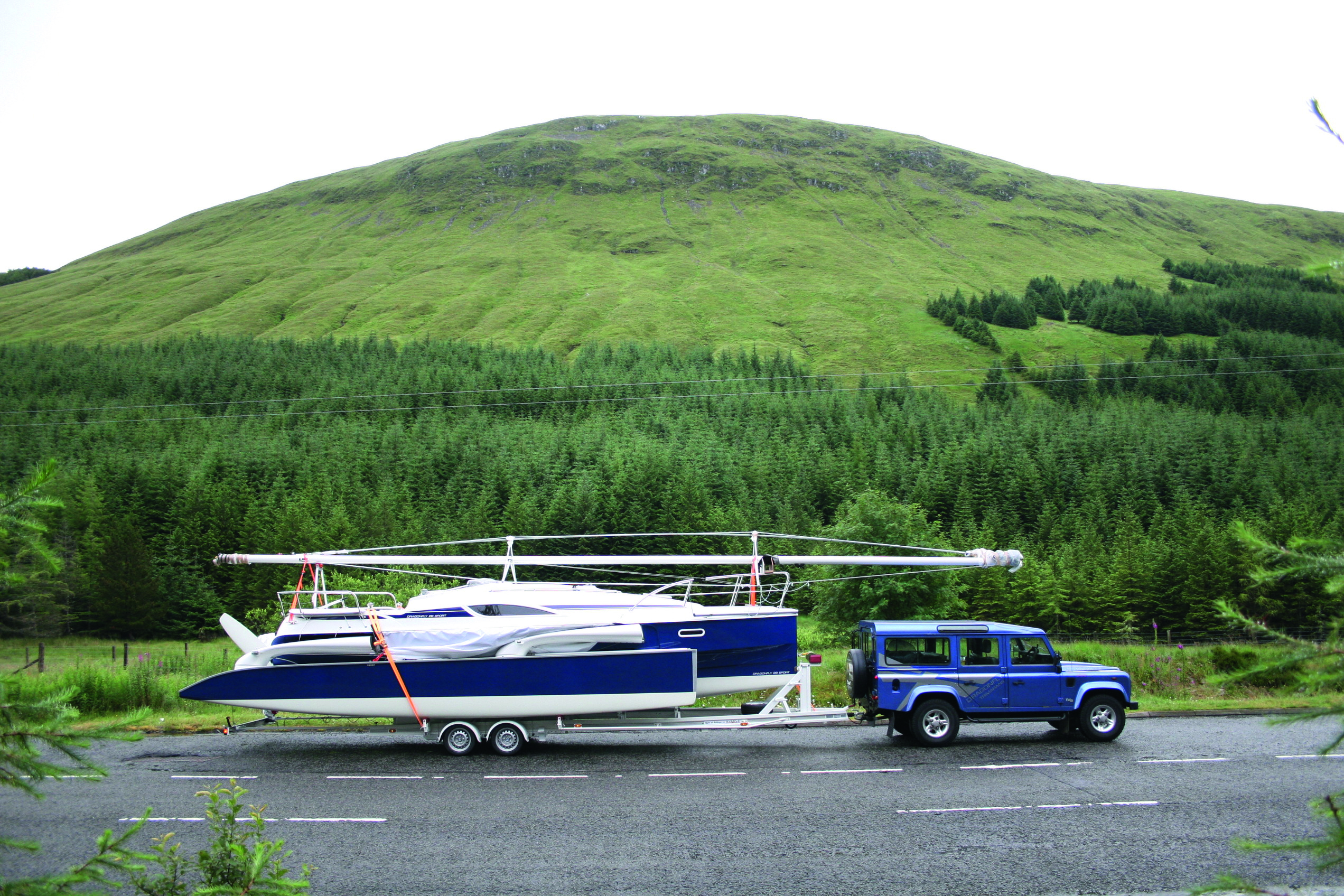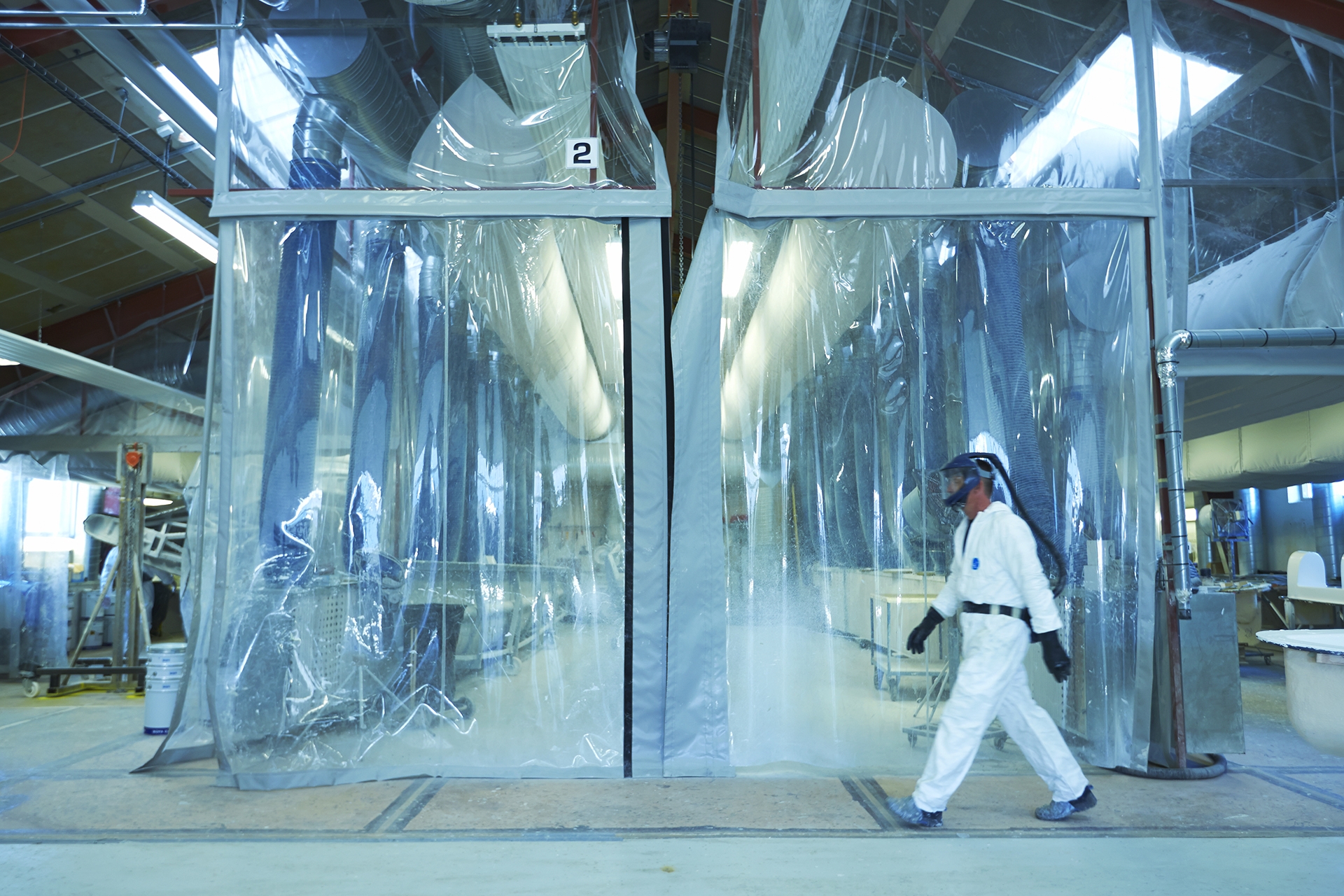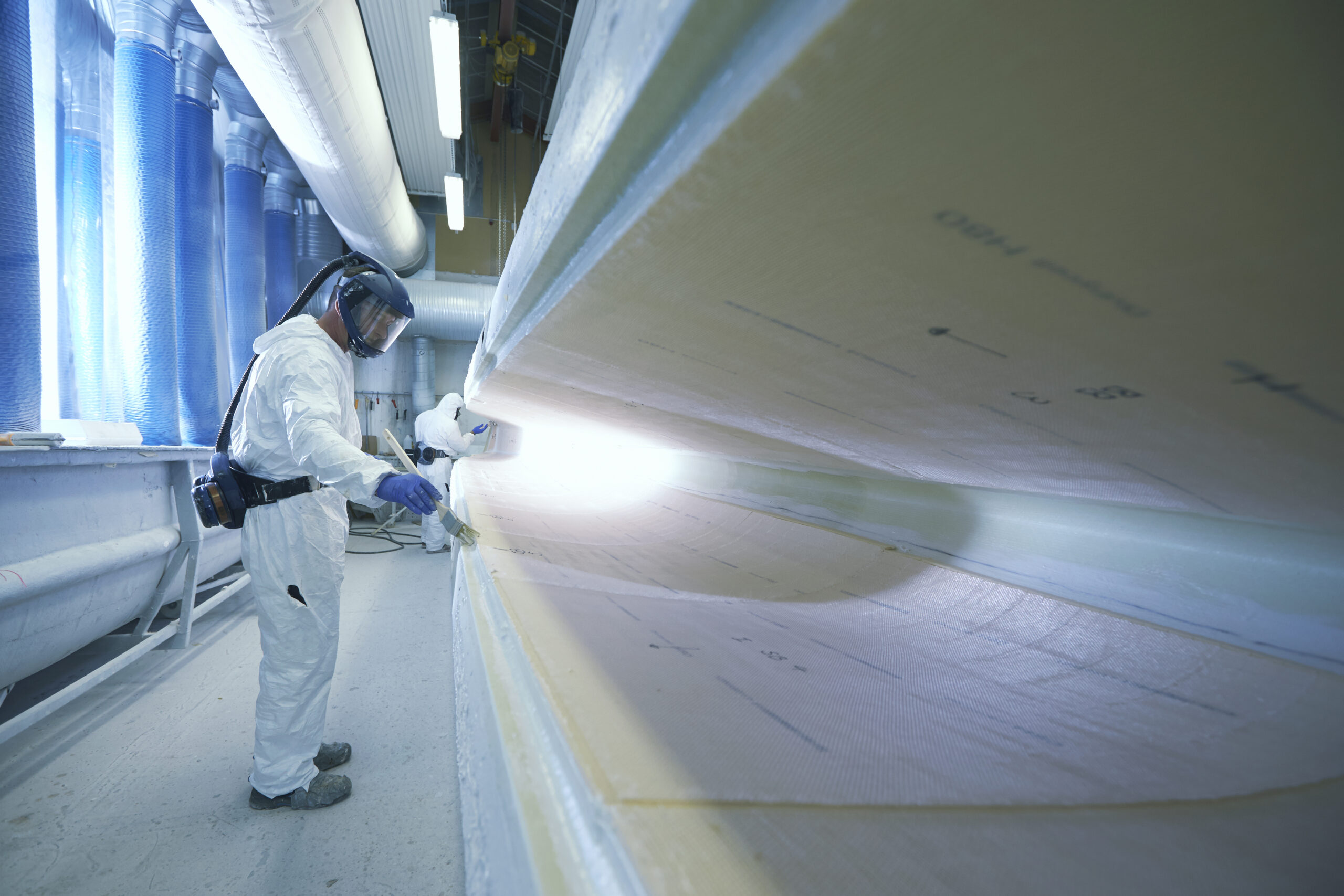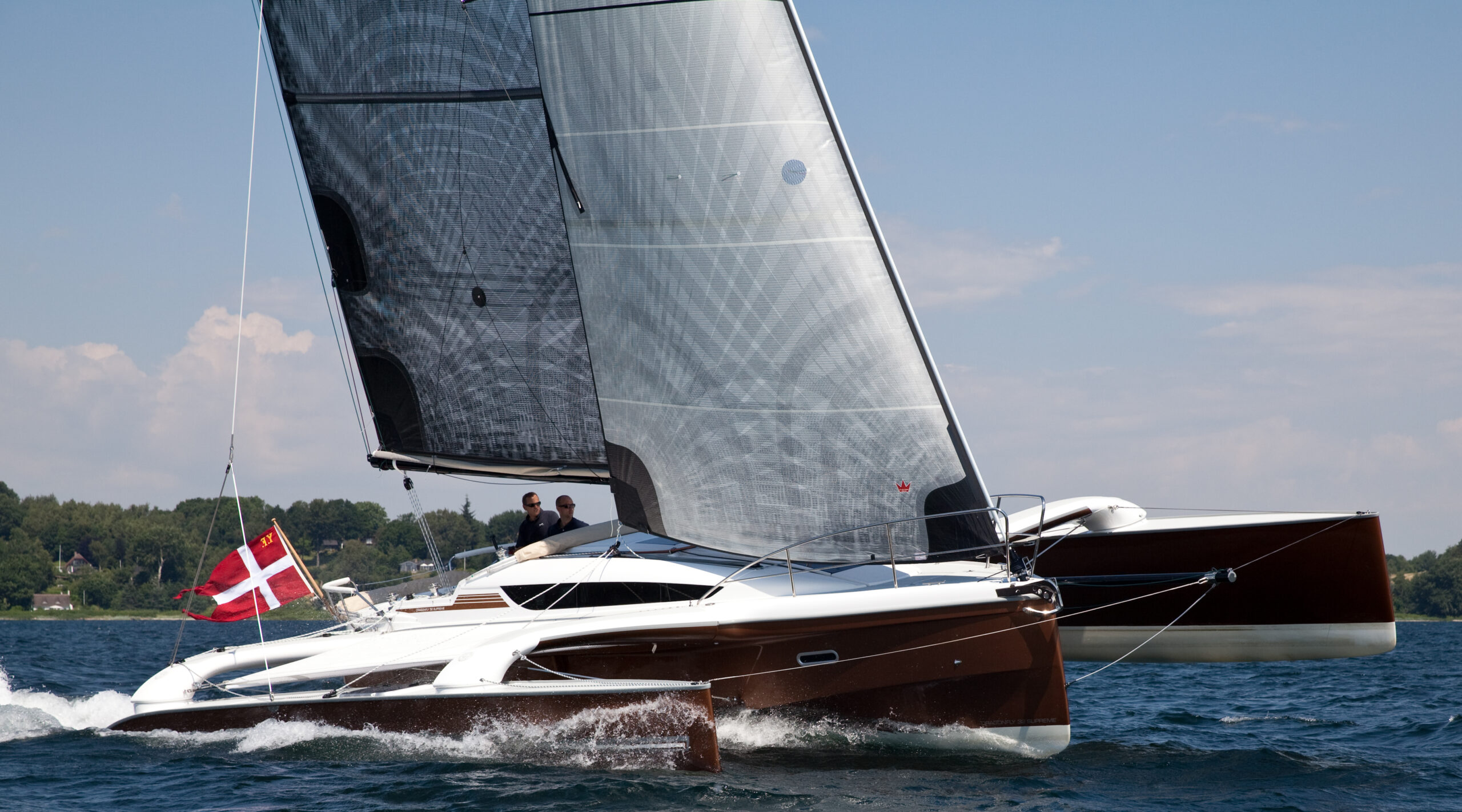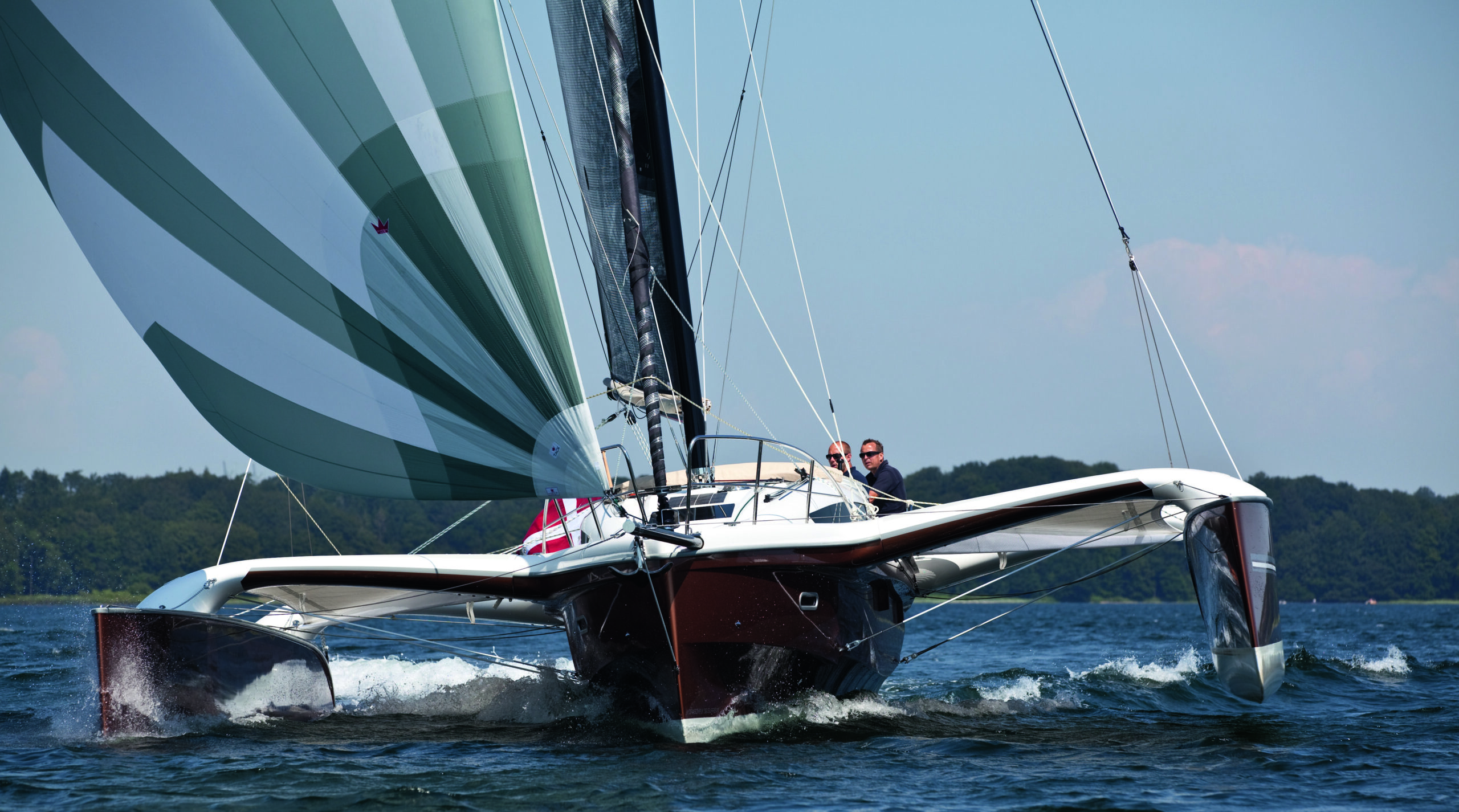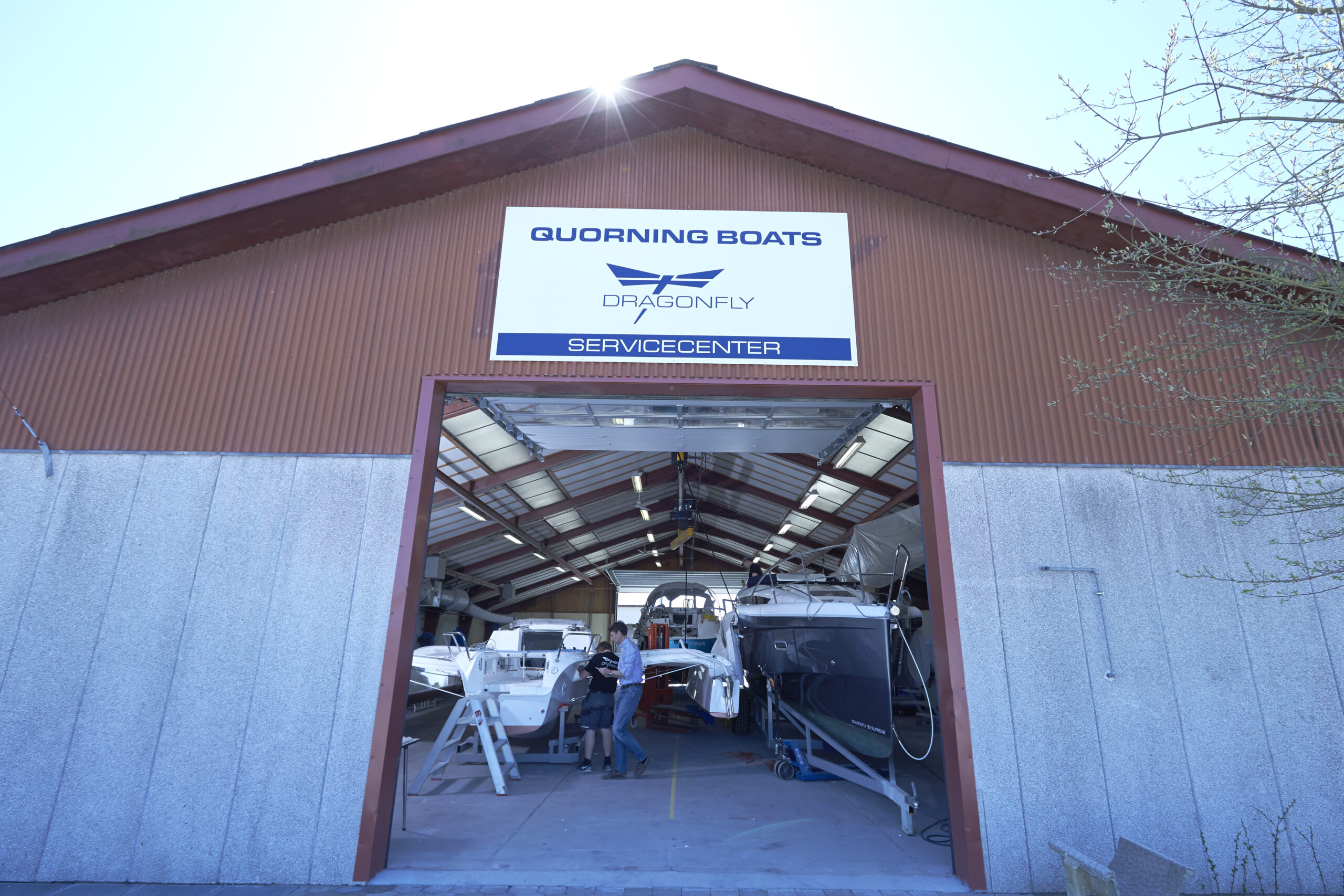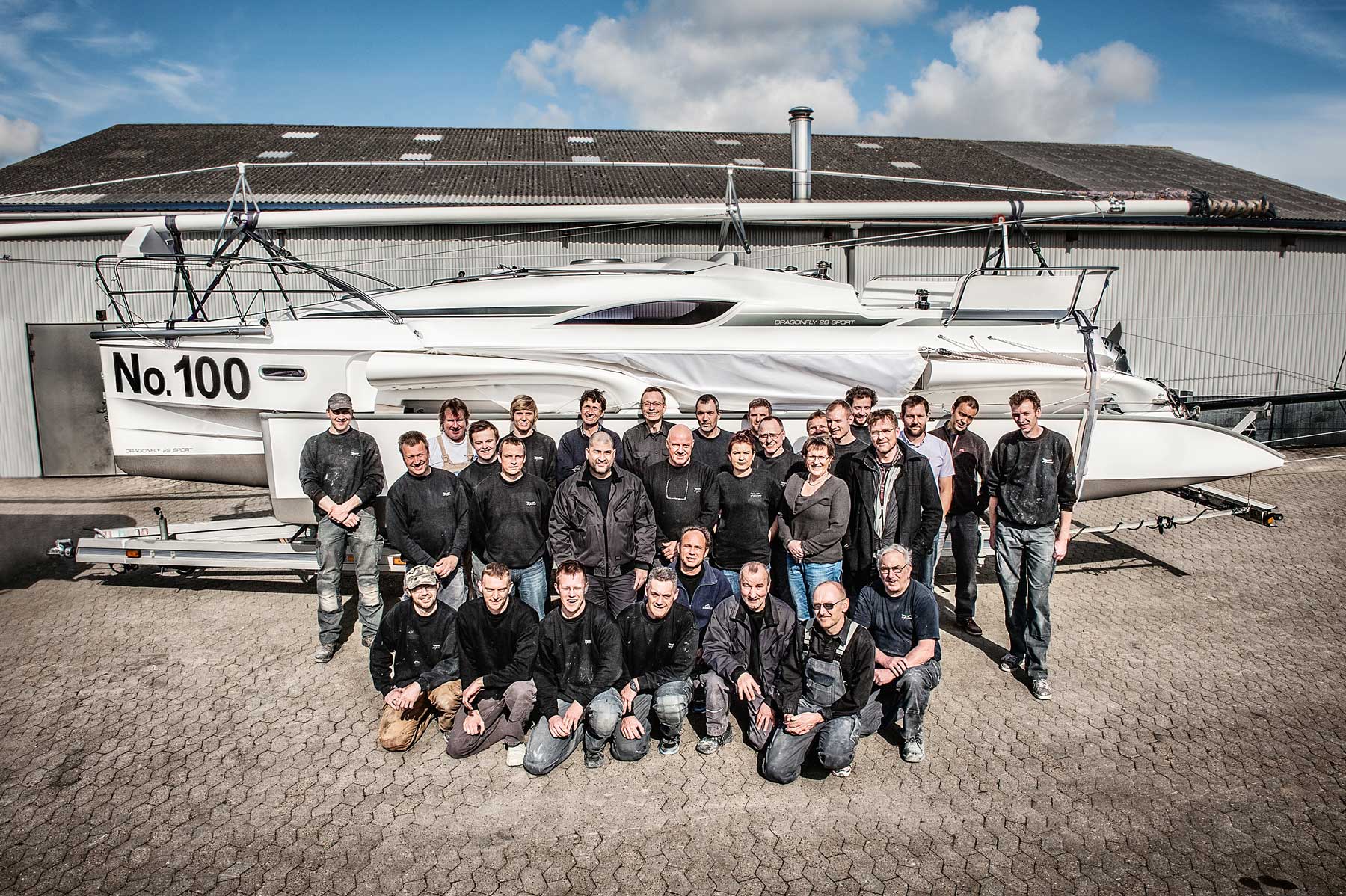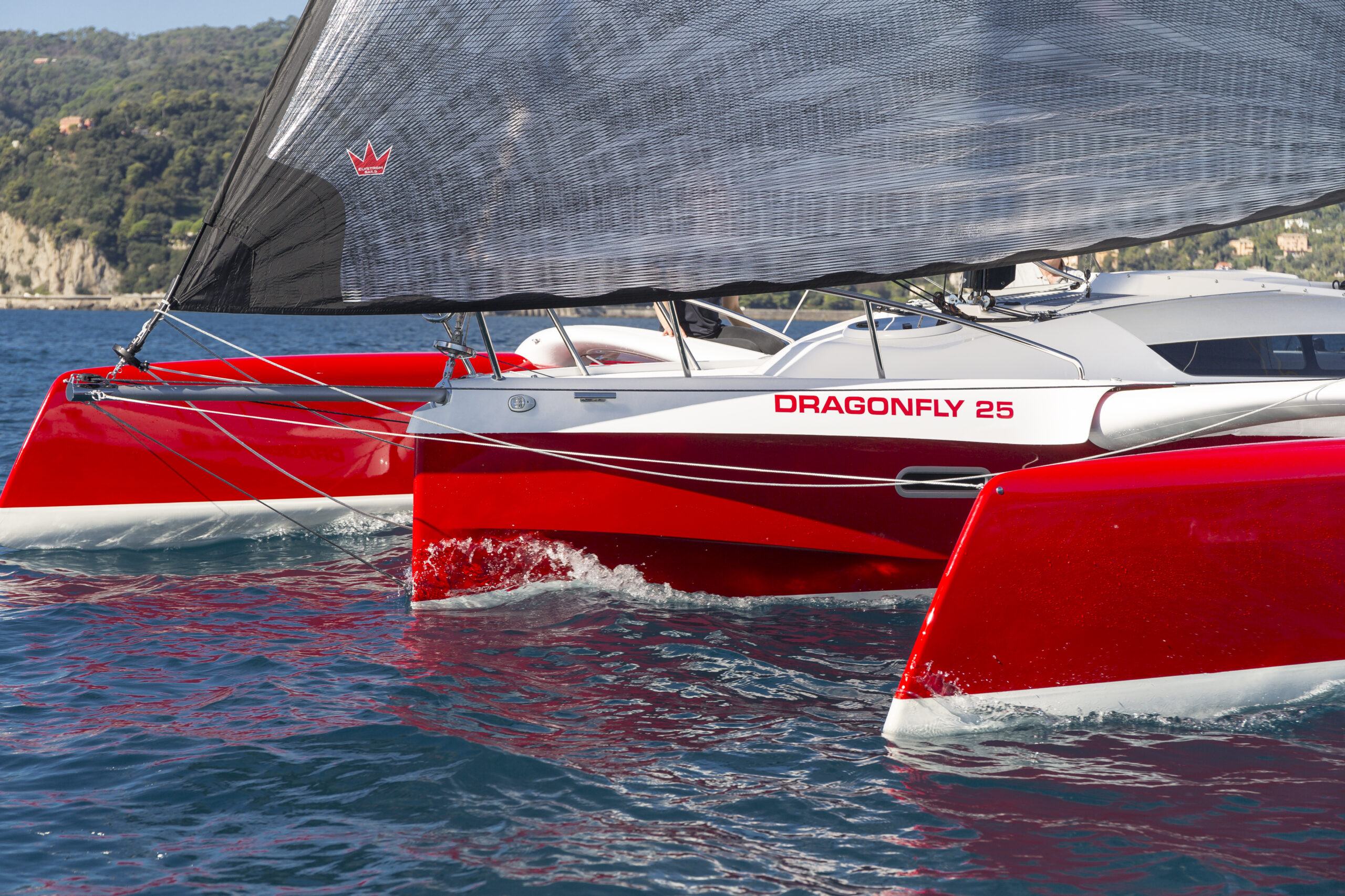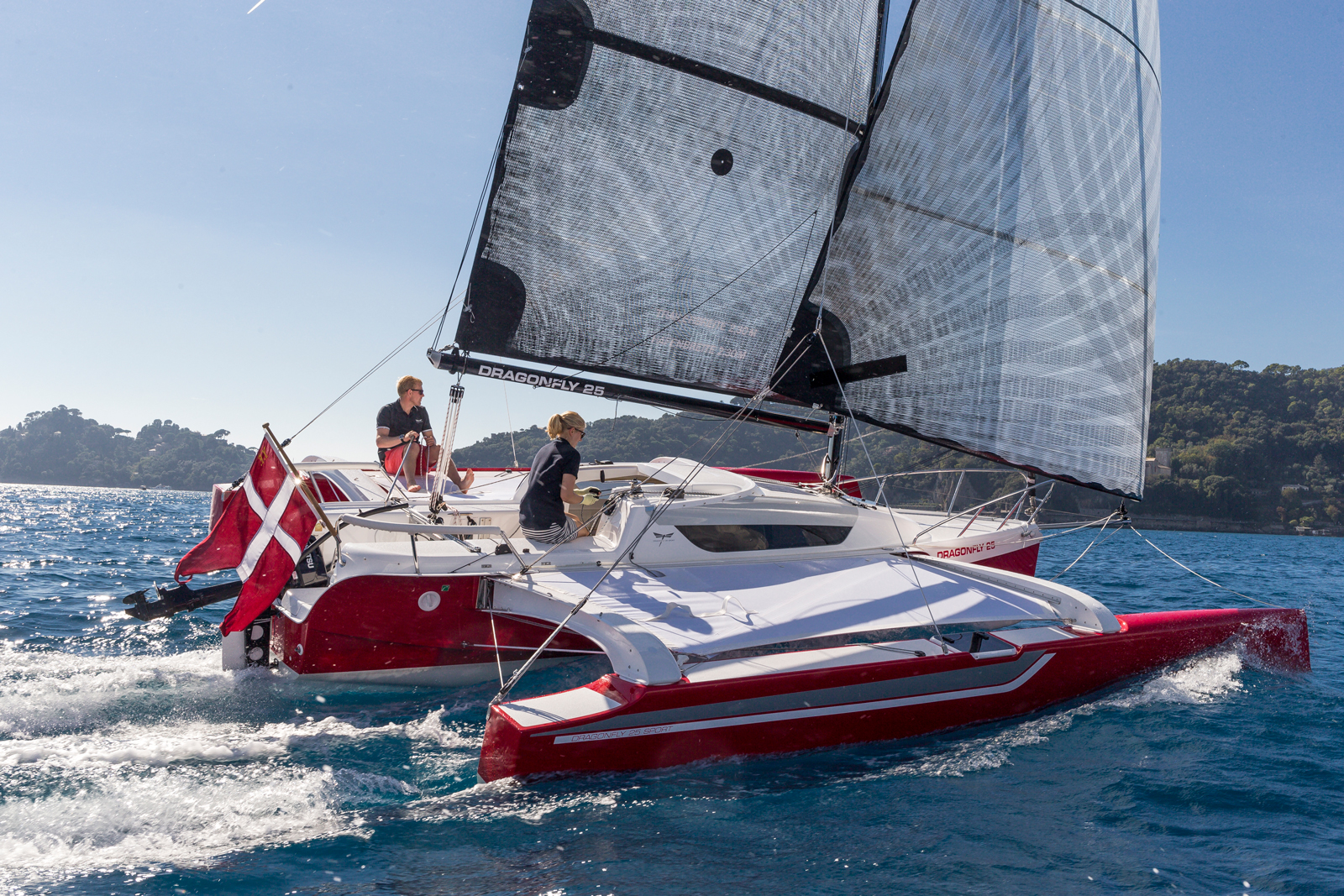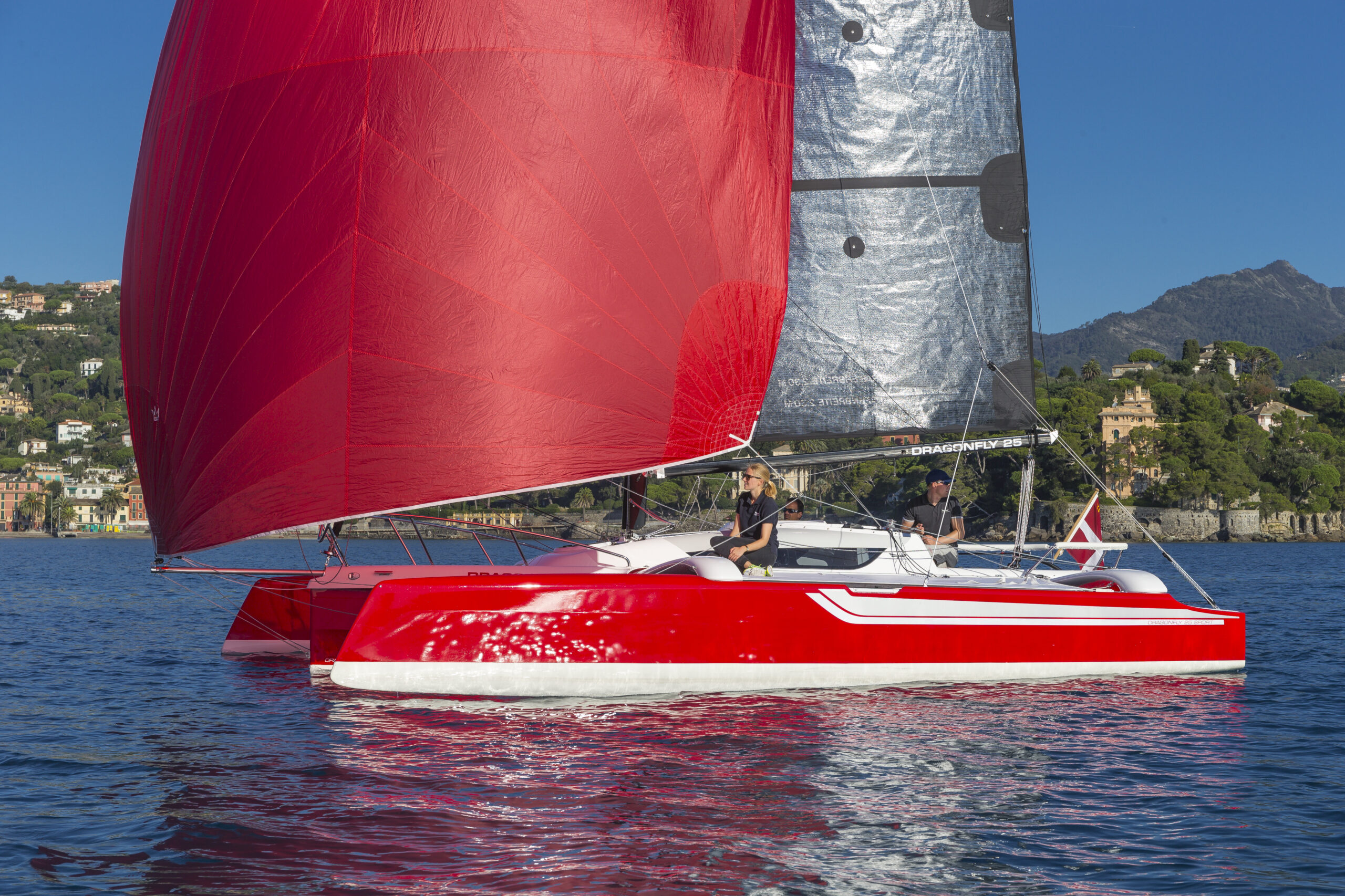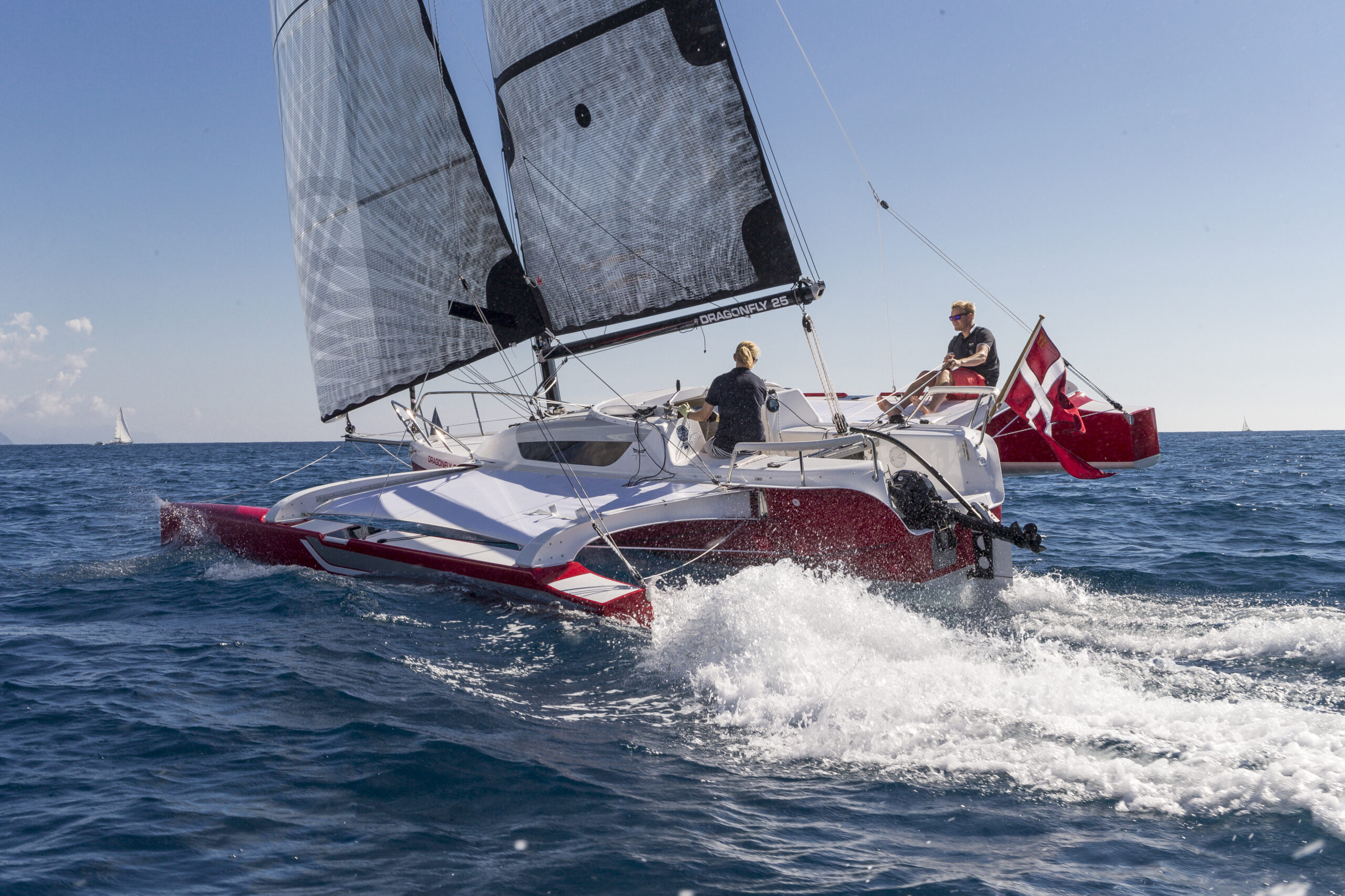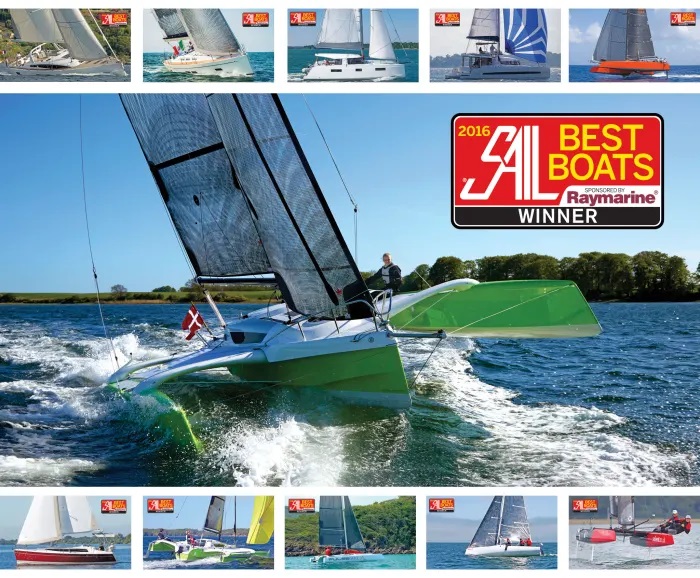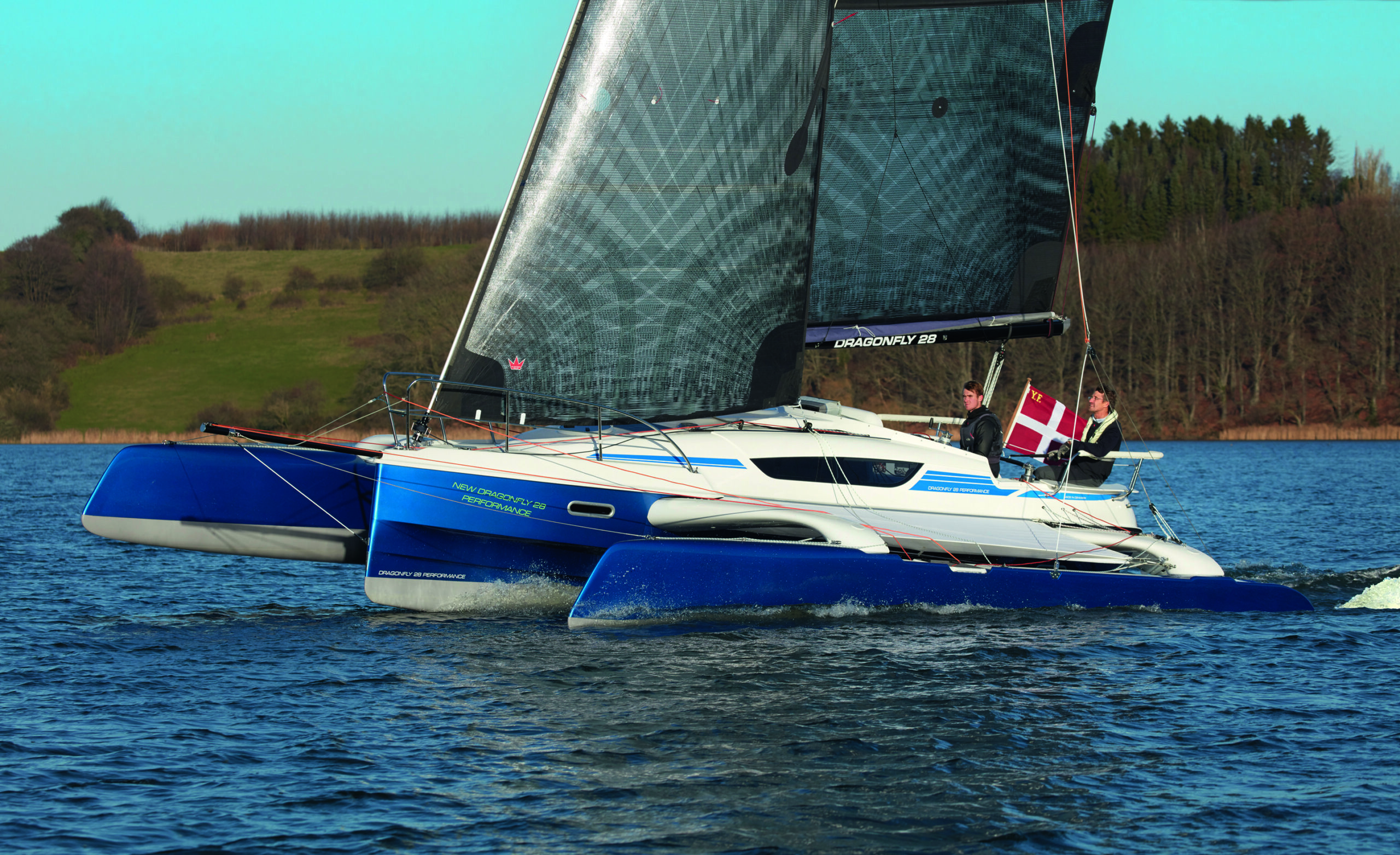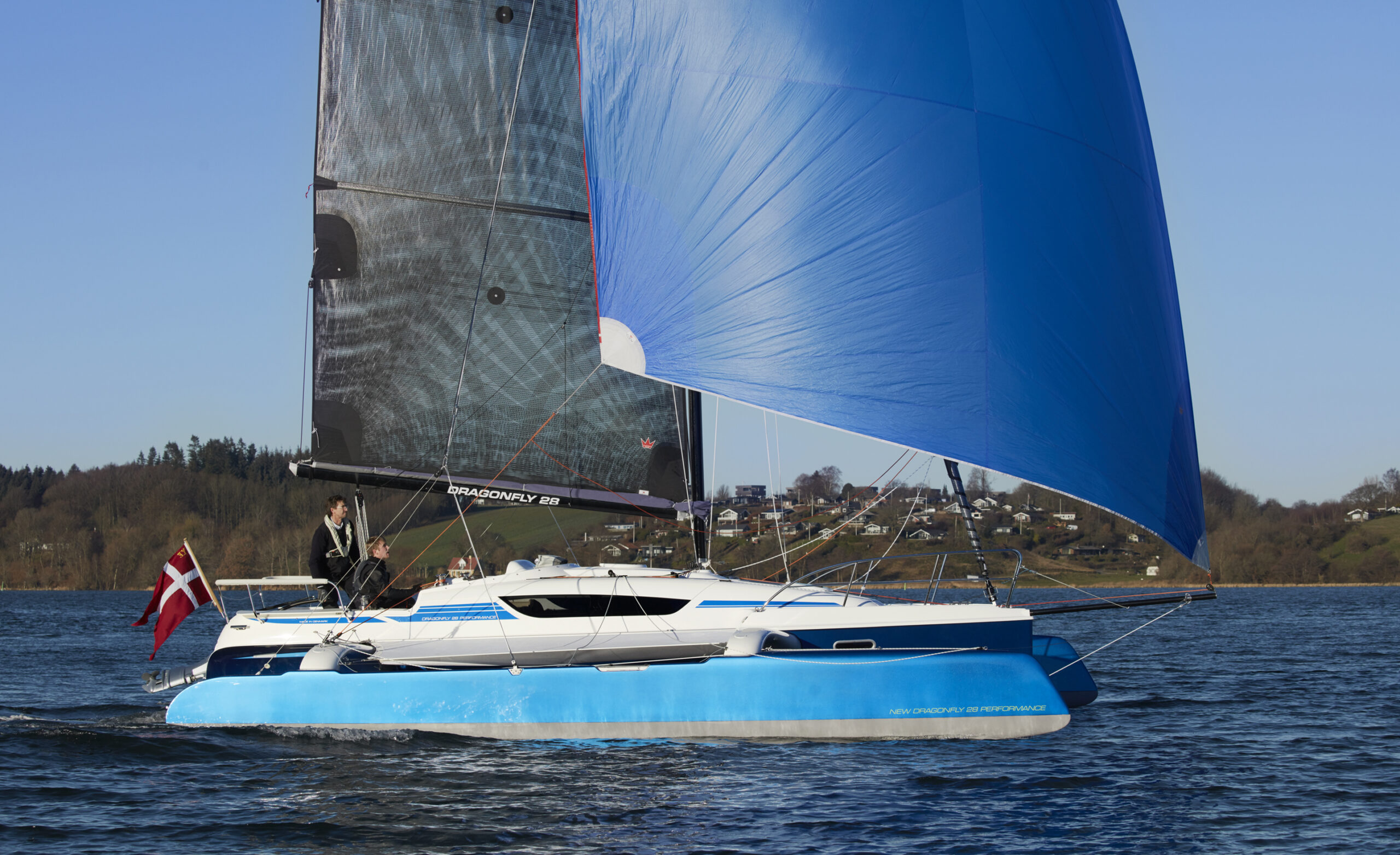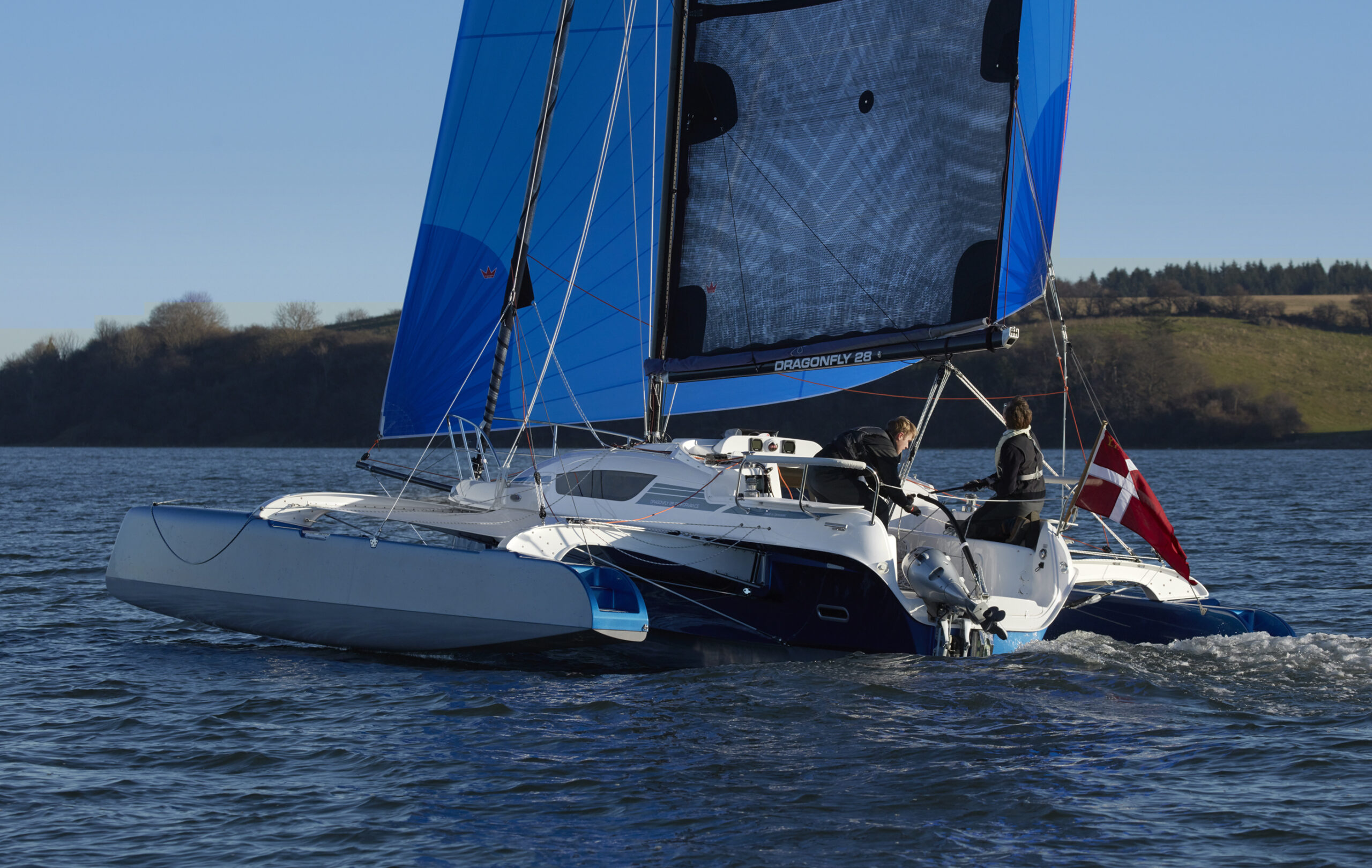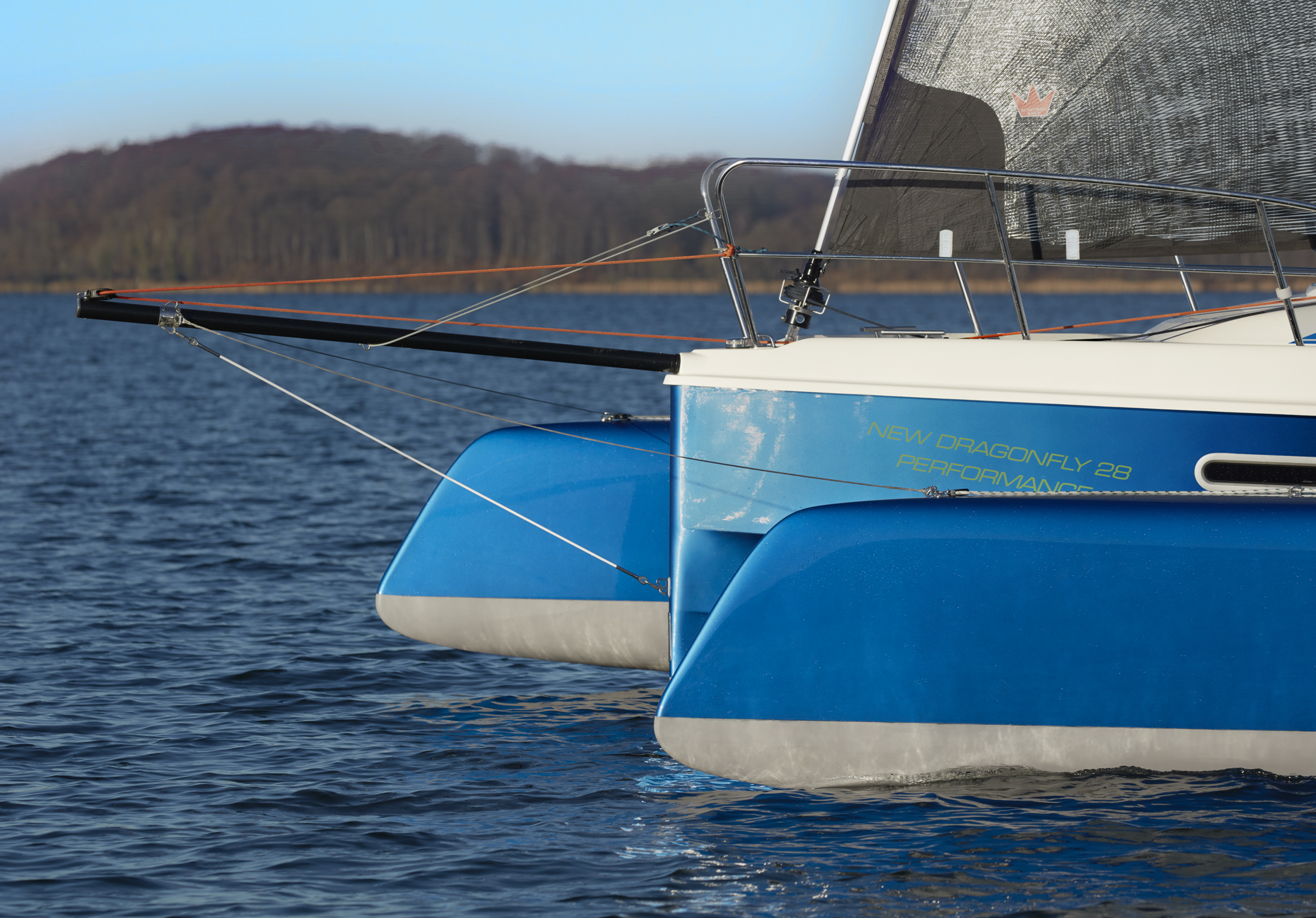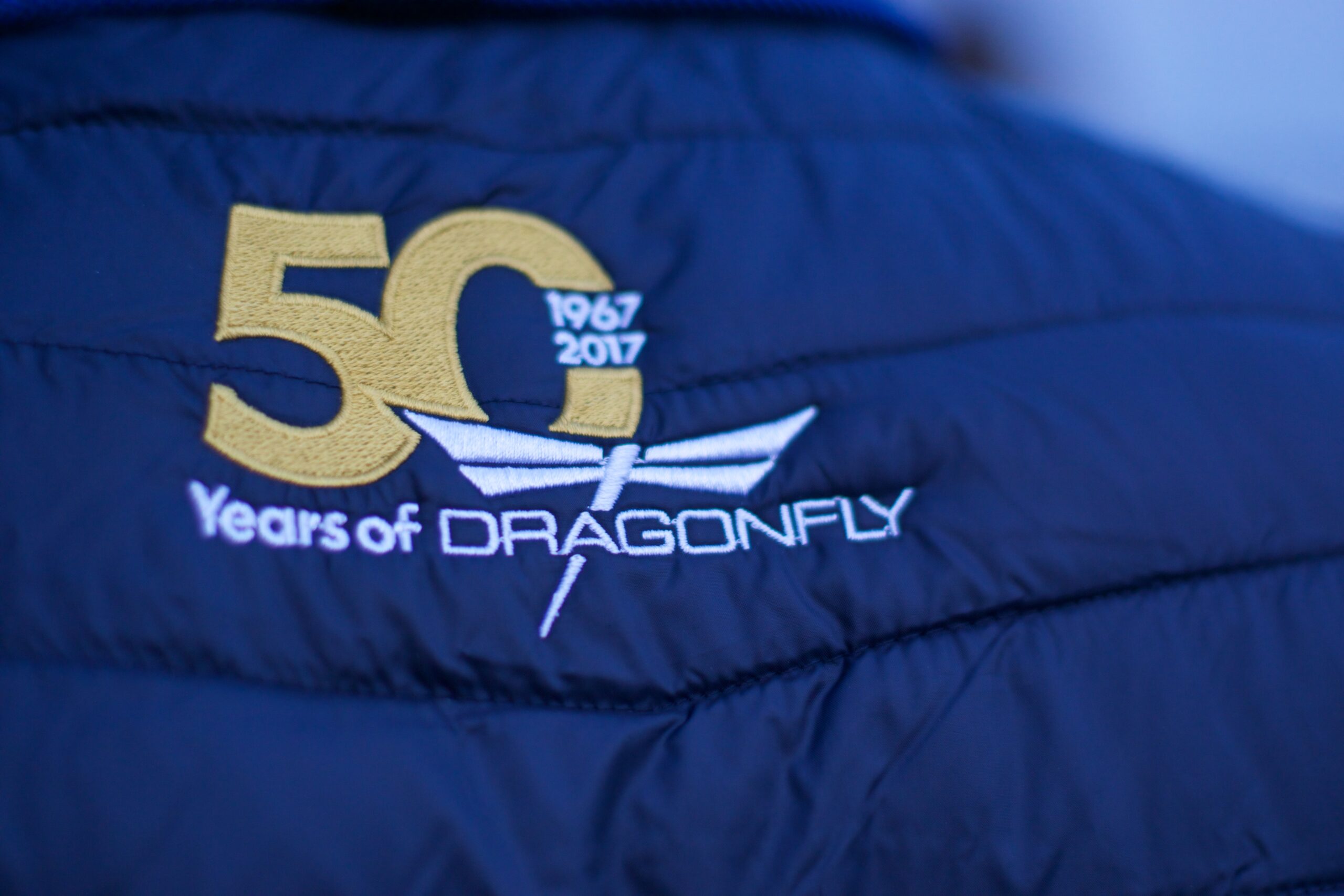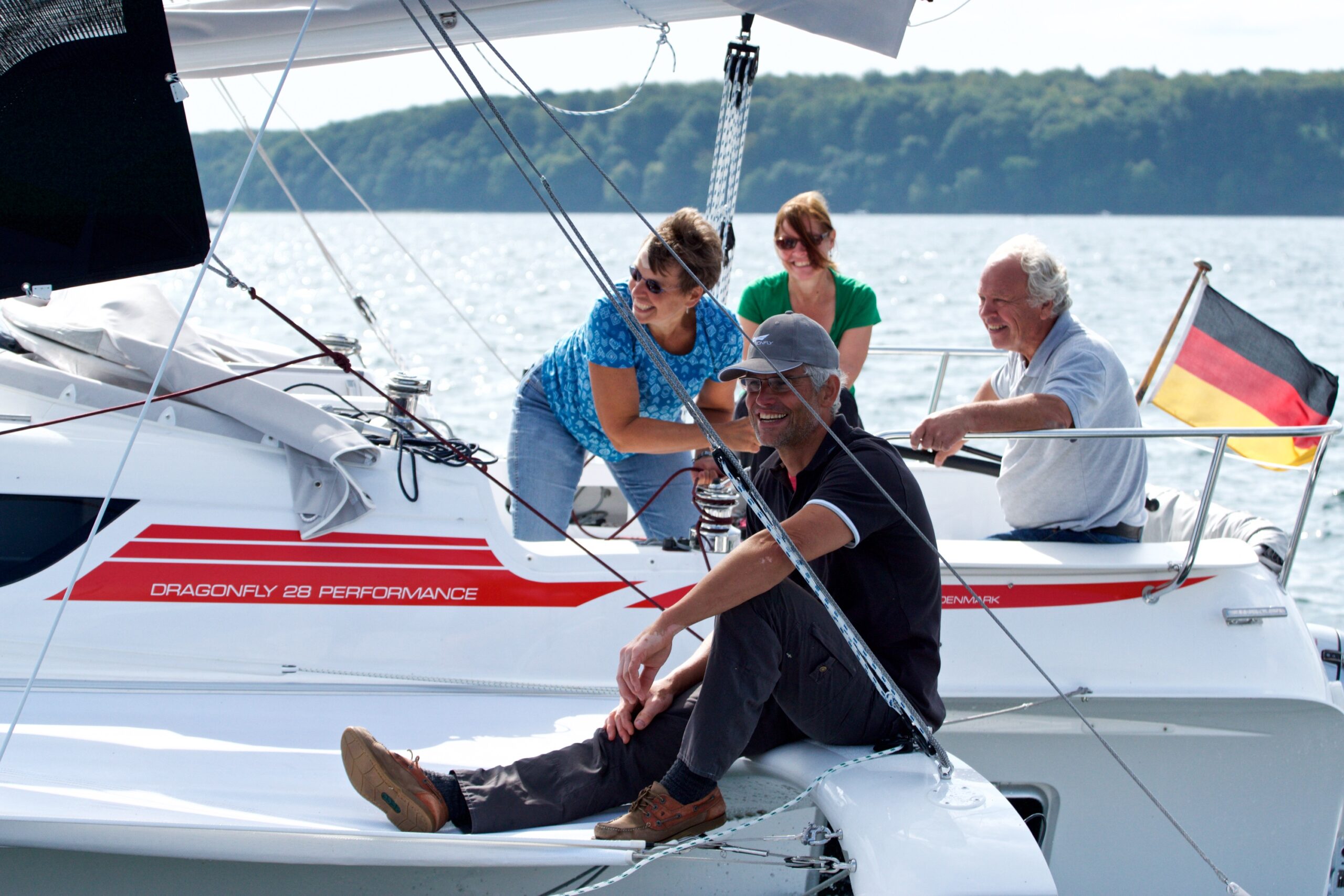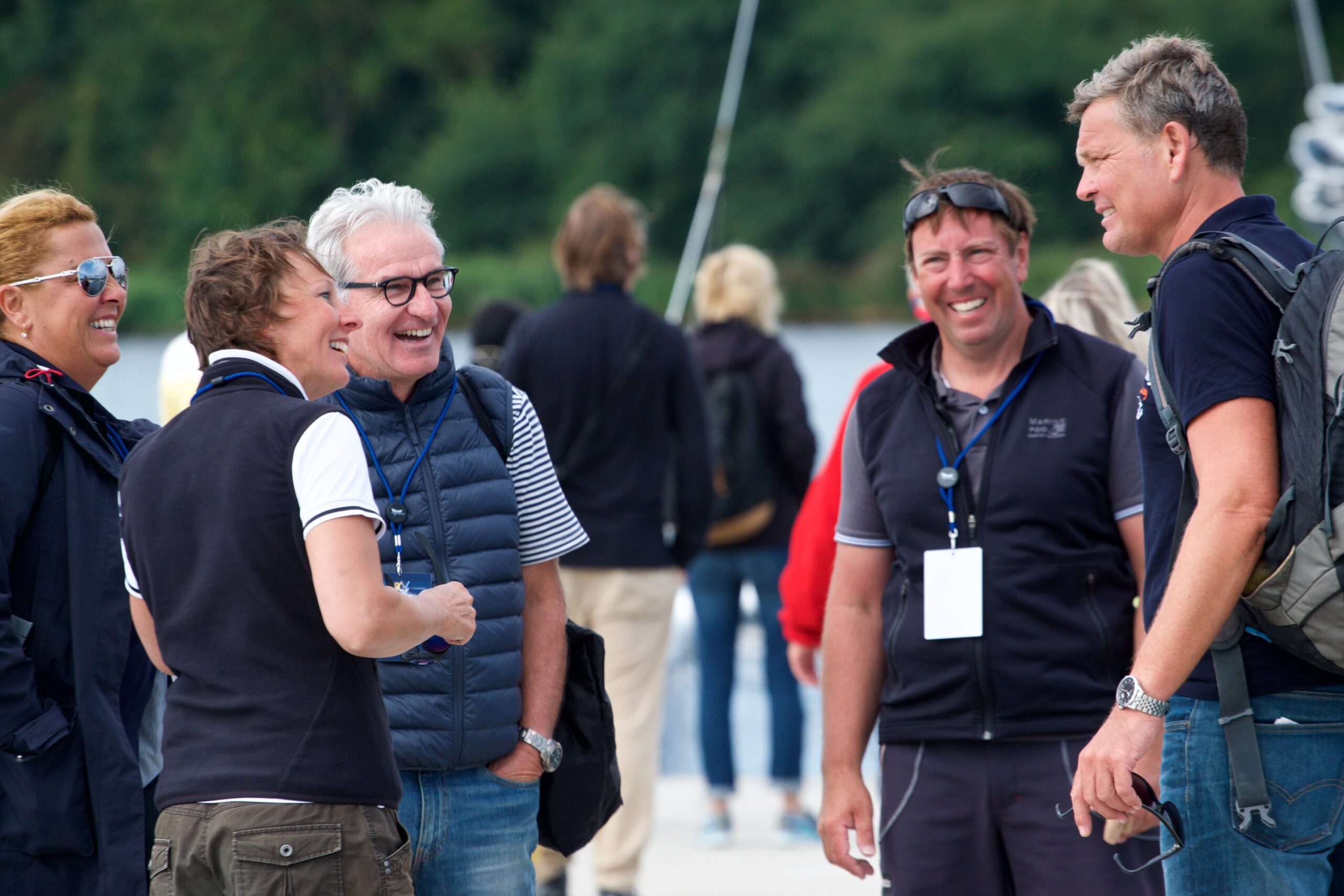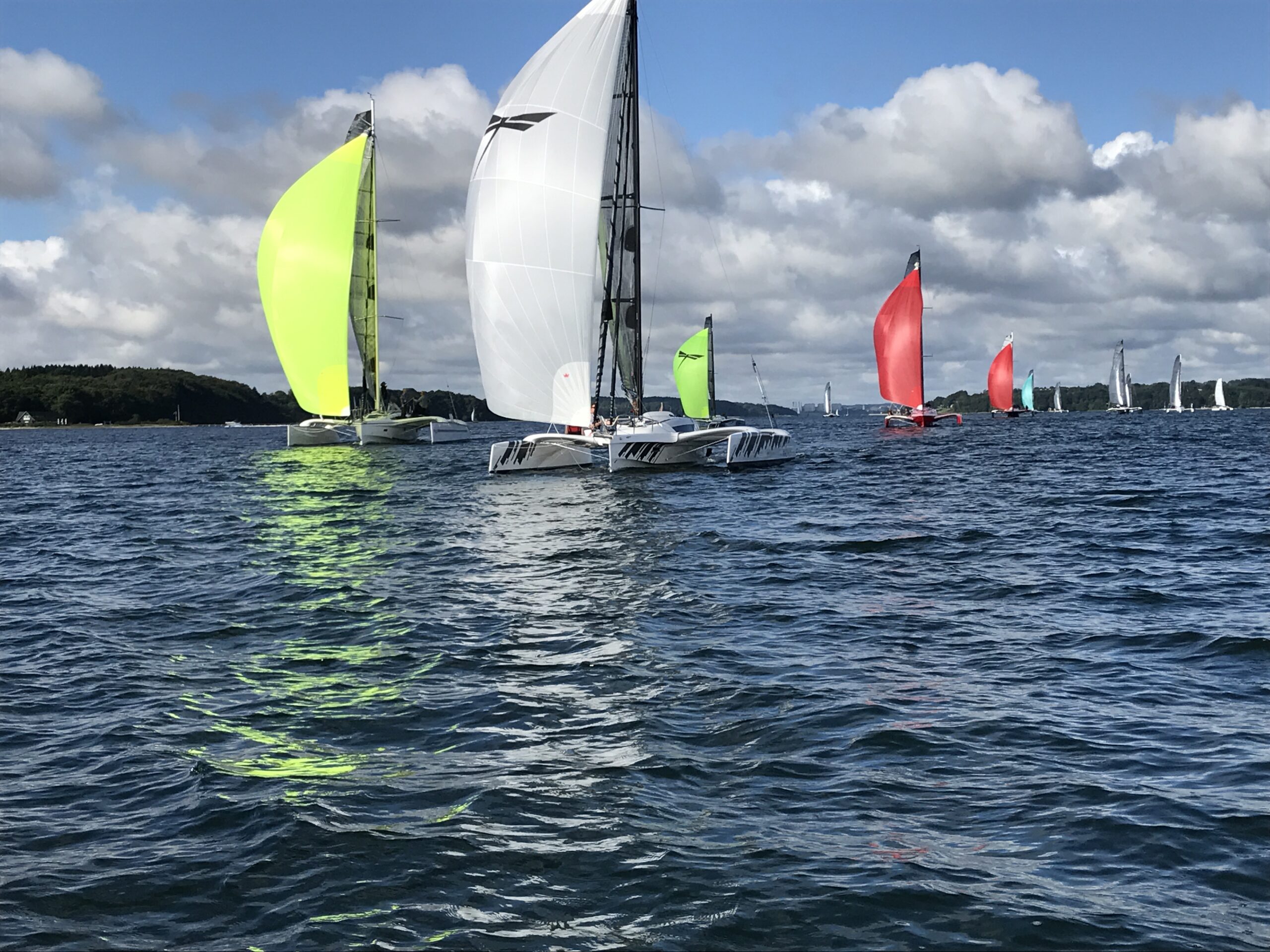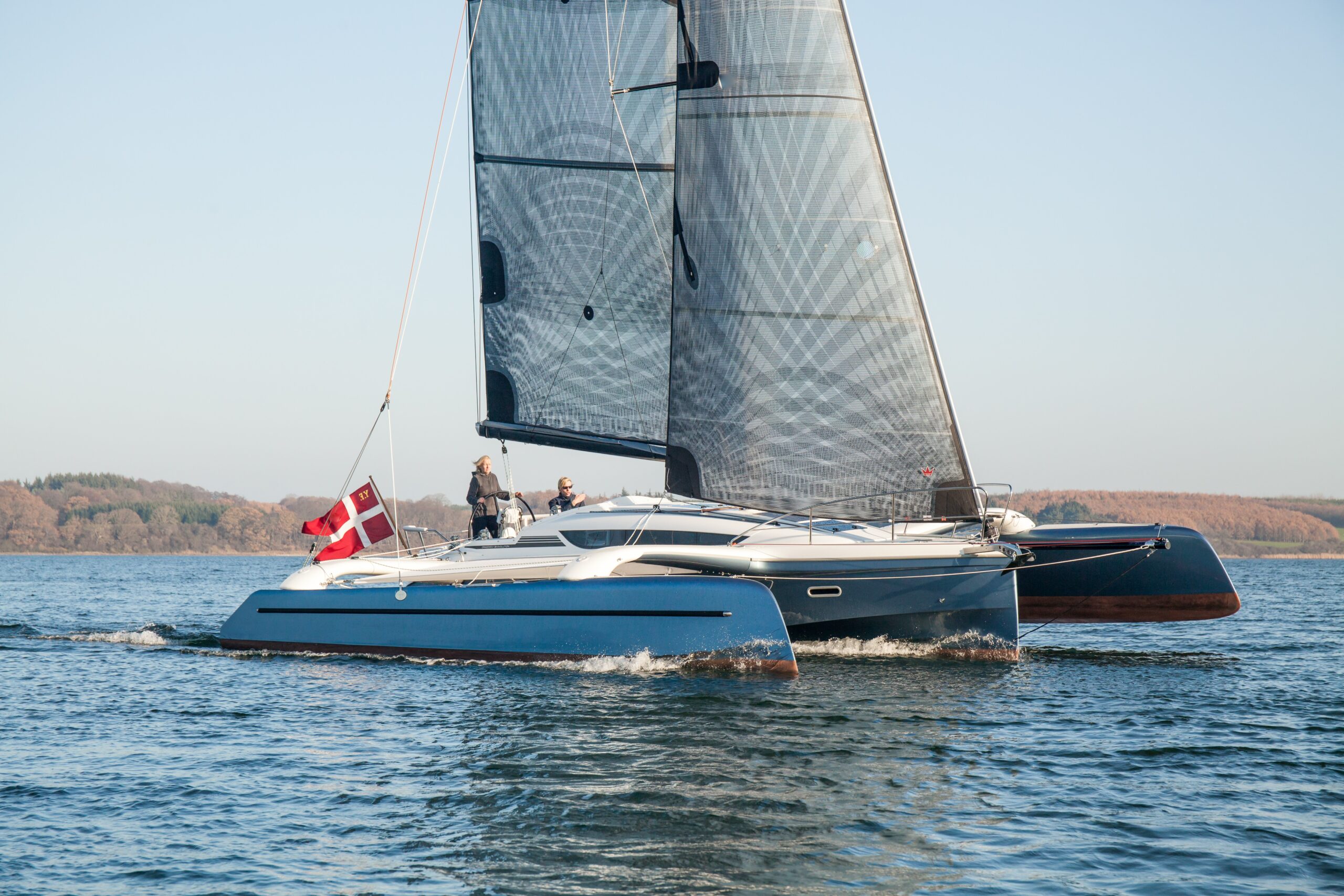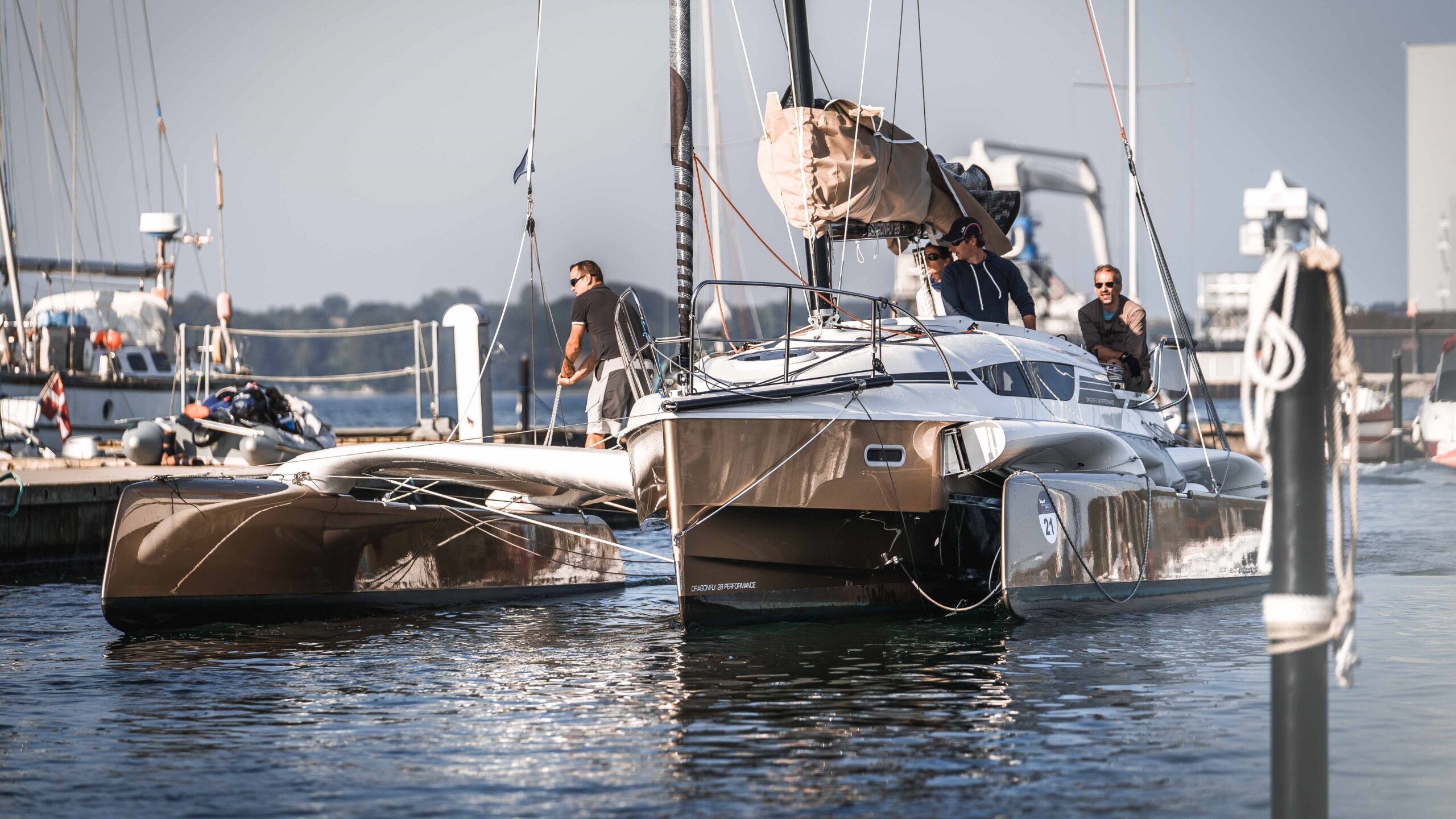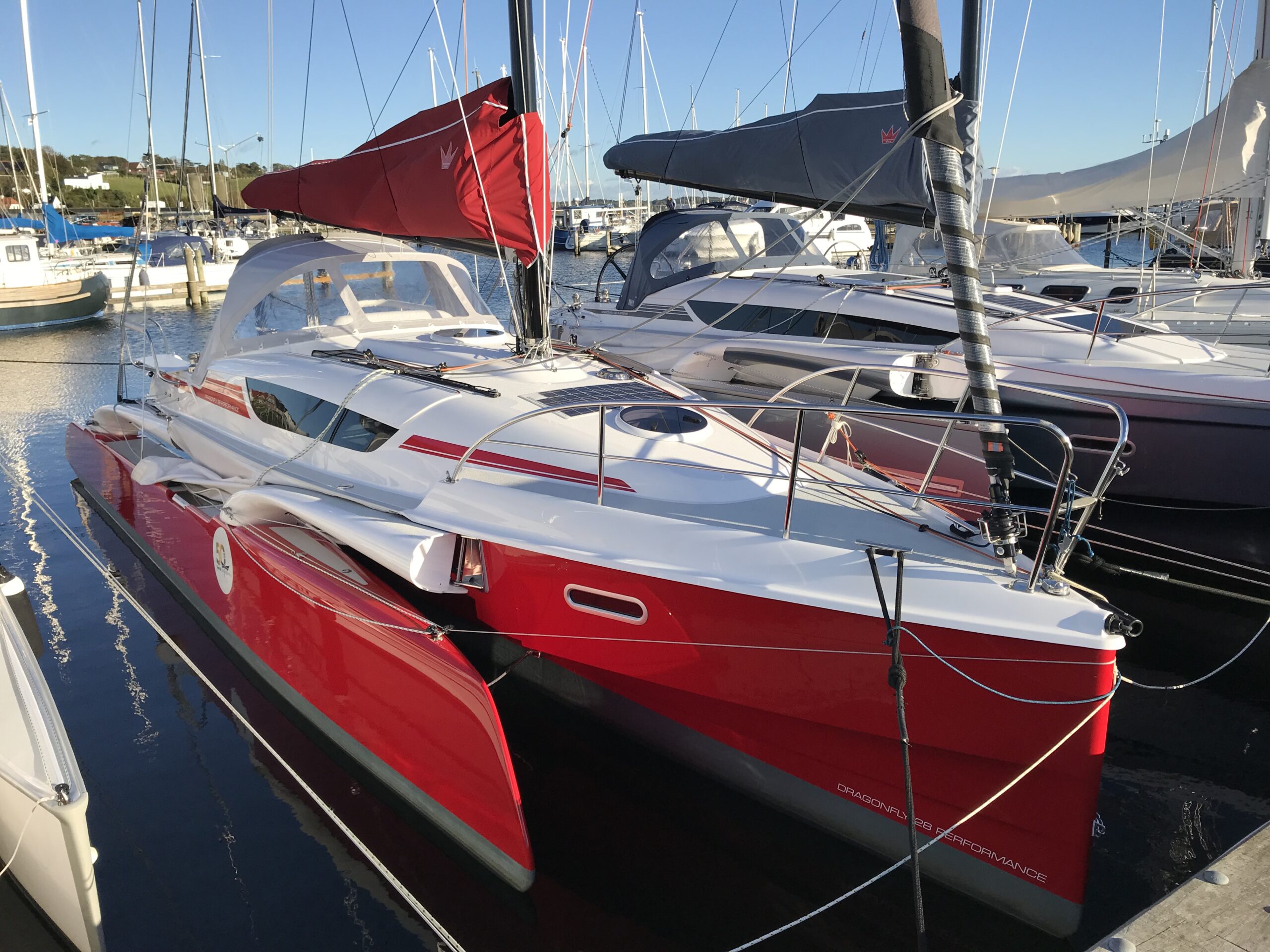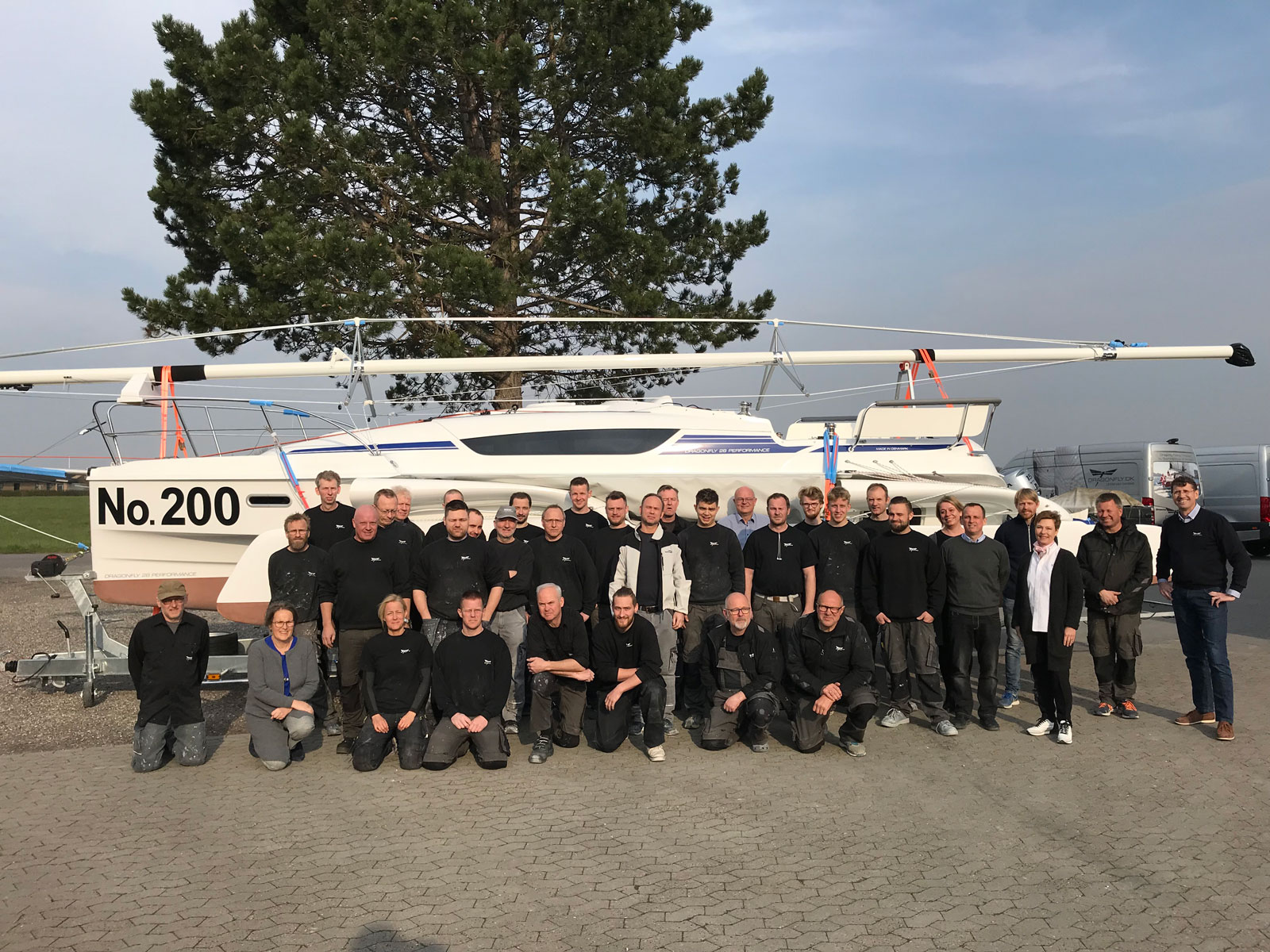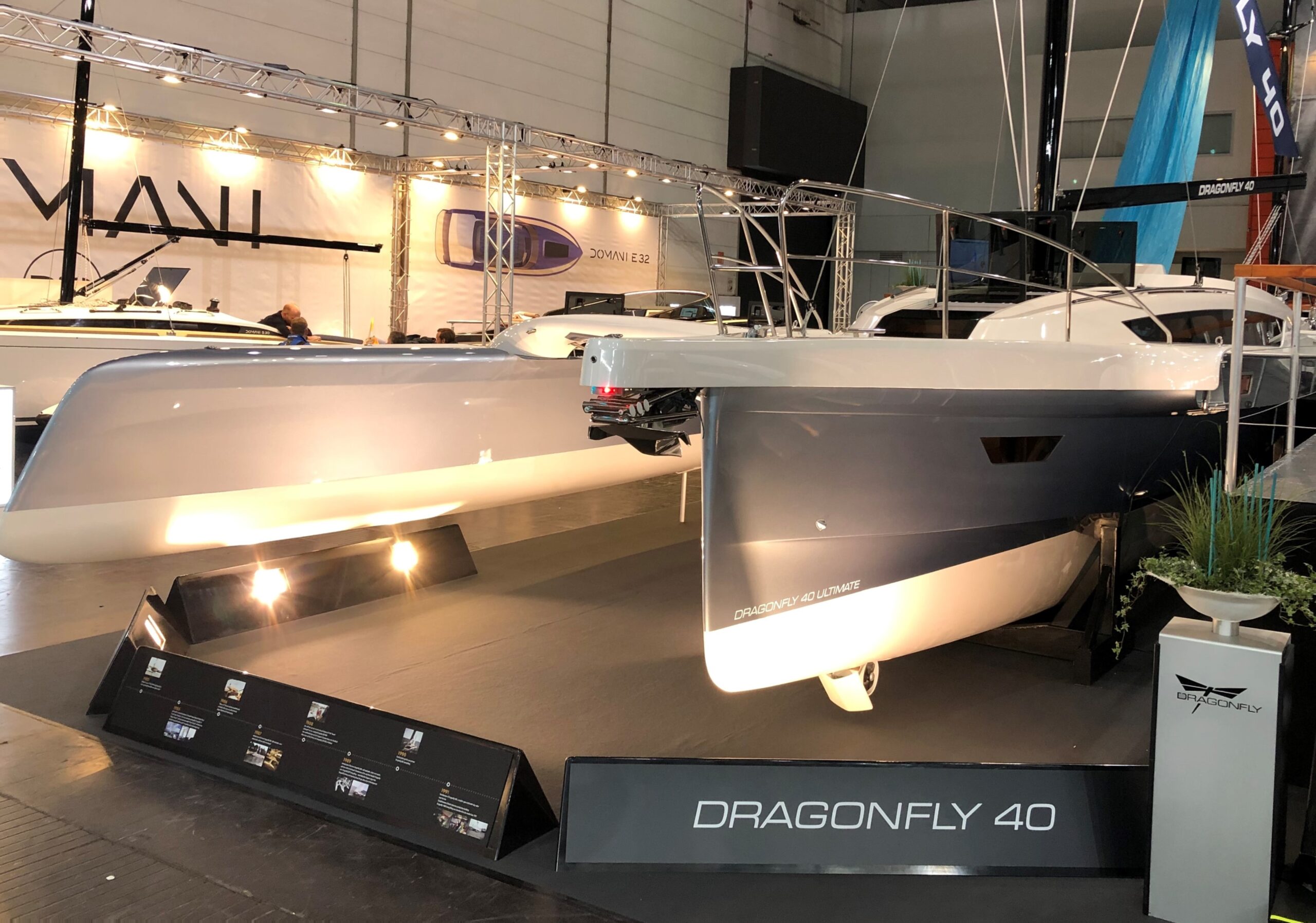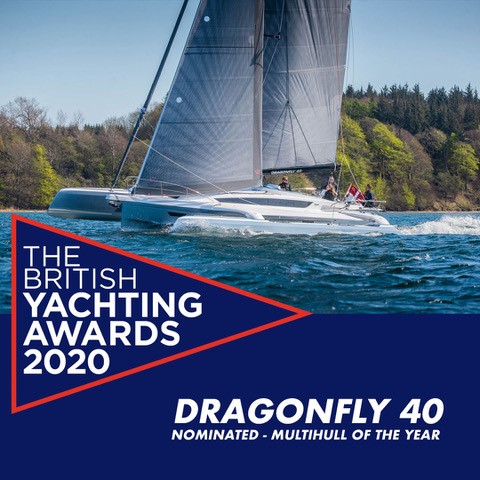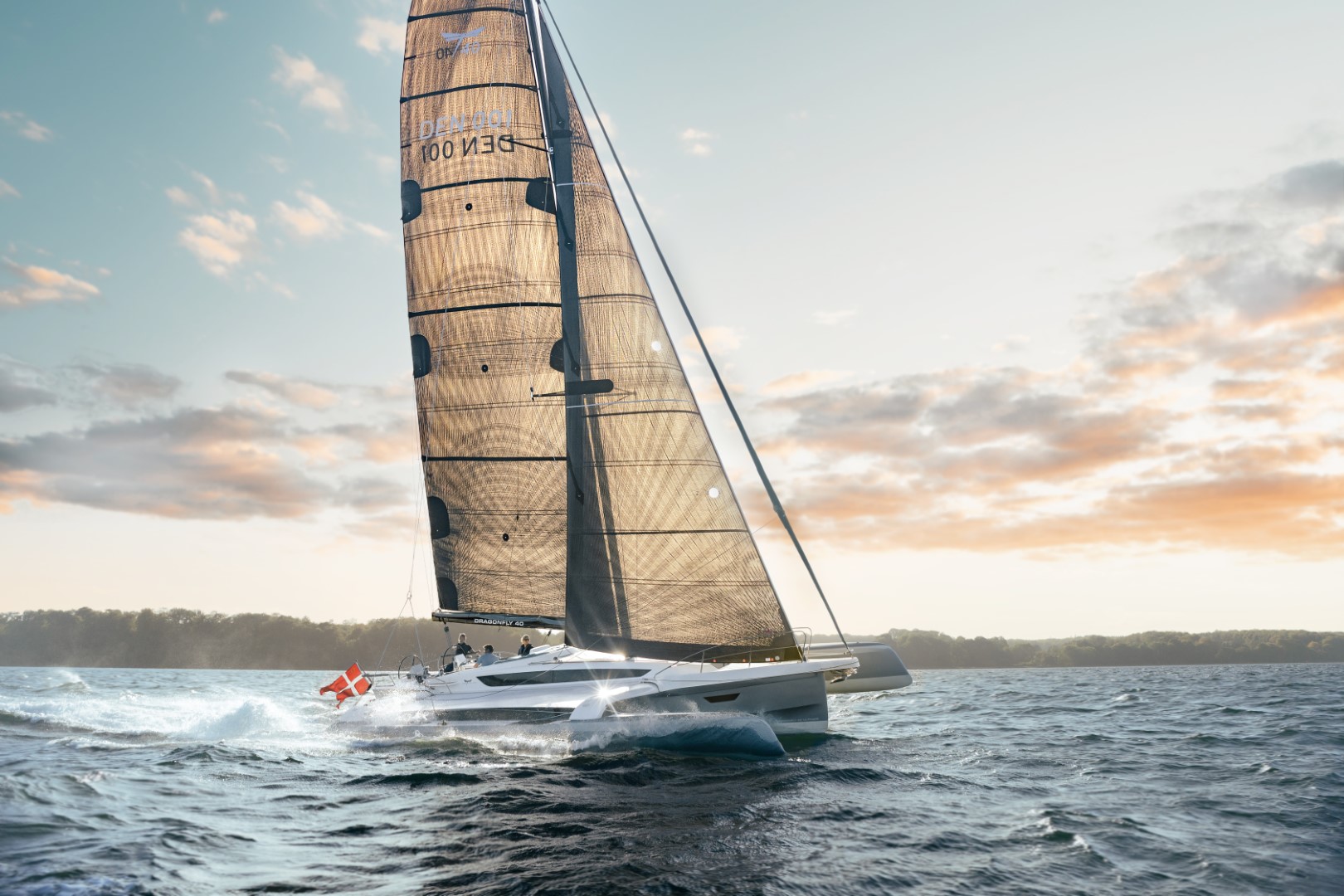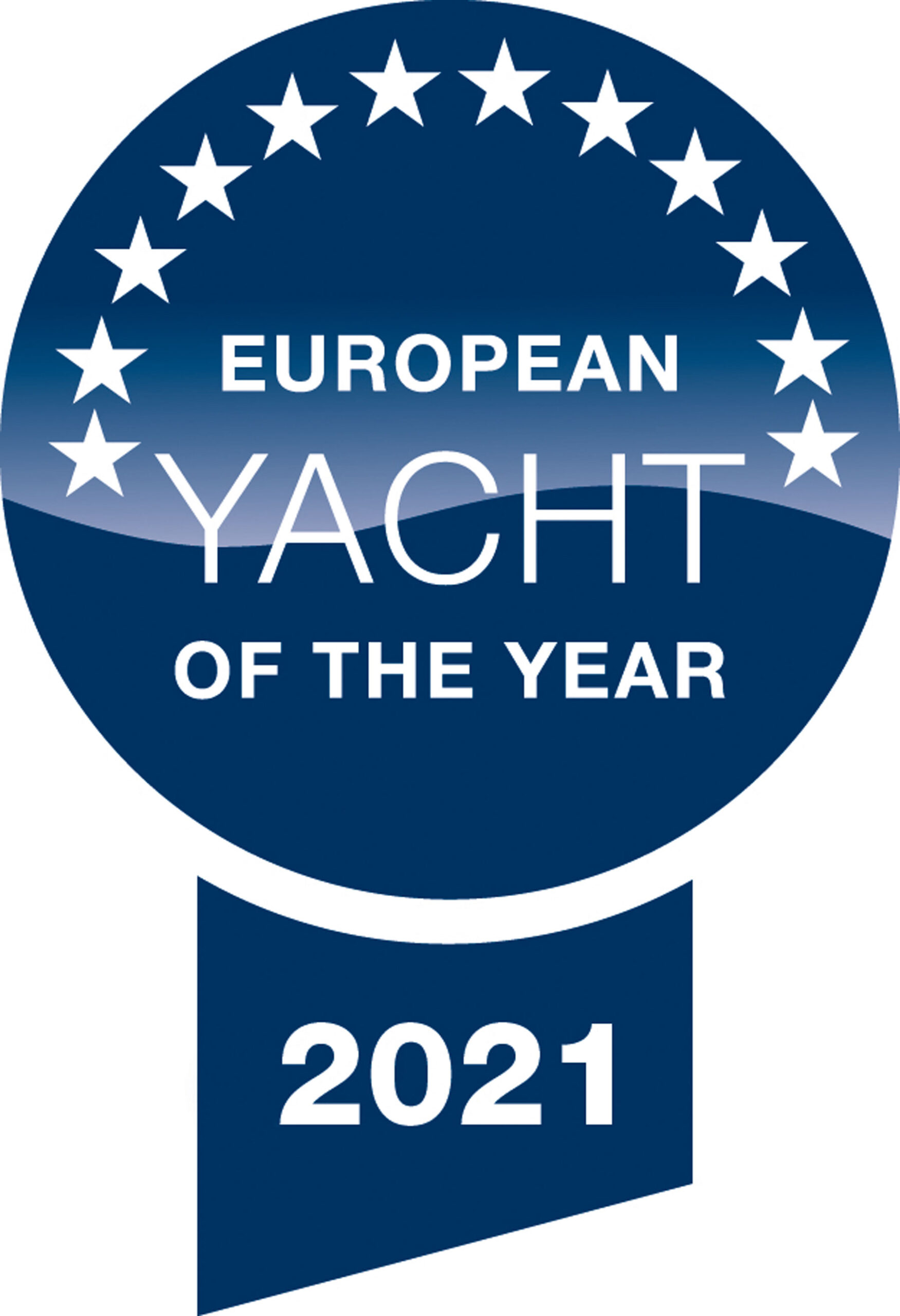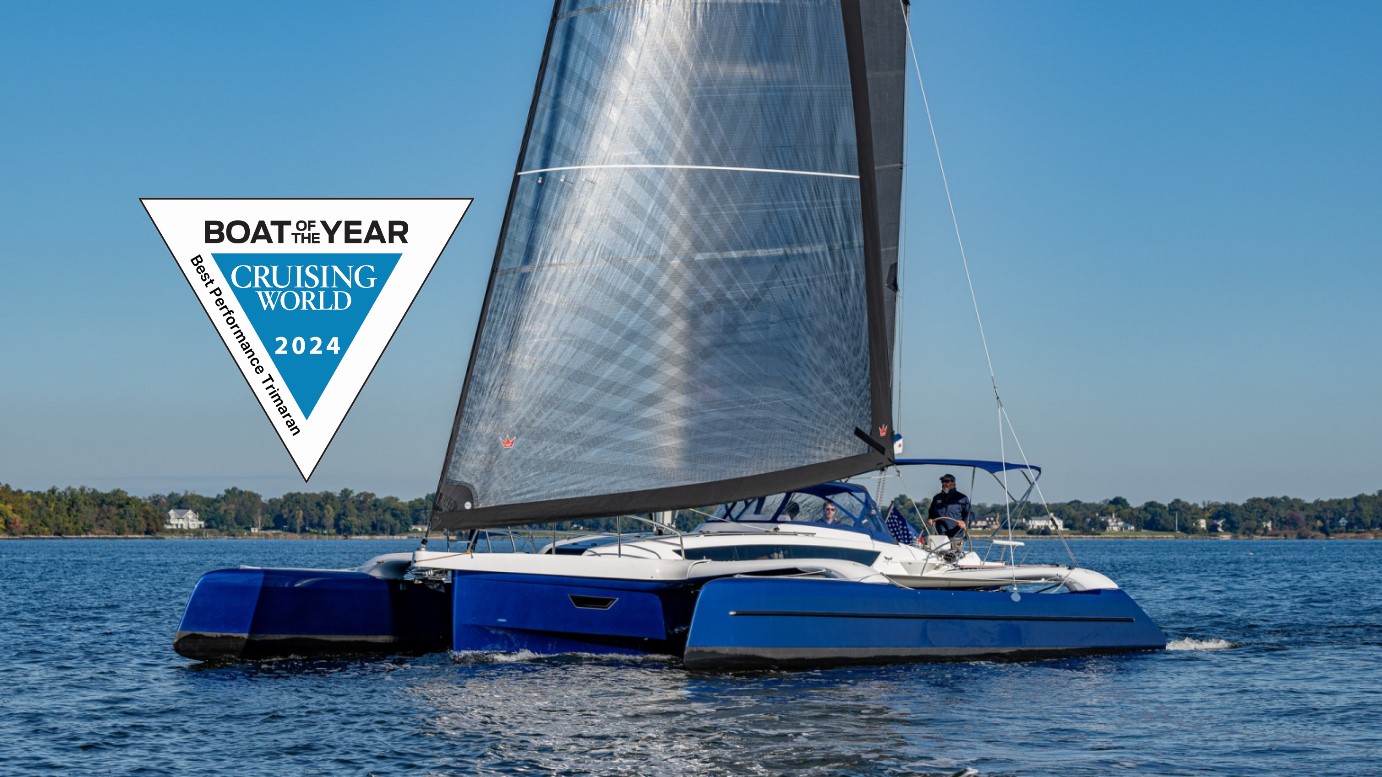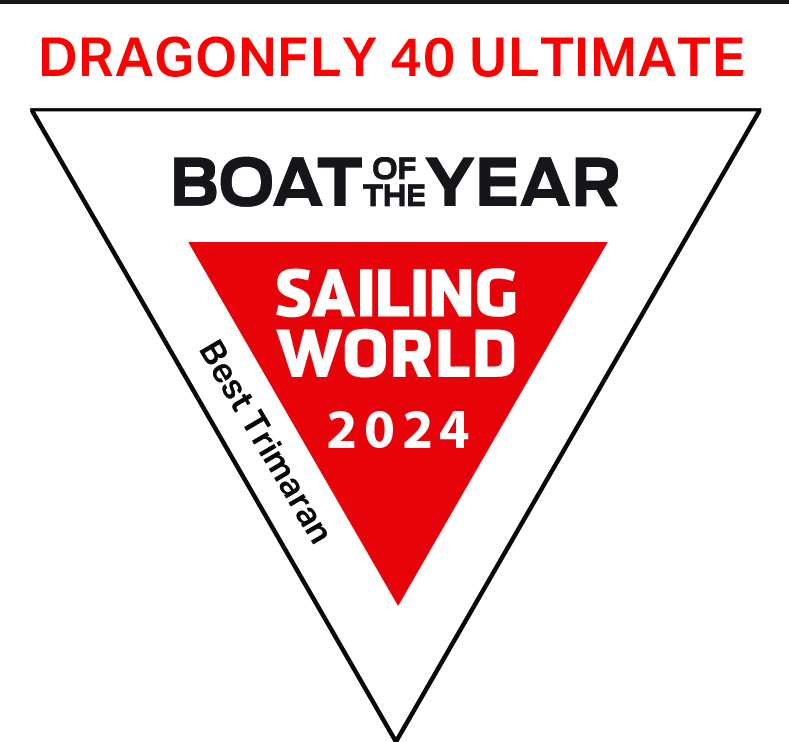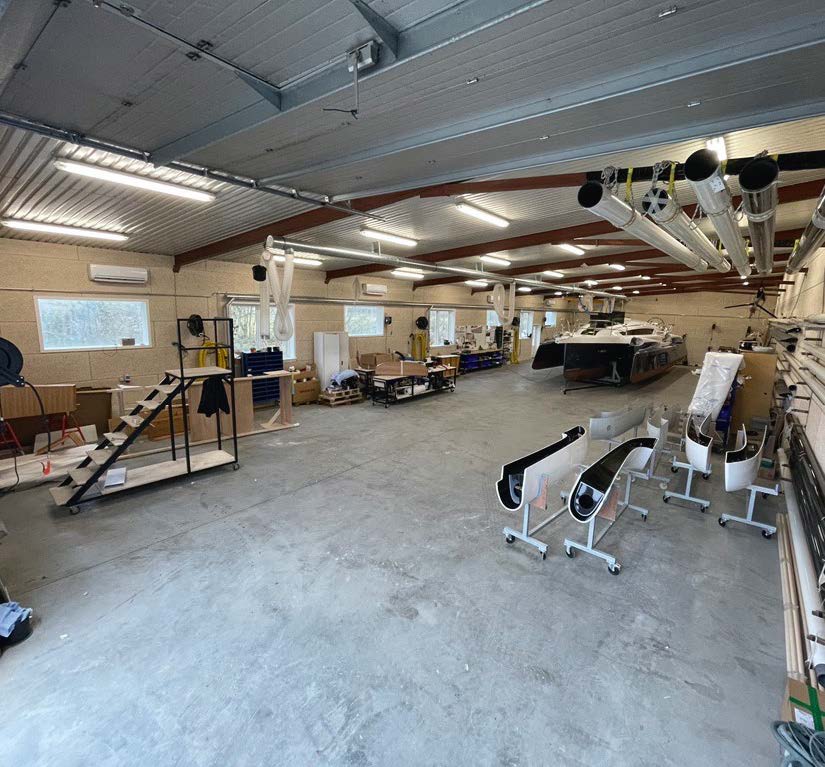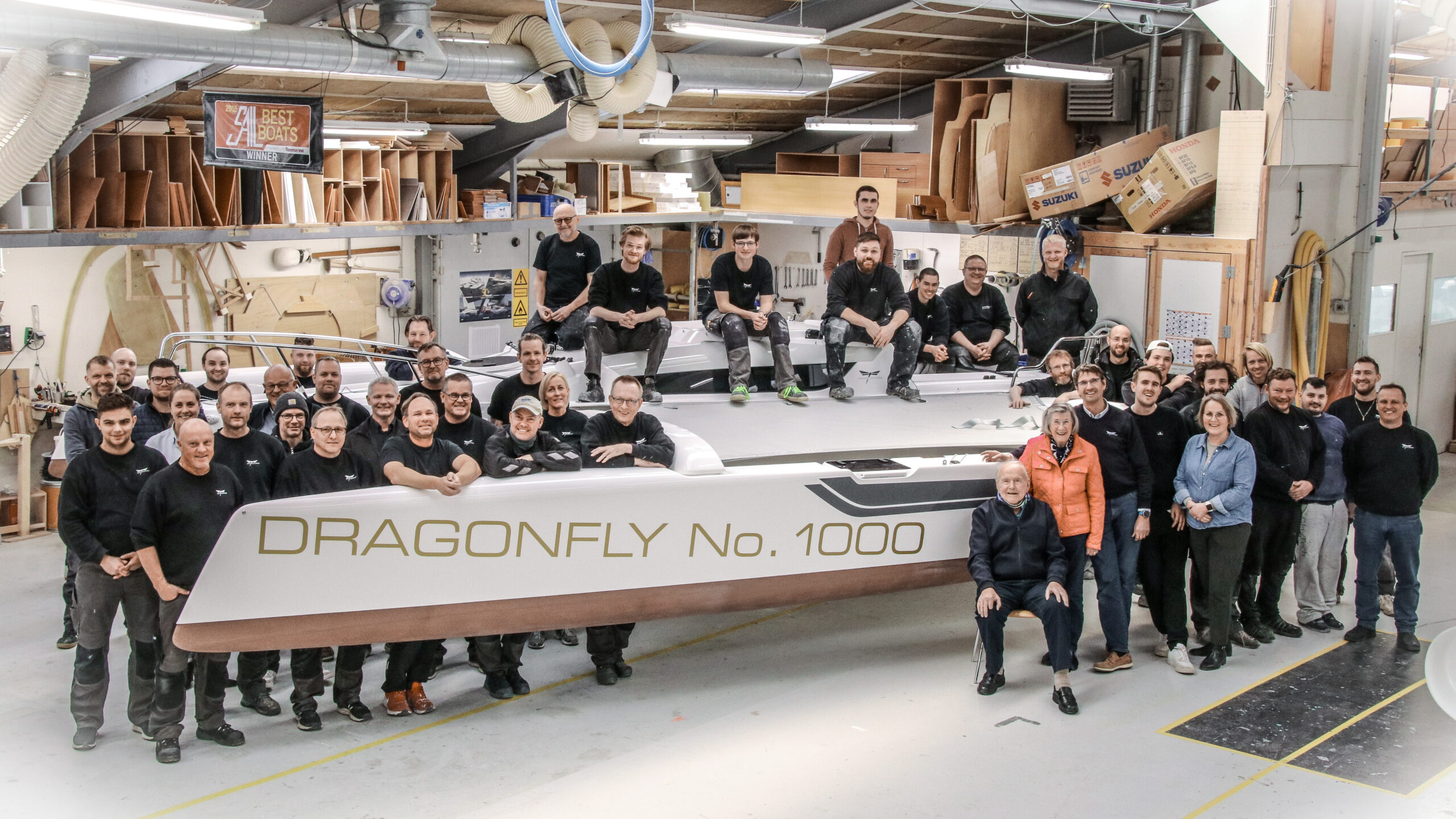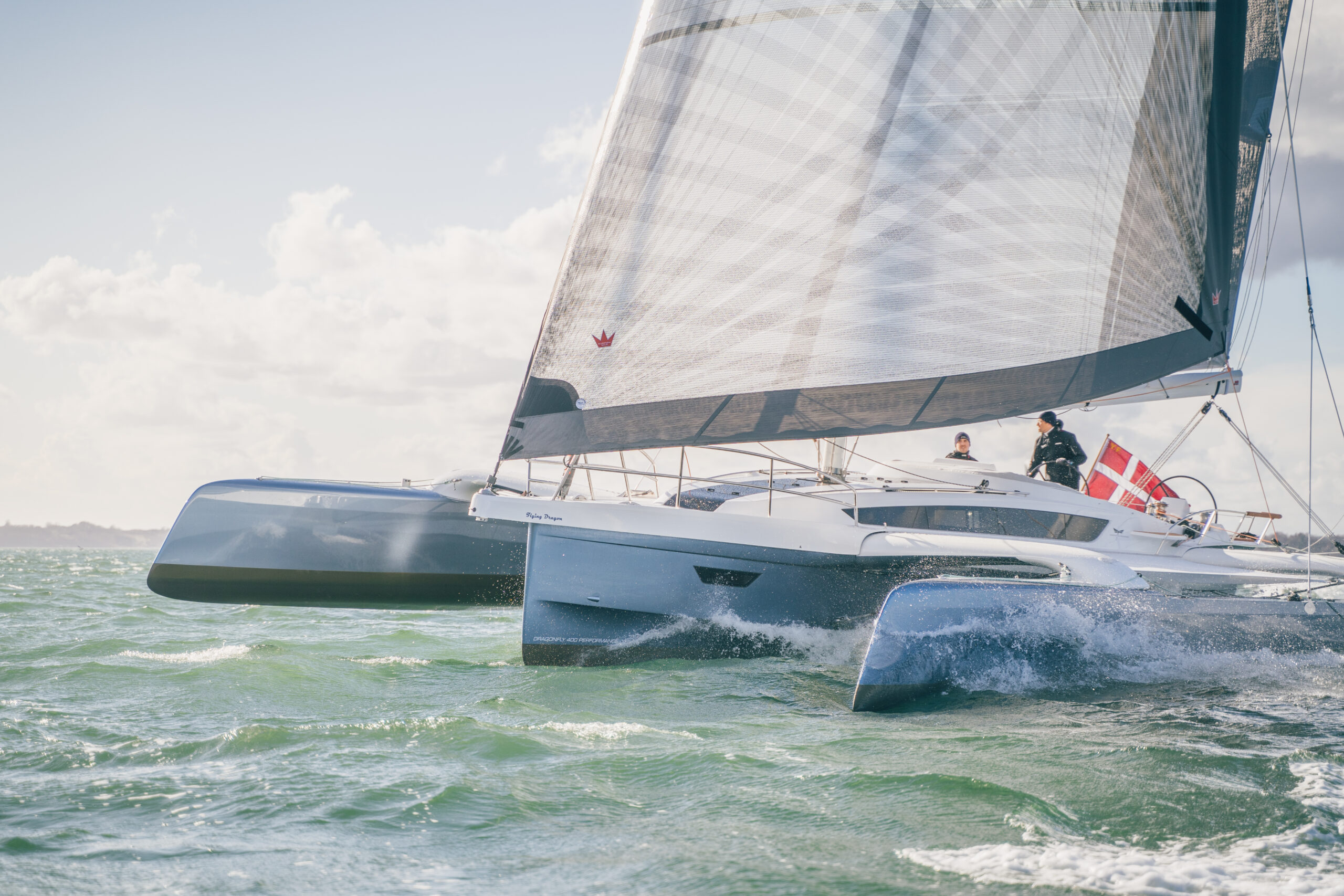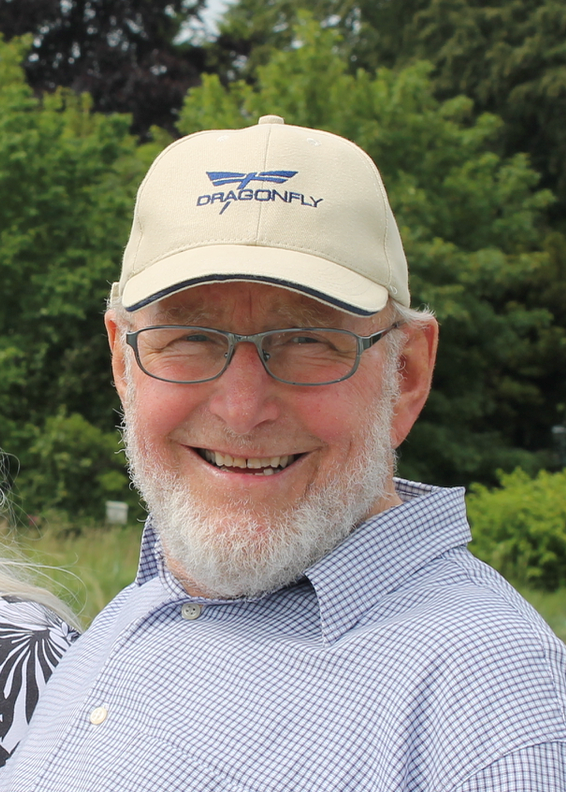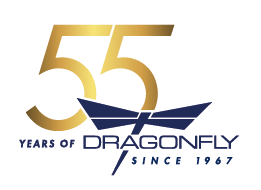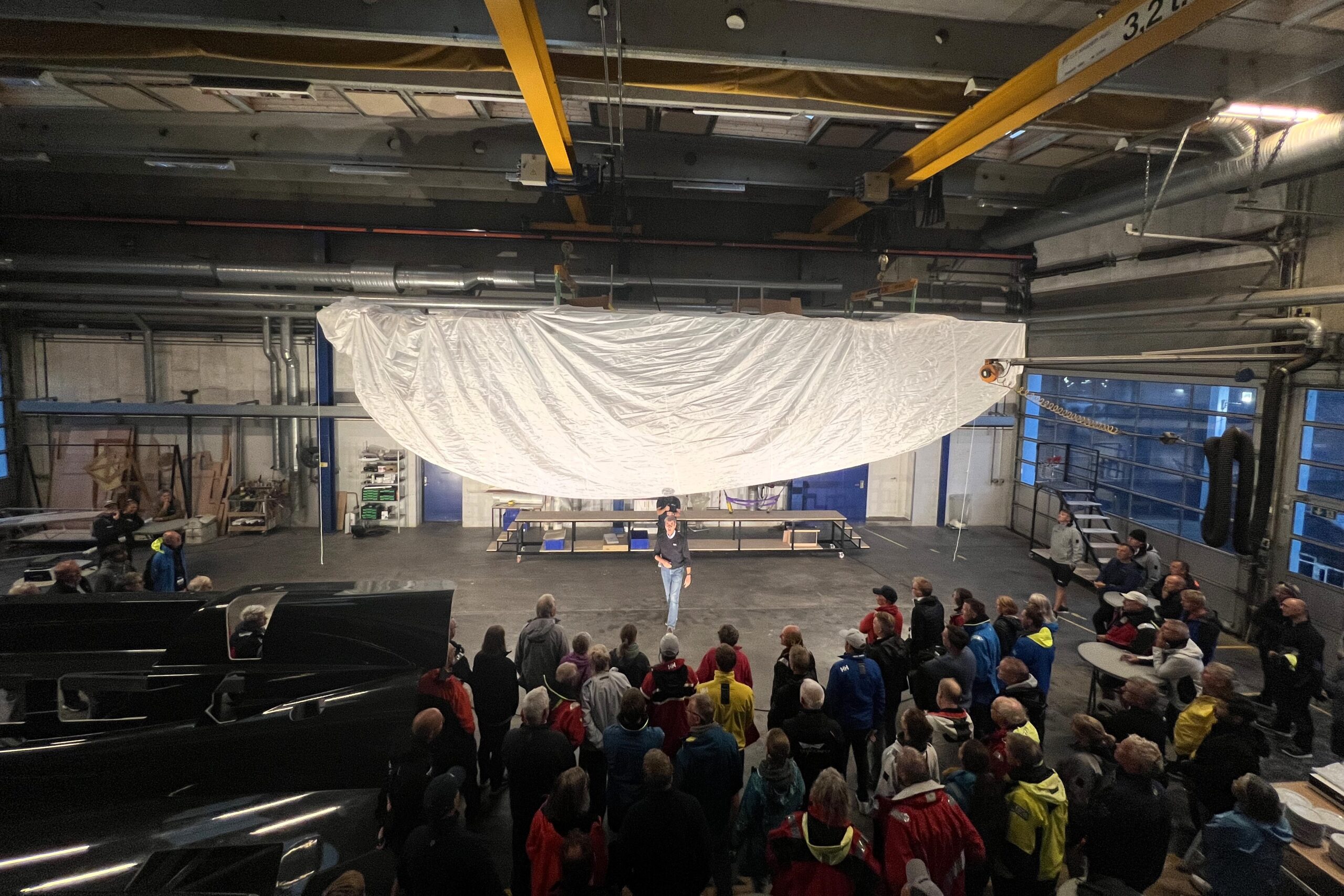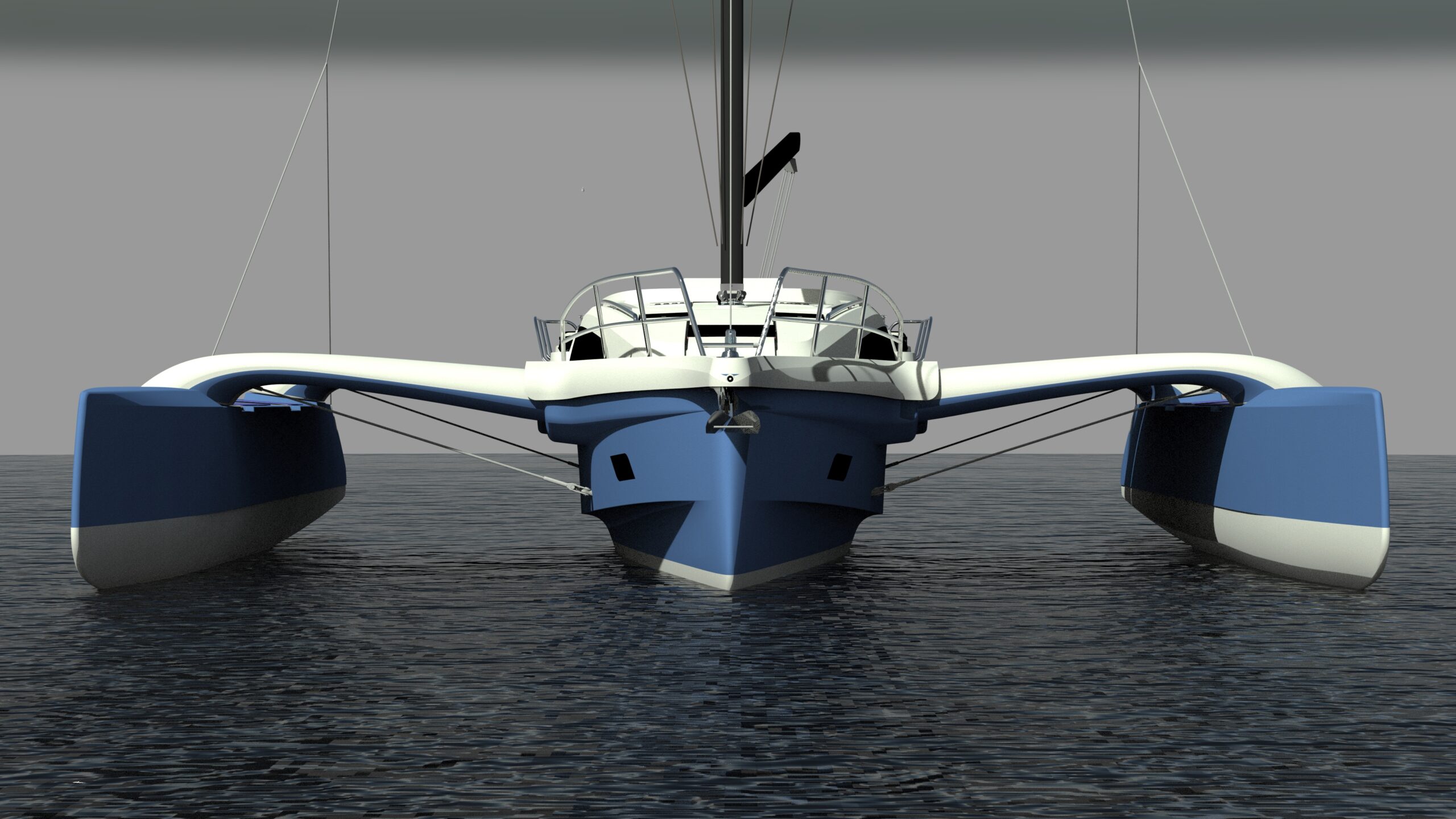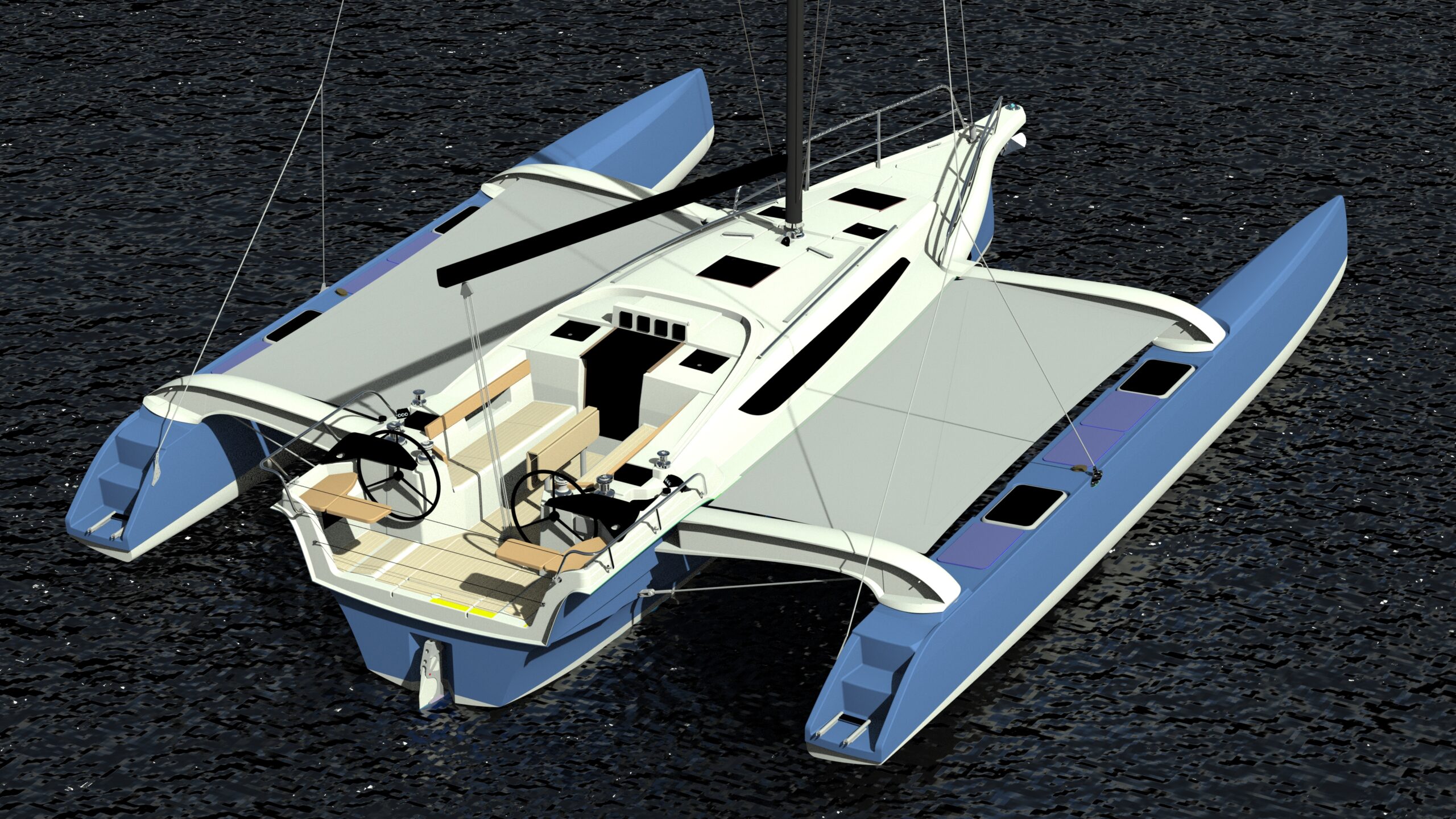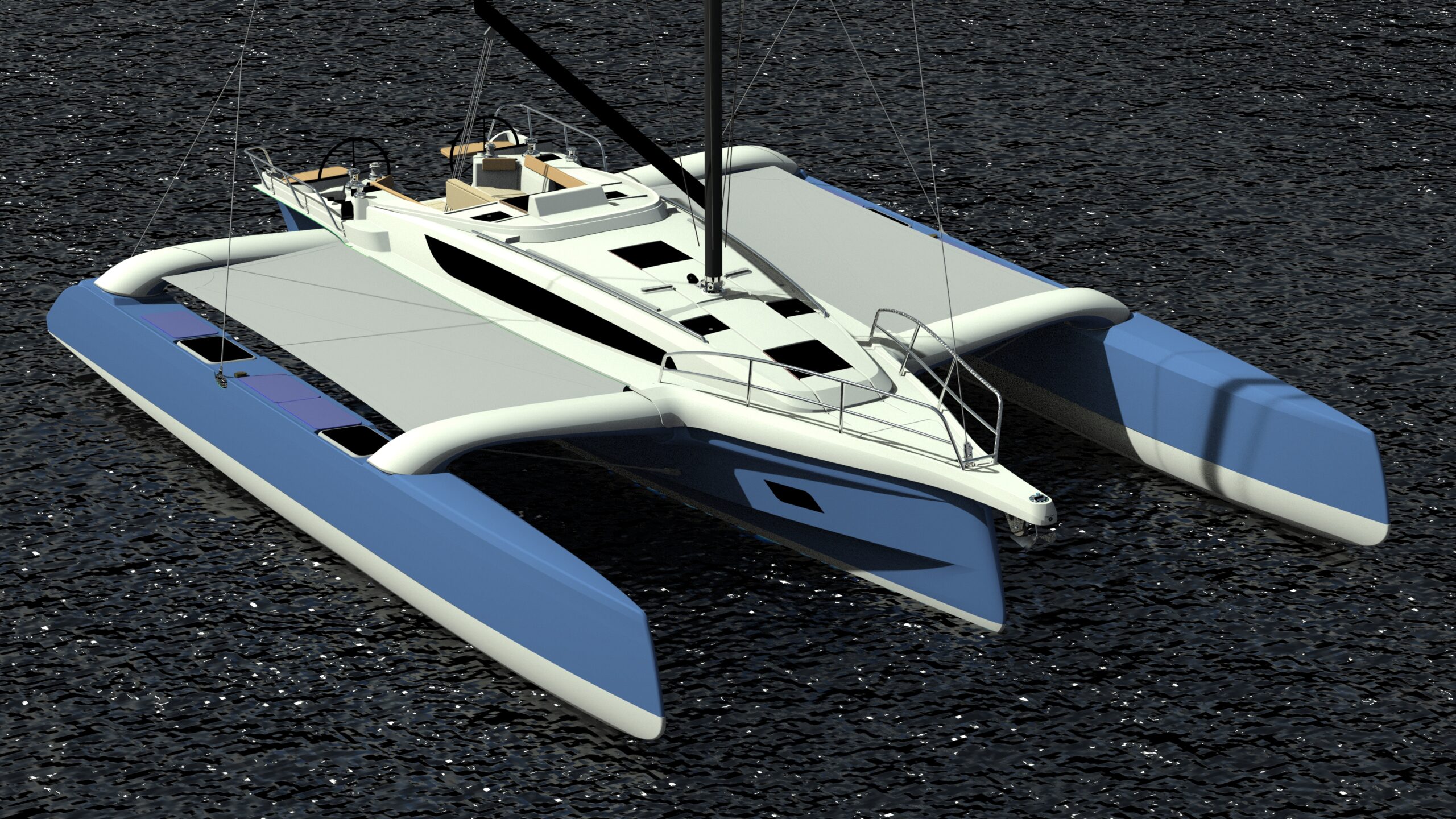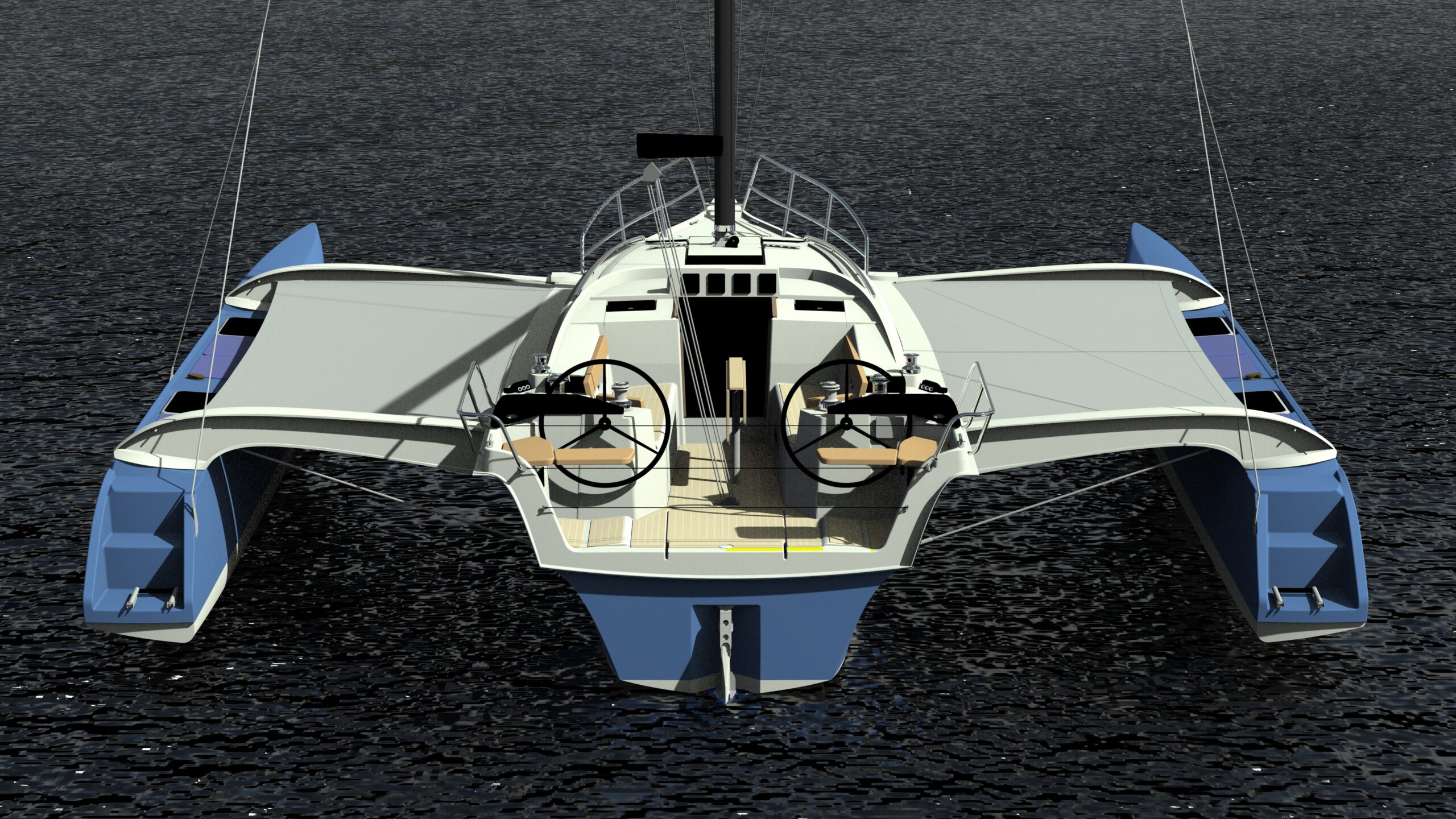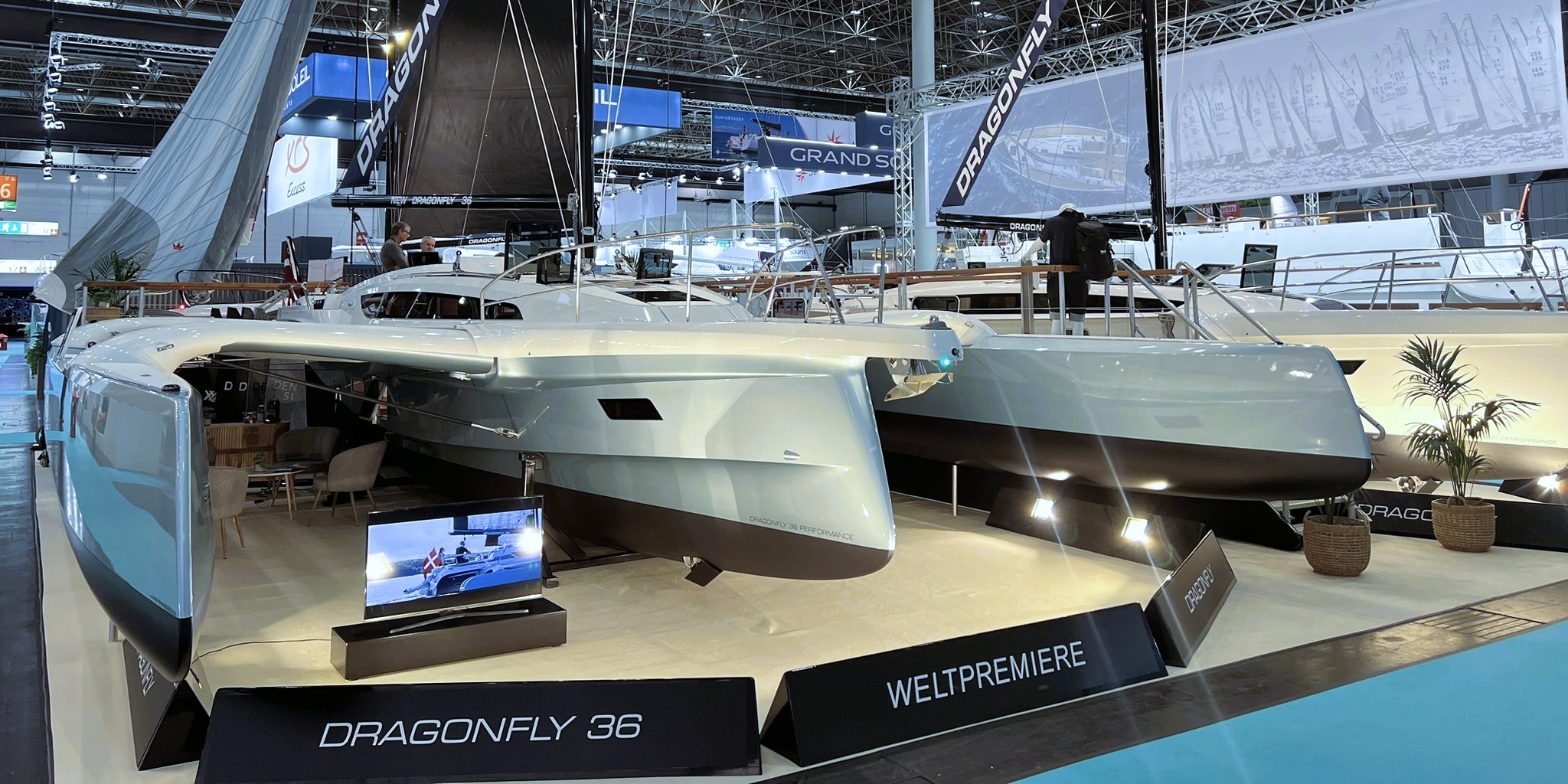Quorning Boats’ history is deeply rooted in family and passion for the sea. Founded by Børge Quorning, the company discovered the trimaran in America, revolutionizing their lives and gaining widespread acceptance. The journey of this family business has been marked by constant development and innovation, with many remarkable people contributing to its success.
Today, Quorning Boats employs around 50 people and builds over 40 custom trimarans annually. Renowned worldwide, the Dragonfly trimaran symbolizes the company’s stability, courage, and love of sailing, making it a major player in the sailing industry. The story of Quorning Boats is one of a small family business from Skærbæk achieving global recognition.
55+ Years of modern boat building – same family, same Yard, and same concept – is something quite remarkable.
Please join us on our journey through rough and calm waters!
1966
Børge Quorning returned to Denmark after having worked as a boat builder in Canada. He was fueled by the ambition to build trimarans and make Europeans appreciate them.
Together with his younger brother, Bent Quorning, he bought a piece of land in Skærbæk and set to work on building a yard in 1967.
1967
Børge Quorning and his younger brother Bent started building the yard themselves in August 1967 with the only aim to build trimarans in Northern Europe. This is still the same building and production hall right next to the main office.
1968
The first boat was built at the yard, the Trident 28 designed by Børge, who at that time already had designed and built several trimarans in Vancouver in the early and mid-1960’s.
Børges mother Agnes baptized hull No 1. Jens is the small boy watching carefully, and, further to the right, Børge, Jens’ brother Eric, and Bent.
The Trident 28, hull no 1 was sold in 1969, unfortunately no more orders were placed, because the concept was still new and unknown to the market.
1969
Børge and Bent decided to make a safe decision and designed a traditional double-ended fishing and leisure boat, which was the beginning of the Luna 19 series.
In 1971 It was time to expand, the large double-ended Luna 26 was designed and built, and became very popular throughout the 1970’s. Later it was built with a small rig, which was quite popular at the time.
The second production hall was built in 1972 to get enough space for the Luna production. Today this is the center assembly hall.
1969-1973
Børge couldn’t stop thinking about trimarans, therefore he and Bent also started experimenting and began to build various trimaran prototypes (16′ – 24′) between 1969 and 1973 . The first one was the Trident 22, followed by the smaller Trident 19, both build in plywood and fiberglass.
In 1972 Børge built a smaller 16′ trimaran in plywood and foam for his two sons, Eric and Jens – starting their sailing adventure in an Optimist was not an option. This was the very first trimaran to be named Dragonfly, which also took the nickname “The Yellow One”, or “Den Lille Gule” in Danish. The hulls/crossbeams were tied together with thin line only – no bolts.
The Trident 24 was designed and built plywood and fiberglass as well.
1974
Børge and Bent parted ways. Bent started a new and modern boat yard facility in Middelfart and built the Safir powerboat range from 24-26-28 feet, which was quite famous at the time. Later, Bent played a major role for the Swedish Nimbus powerboat range in terms of development and production.
Børge started the first production trimaran range, the Trident 27 series, that was later produced in a very different version regarding the beam and rigging construction, built in GRP foam sandwich with balsa core. The production upscaled until 1979.
Many of these boats were delivered only half completed to be partly homebuilt.
The Trident 27 was the realisation of the vision that Børge had from the beginning, so it is an important boat in the history of the company. It was the first major step towards the range of Dragonfly Trimarans known today.
1978
“Quick Step” a 28 feet Trimaran was built, based on the center hull from the Trident 27, but longer and with new float design – these floats became the future design up till the mid-1990’s.
Quick Step was the first real racing breakthrough for Børge, as he and his two sons won the “Round Zealand Race”, crewing Gunner Dalgaard as well. Jens and Eric were only 16 and 18 years old. Over 1,500 boats participated in this race in rather rough weather conditions.
In 1978 Jens Quorning also started his apprenticeship at Quorning Boats. This was a natural step, as Jens had spent most of his life with his father at the yard, since the yard was founded.
Later in 1978, Eric became the first multihull sailor to set a record in the prestigious record-breaking trophy The Silver Spinnaker round Zealand, where the number of hulls and sails was no limited. Jesper Bank, a well-known Danish professional sailor, was among Eric’s crew.
1979
The Luna 33 was launched, a full and exclusive planning trawler type (22 knots).
Due to the oil crises, it was difficult to increase sales and only 11 boats were built till 1981.
1980
The legendary 35 feet One Off Trimaran, Dragster, was built. The center hull was designed by Børge and built at Quorning Boats by the well-known Gert Frederiksen, who won the Little America´s Cup trophy in 1969.
Gert and Jens built the boat together. This project initiated Gert’s worldwide blocks and traveler series “Frederiksen” in Vejle, which was later bought by Ronstan.
Dragster won Round Zealand many times and won The Silver Spinnaker trophy with Jens as a member of the crew.
In 1980 the original and first trimaran production-series named Dragonfly 25 (MK I) was put into production, which was designed and built by Børge and Jens.
With no incoming orders and thus no employees at the yard, tese were very difficult times for Quorning Boats. However, it also started a new era for the company, where focus shifted to only building trimarans from here on.
1981
To test new markets, the catamaran Combi Cat was built at the yard in 1981. It was the only one of its kind, sold to a German client. The construction was based on the floats from the Dragonfly 25 (MK I).
1982
Børge designed a new 35 feet One Off Racing Trimaran for Jens, and together, Børge and Jens built the special plywood trimaran Quick Step II.
The goal was to win back the Round Zealand trophy The Silver Spinnaker. The year after Jens, his brother Eric, Erik Fruergaard and Hans Henrik Albrechtsen sat a record of only 19 hours and 27 minutes at the 235 NM race. They held the record for 25 years.
Quick Step II was even using foils on the floats, reaching top speed of 28 knots in 1983.
1985
With a trimaran each, Jens and Eric entered the famous 2-handed Round Britain & Ireland Race.
Eric in the Dragonfly 25 Magic Hempel built and modified by himself, and the smallest boat in the total fleet, crewing Erik Fruergaard.
Jens in Quick Step III, which had been rebuilt, now with a big new rotating wing section mast and extreme beam of 31 feet, crewing Bo Rasmussen.
Eric won the Boxhaul Trophy handicap, and Jens came in second place in this extreme tough 2,000 NM race.
This was for sure the international breakthrough for Dragonfly and the Quorning family.
1986
The Dragonfly 25 molds and tooling was sold to Canada to built on royalty basis for the North American market. However, th project was not succesful.
In 1986 the first and only monohull was built at Quorning Boats, the one-off 52 feet Vitesse, which was built on order to be the fastest monohull in Denmark. It was also the largest epoxy boat built in Denmark at that time
1987
A new Dragonfly 800 MK II came to life, with more room inside and with a centerboard, aluminium beams and still trailable.
In a standard Dragonfly 800 MK II, with Peder Vedel as crew, Eric and Jens won and were first ship home in the famous Färder Race in Oslo.
In 1988 Eric and Jens sat new record in the prestigious 550 NM Round Denmark race in a standard Dragonfly 800 MK II along with the third crew member Bo Rasmussen. Back then, this race was open for all hull designs and sizes.
Sailing th Dragonfly 800 MK II in Holland, Jens and Henrik Bøje Hansen won the European Championship in the Multihull Micro Class up till 26 feet.
1989
A new and updated Dragonfly 800 MK II was introduced. It was altogether the same boat, but with GRP composite wings, still not foldable. 6 boats were built.
In August 1989 the very first foldable Dragonfly, the Dragonfly 800 Swing Wing was built and for sure the biggest milestone in the Dragonfly history after years of development.
The system worked and the yard planned to have two production lines, folding and non-folding, as it was still very uncertain how and if the market would show an interest to this new type of folding product. However, the Swing Wing system really took off.
In 1990 Paul Elvström, one of the most famous yachtsmen in Danish sailing history, had his own private Dragonfly 800 Swing Wing built, with a 1.4 meter taller rigging than other 800 Swing Wings. Paul sailed this boat for 10 years, till he stopped his sailing career. This boat was an experimental boat and Paul gave many inputs to construction and design.
1991
The Dragonfly 600, a smal open trailable day sailor, was built, mostly for amusement. 11 boats were built.
Same year the third extension production building was made, which today is dedicated for the Dragonfly 28 assemblies.
Dragonfly 1000 Swing Wing was introduced to the market in late 1991. It was a big step to enter the market with a bigger and more cruising oriented boat. The Dragonfly 1000 Swing Wing had an inboard engine which was fast for the time being.
42 boats where built until the boat went out of production in 2002.
The Dragonfly 1000 Swing Wing was awarded Boat of the Year in USA in 1994, and the jury praised the boat for its construction. Reviews underlined the high performance and comfortable interior of this boat.
1993
On board the Dragonfly 800 Swing Wing, Jens and Henrik Bøje Hansen won the European Championship in 1993, in the Micro Multihull Class in Holland.
Jens Quorning became financially involved in the company in 1991, and in 1995 Jens took over the company after his parents Bit and Børge. Jens´s wife Lene started to take over the bookkeeping from Bit.
The yard underwent a serious makeover, with a new office building and 2 new production halls, including better and modern ventilation systems.
1996
The Dragonfly 920 Cruising was introduced to the market at boot Düsseldorf and became one of the yard’s huge successes. Up till 2008, 168 boats were built.
The Dragonfly 920 was still trailable, but had to be taken apart for transportation. This boat was one of the early and first production boats to introduce Carbon mast as standard.
In 1998 the GRP lamination section burned down to the ground, and the fire damaged many other sections of the yard.
Consequently, the production was set back quite some time, and many important molds were lost in the flames. It was a severe challenge to move on from here.
Same year the Dragonfly 920 Racing was introduced to the market. It was the same boat, but with a 45 cm longer mainsail boom to give more power.
2000
Entering the new millennium, Quorning Boats was very proud to present the new Flagship, the Dragonfly 1200 Ocean Cruiser (Swing Wing), a fantastic 40 feet folding trimaran, with a seperate aft cabin and various engine sizes for speed under power up to 16 knots.
18 boats were built up til 2007 and almost half of the boats were sold to the US market.
In 2000 Børge retired, but still had his own little workshop for private experimental projects at the yard.
Børge and Jens received the prestigious Danish Design Award for the Dragonfly 1200 design, which was handed over by his Royal Highness, Frederik, Crown Prince of Denmark.
The award is highly ranked in the Danish design industry and is probably the most prestigious award Quorning Boats has ever received among many other great awards.
2003
The Dragonfly 920 Extreme was introduced with 1.2 meter more beam and 1.5 meter taler carbon mast. It was a more powerful boat with fantastic upwind performance. The new Extreme version bosted the sales up until 2008.
The Dragonfly 920 Extreme was awarded as European Yacht of the Year in the category for all yachts up to 30 feet. This came quite unexpected and was a great honor to receive.
In 2025 the Dragonfly 920 Touring (from hull no 115) was introduced. It was similar to the Dragonfly 920 Racing version, but with new GRP curved beams as on the Dragonfly 920 Extreme version, which gave better performance in waves.
165 boats had been built up until 2008.
2005
A new era in design and construction began as 3D technology completely replaced former design techniques. Naval Architect, Steen Olsen, designed the Dragonfly 35, together with Jens Quorning, which was a complex boat with many moving parts.
Further the 3D technology was used to prepare plugs to be machined on 5-axis milling machines. This was – once again – the beginning of a new era for the company.
In 2006 Dragonfly 35 hull No. 1 was launched, this was a very challenging boat to build featuring avantæ-gade ideas, for example the kayak in the float and a cockpit rail to fold up to cockpit tent rail.
Even before the launch, the boat was a huge succes – 17 boats were sold before hull No. 1 was launched. The Dragonfly 35 was presented in a Touring- and Ultimate version.
In 2008 the Dragonfly 35 was awarded as European Yacht of the Year.
2009
The Dragonfly 28 replaced the Dragonfly 920. The Dragonfly 28 was the first Dragonfly to fold and trailer without having to disassemble any parts, except from lowering the mast.
The boat came in a Touring- and Sport version.
Due to the financial crisis in 2008, sales of boats decreased, but fortunately the Dragonfly 28, which was a small boat, played an important role in helping the company through some tough financial times.
In 2010 the Dragonfly 28 was nominated as European Yacht of The Year.
2011
Quorning Boats bought Faurby Yachts lamination shop. Faurby was the boat yard next door.
The facilities went through a total renovation, installing a top modern ventilation system among other things.
2012
The Dragonfly 32, a smaller version of the Dragonfly 35, was introduced to meet market requests of less expensive boats.
The Dragonfly 32 came in a Touring- and Supreme version. The Supreme version with a taller mast. This boat was at first designed for both in- and outboard engines.
In 2013 the Dragonfly 32 was nominated as European Yacht of the Year and in the same year awarded as Performance Boat over 30 feet by Yachts & Yachting.
Further, the Dragonfly 32 was awarded by SAIL Magazine in the category Best Multihull 31′-40′ in 2014.
2013
Quorning Boats bought the production facilities from Faurby Yachts, the next door business, which now houses the Dragonfly Service Center.
In 2014 Dragonfly 28, hull No. 100 was built – a milestone in the Dragonfly 28 production, which was celebrated together with the staff at Quorning Boats.
2015
The Dragonfly 25 was introduced to the market, a boat meant to get the attention of younger clients, with a Touring version with 10.5 meter alloy mast and a Sport version with 11.8 meter rotating Carbon mast.
In 2015 the Dragonfly 25 was awarded by SAIL Magazine as Best Boat, in the category Small Cruiser and as European Yacht of the Year in the multihull category.
2016
The Dragonfly 28 Performance was launched with new bigger wave piercing floats to enhance stability and fast sailing in strong wind conditions.
Further the deck design was upgraded with larger and more modern cabin windows.
New production set a new record of 52 new boats built in one year.
2017
Quorning Boats’ 50th anniversary celebration took place, a huge milestone for the company.
The 50th anniversary was celebrated together with both friends and employees and with Dragonfly owners during the first Dragonfly Days owners event.
2018
The Dragonfly 32 Evolution was launched, introducing the next generation wave piercing floats.
The Dragonfly 32 Evolution replaced the previous Dragonfly 32 Supreme, whereas the Dragonfly 32 Touring remained the same.
In 2019 the Dragonfly 32 Evolution was nominated as Multihull of the Year in the under-40-feet category.
2019
The Yard celebrated 30 Years with the Dragonfly Swing Wing system, designed by Børge and Jens in 1989.
This revolutionary system reduces the beam by more than 50% in less than one minute per side, without using tools and only by operating from the cockpit.
Another milestone in the Dragonfly 28 production was also reached in 2019 – Dragonfly 28, hull No. 200 was built.
2020
The World premiere of the new Dragonfly 40 Performance Cruiser took place at boot Düsseldorf 2020 in Germany.
After more than two years of development, thousands of man hours and big investments, the Yard could finally welcome a new member to the Dragonfly family
Same year the Dragonfly 40 was nominated as Multihull of the year, by the British Yachting Awards.
2021
The Dragonfly 40 was awarded as European Yacht of the Year in the Performance Cruiser Category. This was Quorning Boats’ 4th EYOTY award.
Later the same year, the Dragonfly 40 was nominated as Best Boat, by Sail Magazine and awarded as Multihull of the Year, by Multihull Magazine, in the under-45-feet category.
In 2024 the Dragonfly 40 was awarded as Boat of the Year, by Cruising World in the category Best Performance Trimaran, and by Sailing World in the category Best Trimaran.
2021
In August 2021, Peter Quorning started his apprenticeship at Quorning Boats and is the third generation to take over the company.
The company also expanded their production facilities with a new assembly line to build the Dragonfly 40. This provided more space for the entire Dragonfly Range in the production section.
2022
In primo 2022 Trimaran No. 1000 was built! Børge was proud to experience this and said that now his dream is real.
On March 22nd 2022 founder of Quorning Boats, Børge Quorning passed away at the age of 90 years.
Once again, the Yard reached another milestone in the Dragonfly 40 production – the launch of the first Dragonfly 40C Performance, hull No. 9, which was built in cooperation with Marström Composites in Sweden.
In August 2022 Quorning Boats’ 55th anniversary celebration took place together with another milestone in the Dragonfly 28 Production – Dragonfly 28, hull No. 250 was built at the Yard.
2024
In late 2024 a significant leadership transition occurred at the company when Peter Quorning became Vice President.
This strategic move marks a new chapter in the history of the company, symbolizing both continuity and innovation.
Peter’s appointment as VP is seen as a natural progression, given his deep understanding of the company’s operations and his vision for its future.
Working closely with his father, Jens Quorning, who has been at the helm for many years, Peter aim to blend the company’s rich heritage with modern business practices.
2024
The Yard finally introduced the new Dragonfly 36 Performance Cruiser to the world. The Dragonfly 36 was introduced in two versions, the Dragonfly 36 Touring and the more powerful Dragonfly 36 Performance with a taller mast.
The production of the Dragonfly 36 marks a new era for the Dragonfly Swing Wing System, which is now a full composite system for the first time in history of the company.
After more than 2.5 years under development the World Premiere of the Dragonfly 36 took place at boot Düsseldorf 2025 – It was a huge succes and with 19 boats sold before the launch of hull no 1, the future for this new model seems bright.
